

16 of the Best Places to Visit in Lombardy, Italy
If the combo of – historic towns and cities, UNESCO World Heritage Sites, and lake & mountain views – sounds tempting to you, you’ll love this list of some of the best places to visit in Lombardy, Italy ( Italian: Lombardia ).
Each Italian region is a world in itself, and trying to sum up its essence in a few sentences is impossible, but hopefully, this post will give you an enticing glimpse into what awaits you in Lombardy.
* This post may contain affiliate links from which I earn a commission (for more info, read my disclosure ). As an Amazon Associate, I earn from qualifying purchases.
* I try to keep the information on this blog as updated as possible, but I still recommend consulting the latest prices, opening hours, and other details on the official website of each site, hotel, and tour, as well as checking the updated public transport routes and timetables.
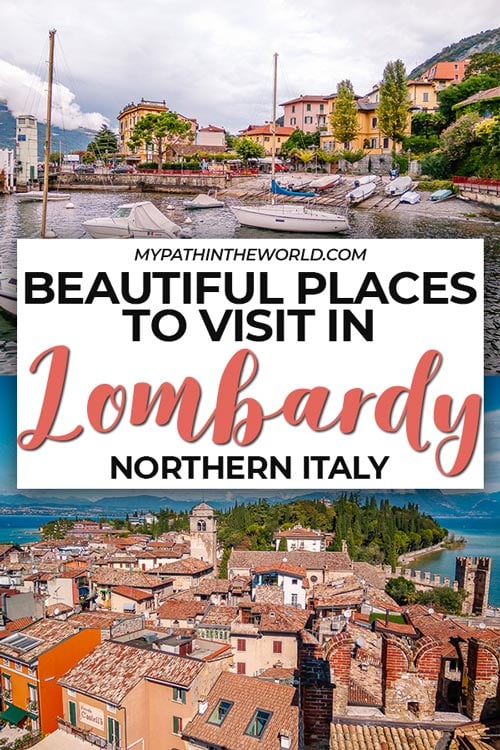
Table of Contents
What Is Lombardy Known For? Why Is It Worth Visiting?
Northern Italy in its entirety is a traveler’s paradise, and Lombardy, its central region, is no exception.
Anyone can appreciate its big cities steeped in history and packed with landmarks, quintessential towns, beautiful villages waiting to be discovered, and sprawling landscapes of mountains, lakes, rolling hills, and valleys.
Culturally and gastronomically, it’s a heaven for art and architecture fanatics, wine lovers, and foodies who love their comfort food. It’s also an industrial hub and one of the richest regions in Italy.
Trust me, there are so many things to do in Lombardy that you will never be bored.
Best Places in Lombardy, Italy – Map
Renting a car is definitely one of the best ways to explore Lombardy, though it’s very much possible to plan an itinerary that only requires the use of public transportation.
Access the MyMaps interactive map of Lombardy here .
Tip: After accessing the map, you can also open it on your Google Maps app. Simply open your app, tap the ‘saved’ icon at the bottom, scroll down and tap the ‘maps’ icon, and choose the MyMaps map you want to see (you can do the same on your computer).

Some of the Best Places to Visit in Lombardy, Italy
Lago d’iseo (lake iseo).
By Lynne from Wander Your Way
Lago d’Iseo is often considered the “romantic” lake in northern Italy because it’s much smaller than its neighbors, Lago di Como and Lago di Garda.
It’s roughly a 2-hour drive from Milan so you can visit this lake on a day trip from the capital city of Lombardy, but you’ll want to stay for a few nights as there are lots of things to do, and it is simply a wonderful spot to slow down.
There are small towns dotting the shores such as Iseo, Sulzano, Clusane, Sarnico, Lovere, and Pisogne. In the middle of the lake is the beautiful little island, Monte Isola, to which you’ll definitely want to take a ferry.
Cars are banned on this island, so it’s a fabulous place to get into nature and enjoy some peace and quiet. There are a few small villages in Monte Isola, trails to walk or bike on, and a few spots to actually stay the night.
The hike up to Sanctuaria della Madonna di Ceriola is also a must for those who are able to do so. The sanctuary is gorgeous, and the views are stunning.
Whatever you choose to do, Lago d’Iseo is a must for your time in Lombardy.

By Dhara from It’s Not About the Miles
Mantua (called Mantova in Italian and Mantua in Lombard) is a must-visit destination in Lombardy! Still locked into medieval times, Mantua offers a rich blend of history, great sights, and good food and drinks.
Touring the gorgeous Palazzo Ducale should be at the top of your itinerary for Mantua. Built in medieval times by the powerful ruling Gonzaga family as their residence, the complex features beautiful frescoes and decorated ceilings (especially famous is the Camera degli Sposi room).
Another must-visit palace in Mantua is Palazzo Te, where the frescoes in the Sala dei Giganti will take your breath away. Also do not miss the Basilica of Sant’Andrea, one of the best examples of Renaissance architecture in Northern Italy.
Mantua is known for its fabulous food, from tortelli di zucca (pumpkin pasta with nutmeg – yum!) to torta sbrisolona , a crumbly cake with almonds.
While Mantua makes for a wonderfully relaxed multi-day stay (it’s nowhere near as crowded as many other places in Italy!), it is also perfect for a one-day visit. In fact, it is one of the best day trips from Bologna you can do, or from Milan, by train.

Sirmione, Lake Garda
Known as ‘The Pearl of Lake Garda’, Sirmione is a gorgeous town situated on the southern shore of Italy’s biggest lake.
Offering an intriguing mix of historical landmarks, picturesque alleys, thermal baths, and even a couple of beaches, it’s a unique resort town you cannot miss in Lombardy.
Start by exploring Sirmione’s most famous sights, including the Roman ruins of the Archaeological Site of Grotte di Catullo, the medieval Church of San Pietro in Mavino, and the 13th-century Scaligera Castle (don’t skip out on climbing its highest tower to enjoy the most magnificent panoramic views).
Next, wander through the town’s enchanting streets, marveling at the bougainvillea-covered stone houses and devouring some delicious gelato.
You can also unwind in a thermal bath, soak up the sun on Jamaica Beach, and take a boat tour around the peninsula .
Visit Sirmione in late spring, early summer, or early fall to avoid the crowds and have the best weather.

Salò, Lake Garda
By Lisa from Following the Rivera
Located on the western side of Lake Garda is the town of Salò. In a town not as well-known as Sirmione and Bardolino, there’s plenty to fill a 1-day itinerary.
Given its location, it’ll come as no surprise that one of the best things to do in Salò is to walk the lungolago (promenade). Walk the entire length, taking in the scenery of the lake on one side and colorful buildings on the other.
Along the lungolago are several main points of interest. One notable landmark is the Palazzo della Magnifica Patria.
As its name suggests, it was once a former palace building, but today is home to Salò’s town hall. Recognizable by its grand portico, beneath it you’ll find a historic coat of arms and commemorative plaques.
Other sights to see include the town’s cathedral, the 15th-century Duomo di Salò, and the 13th-century clock tower (Torre dell’Orologio).
The plain exterior of the church gives nothing away to the mesmerizing scene that awaits inside. Located on the western side of the town, the clock tower was used to reinforce the walls from unwanted intruders.
A charming town on Lake Garda’s western coast, Salò is one that’s definitely worth seeing.

Desenzano Del Garda, Lake Garda
Within a 20-minute bus ride from Sirmione or a 25-minute train ride from Verona, you’ll get to the beautiful Desenzano del Garda, the largest town on Lake Garda and a popular holiday destination since Roman times.
Known for its nightlife, beaches, landmarks, and views, Desenzano del Garda offers more than enough things to do and see.
Explore its Roman remains at the Villa Romana, admire its 11th-century castle, visit the Duomo di Santa Maria Maddalena, and wander around Piazza Malvezzi, the old port, and the Venetian bridge.
You can also walk along the lungolago (promenade), roam the streets of the historic center, and visit the Archeological Museum.

Limone Sul Garda, Lake Garda
Located in the northwestern part of Lake Garda, Limone sul Garda is a picture-perfect lakeside town surrounded by incredible natural landscapes.
An ideal stop on an Italian lakes road trip , here you can have a leisurely stay, engage in outdoor activities, or get to know the town’s historical and cultural sides.
After roaming around Limone’s charming streets, visit the Fishermen’s Museum, Museum of Tourism, or the lovely Limonaia del Castèl, an 18th-century citrus garden with unique Lemon Houses and a small museum dedicated to citrus growing in the area.
To enjoy the views, walk or cycle along the shoreline, relax at Cola Beach, or take a hike in the surrounding area.

By Krisztina from She Wanders Abroad
If you’re looking for the most beautiful places in Lombardy, you can’t miss Como! Located at one of the southern branches of Lake Como, close to the Swiss border, Como is one of the most popular tourist destinations in Italy.
It’s actually one of the best places to stay in Lake Como , especially if you’re visiting for a shorter time, as Como is the easiest part of the lake to reach from Milan. You can hop on a train, and within 1 hour you’ll be in this beautiful lakeside town!
There are plenty of things to do in Como, including visiting the Como Cathedral, taking a cable car ride up to Brunate for panoramic views, strolling around the lakefront, and indulging in some delicious gelato.
You also can’t miss the Life Electric Monument, which is a really cool, unique piece of public art.
If you’re looking for even more things to do, you can take a short boat ride to one of the other lovely lakeside towns like Bellagio or Varenna.
If you’re feeling adventurous, you can even take a day trip to the Swiss city of Lugano, which is just a short train ride away. No matter what you decide to do, Como is sure to impress.

Varenna, Lake Como
Founded by fishermen in the 8th century, Varenna is, without a doubt, one of the best towns in Lombardy to visit at least once. Its colorful buildings, medieval alleys, and mountainous backdrop are all you need to have a joyful moment.
Lake Como is famous for its villas, many of which belonged to noble European families in the previous centuries and now function as hotels, museums, or event venues.
An unmissable one located in Varenna is the 18th-century Villa Monastero, which offers a visit to its house museum and majestic botanical garden.
If you’re up for something a bit more active, you can also walk up the hill to the historic Vezio Castle, and don’t forget to climb its tower to enjoy amazing panoramic views over the lake.

Bellagio, Lake Como
Considered ‘The pearl of Lake Como’, Bellagio is a picture-perfect town situated right at the junction of the lake’s three legs.
Its charm is best discovered on foot when you roam through its enchanting center and walk along the promenade. The narrow cobbled alleys house more than enough restaurants, gelato shops, cafes, and souvenir shops, which are a delight to explore.
Bellagio is also home to the imposing 19th-century Villa Melzi D’Eril and the 15th-century Villa Serbelloni, both of which offer a visit to their extravagant gardens. The latter requires an online reservation – note that you must book a guided tour.
In addition, Bellagio is a great base to explore the rest of Lake Como, with ferries getting to more than 20 lakeside towns.

Music, culture, and history buffs – this one is for you. Cremona might not be the first city that comes to mind when planning a trip to northern Italy. Yet, it’s impossible to ignore the birthplace and home of the legendary violin maker Antonio Stradivari.
Cremona kept the tradition of violin craftsmanship alive for centuries, so it’s no wonder it was listed by UNESCO as an Intangible Cultural Heritage.
You can find many violin shops across the city, as well as pay a visit to the Violin Museum, perfect for learning about its history and marveling at Stradivarius instruments.
Located in the Po Valley near Lombardy’s border with Emilia-Romagna, this city has a lot more to offer.
From its impressive cathedral and charming historic center to the Archeological Museum and Ala Ponzone Civic Museum, Cremona proves that underrated cities are a force to be reckoned with.

By Megan from Megan & Aram
Bergamo is easily one of the most underrated destinations in Italy (and certainly in Lombardy). The Italian city is a UNESCO World Heritage Site and is a quiet escape from the busy streets of Milan (and is one of the best day trips).
Located at the foothills of the Alps, Bergamo’s most famous district is the Citta Alta (or Old City), perched up on a hill overlooking the newer part of the town.
In the Old City, you will see medieval towers and Venetian Walls, and people flock from all over the world to check them out (and watch their famous football team, Atalanta).
Inside the Citta Alta, you will find famous Lombardy tourist attractions such as the Santa Maria Maggiore Basilica, the Cappella Colleoni, and the Temple of S. Croce.
While there are plenty of sights to see, one of the best things to do in Bergamo is eating! The city is famous for casoncelli , a local pasta dish with pancetta, sage, and butter sauce. And, it is also renowned for its stracciatella (it is the home of it!) and polenta.
There are plenty of reasons to visit Bergamo, and it is one of the easiest cities to visit in Lombardy – with domestic and international flights arriving at its airport and train access from all major cities (often via Milan).

By Phil from JOURNICATION Travel Blog
One of the best cities in Lombardy you should not miss out on is Monza.
There are many things you can do here, like checking out some of its fascinating attractions. These could be Autodromo Nazionale Monza, Parco di Monza, Cappella di Teodolinda, and more.
And what about visiting the best museums in Monza? These include Museo e Tesoro del Duomo di Monza, Musei Civici Monza Casadegli Umiliati, Galleria Civica, Mulino Colombo, and others.
Checking out Monza Cathedral is another thing you must do. Every year, countless tourists visit this structure to get a firsthand view of its magnificent architecture. Although there are numerous religious buildings in Monza, this one seems to stand out.
Finally, there are some beautiful gardens in Monza that are worth exploring, like Roseto Niso Fumagalli and Giardini Della Villa Reale. Please ensure to find out their visiting time since they vary.
If you are looking for more hidden gems in Northern Italy , make sure you expand your route to South Tyrol to explore the best things to do in Bolzano (known as one of the best Italian winter destinations ).

By Mariana from Road Trip Euro Guide
Don’t be completely swept away by the northern lakes, because the vibrant city of Milan is one of the best destinations to visit in the Lombardy region of Italy – and here’s why!
From world-renowned museums and art galleries to fashionable shopping districts and delicious restaurants, Milan is literally the “IT City”.
History buffs will love exploring the city’s ancient ruins and grand churches, while fashionistas will enjoy browsing the chic boutiques and flagship stores – think runway fashion, trendsetters, and Dolce Gabanna.
Not only that, but Milan is home to some of the most iconic sights in the country, including the Duomo, Galleria Vittorio Emanuele II, La Scala opera house, Castello Sforzesco, and the UNESCO-listed church of Santa Maria delle Grazie (which houses Leonardo da Vinci’s Last Supper mural).
Foodies will be in heaven sampling the north Italian cuisine but also keep in mind that this is an international city at heart, with quite a few top-rated restaurants hidden away, so get on that reservation game and eat your way through Milan.
So while it’s not a hidden Gem in Italy , it is one of the best places to visit while in the Lombardy area.
- 4 days in Milan
- Milan off the beaten path
- What to do in Milan on a rainy day
- Road trips from Milan
- Day trips from Milan in winter
- Milan or Turin

Situated near Lake Varese and Lake Maggiore, Varese is known as Garden City. That’s due to the abundance of luxurious villas it houses, each boasting its own marvelous park or garden. Of course, you have to visit at least a few of them.
Some of the most prominent ones are Villa Mirabello, Villa Mylius, Villa Panza, and Palazzo Estense, an 18th-century Baroque-style palace built for the Duke of Modena and Reggio -Francesco III d’Este.
Another great reason to visit Varese is to go up to the UNESCO-listed Sacro Monte di Varese, nestled in the Regional Park of Campo dei Fiori.
It is a 17th-century religious complex with a path dotted with 14 chapels called the Holy Road, a small village named Santa Maria del Monte, a sanctuary, and a couple of museums.
Apart from its religious and historical importance, its imposing location offers remarkable views of the surrounding valleys and mountains.

Steeped in history, the city of Brescia is an intriguing landmark-packed destination founded thousands of years ago.
It’s also a great base to explore this area in northern Italy as it is conveniently connected by public transport to Verona, Lake Garda, Lake Iseo, Milan, and Cremona (though sometimes, there’s nothing like a good old Italian road trip ).
The first thing you need to see in Brescia is the monumental area and the monastic complex of San Salvatore-Santa Giulia (aka the Santa Giulia Museum).
Along with six other groups of historic buildings in Italy, it is listed as a UNESCO World Heritage Site called Longobards in Italy: Places of Power .
While the monumental area includes the Capitolium (a Roman temple) and the Roman Theatre, the San Salvatore-Santa Giulia complex houses an impressive 8th-century monastery from the Lombard era, which is Brescia’s top sight.
Other must-see places in the city are Palazzo Martinengo, Piazza della Loggia, Old Cathedral, and the Castle of Brescia, though that’s just the tip of the iceberg.

Sitting on the Ticino River, the city of Pavia is an easy day trip from Milan by bus or train.
Throughout the years, it was a Roman military site, the capital city of the Lombard Kingdom, and the seat of the noble Visconti family when it ruled the Duchy of Milan, so it’s a perfect destination for history buffs.
Don’t miss the Cathedral of Pavia, Ponte Coperto (“Covered Bridge”), the Botanical Garden of the University of Pavia, and the 14th-century Visconti Castle, which nowadays also houses the civic museum.
Commissioned by Gian Galeazzo Visconti, the first Duke of Milan, the Certosa di Pavia (Pavia’s Carthusian monastery) is another must-visit landmark in the area, situated a short train ride away from the city center and dating back to the Middle Ages.
Known for its Gothic and Renaissance architecture and abundance of artistic details, every corner of the monastery is photogenic, from the fully-embellished front facade to the cloisters to the colorful frescoes.
*Still not sure what to do in Lombardy, Italy? Nature lovers might also like to visit Val Camonica or Parco Nazionale dello Stelvio, which spreads across both Lombardy and Trentino-Alto Adige.
Other Italy Travel Guides
Read more about northern Italy:
- Things to do in Vicenza
- Reasons to visit Turin
- Long weekend in Turin
- Things to do in Turin
- Chocolates in Turin
- Cafes in Turin
- Best areas to stay in Turin
- Tips for visiting Turin
- Turin in the winter
- Hidden gems in Turin
- Best places to visit in the region of Piedmont
- Is Aosta worth visiting
- Where to stay in Aosta Valley
- Things to do in Aosta Valley
- Northwest Italy itinerary
- Best places to visit in October in northern Italy
Read more about Italy:
- Travel quotes about Italy
- Romance novels set in Italy
- Gifts for Italy lovers
- Beautiful Italian piazzas
- Best places to visit in central Italy
- 7-day Rome, Florence, and Venice itinerary
About Or Amir
Hey, I'm Or! I'm a passionate traveler with a severe coffee, chocolate, and pastry addiction (or any other carb for that matter). I'm always planning my next trip to Spain, Italy, or any other country in Europe, and my goal is to help you make the most of each destination.
*Your emil address will not be published. By using this form you agree with the storage and handling of your data by this website
Leave a Comment Cancel reply
Save my name, email, and website in this browser for the next time I comment.
Hi, I'm Or!
I'm a passionate traveler obsessed with traveling in Europe and discovering hidden gems in each place I visit. For me, it's not about ticking destinations off the bucket list but experiencing each one of them to the fullest. Read more about me and my story.


- Things to see in Lombardy: 10 unmissable places
- Places and Tours
What to see in Lombardy? It's not an easy question to answer. We are talking about one of the largest regions of Italy by extension, which, for this reason, offers its visitors a wide variety of beautiful landscapes.

1 - Milan, the capital, one of the most important cities in Italy

2 - The Charterhouse of Pavia, one of the most important religious monuments in Lombardy
3 - Monte Isola, the pearl of Lake Iseo

4 - Villa Erba, Cernobbio: the most beautiful villa on Lake Como
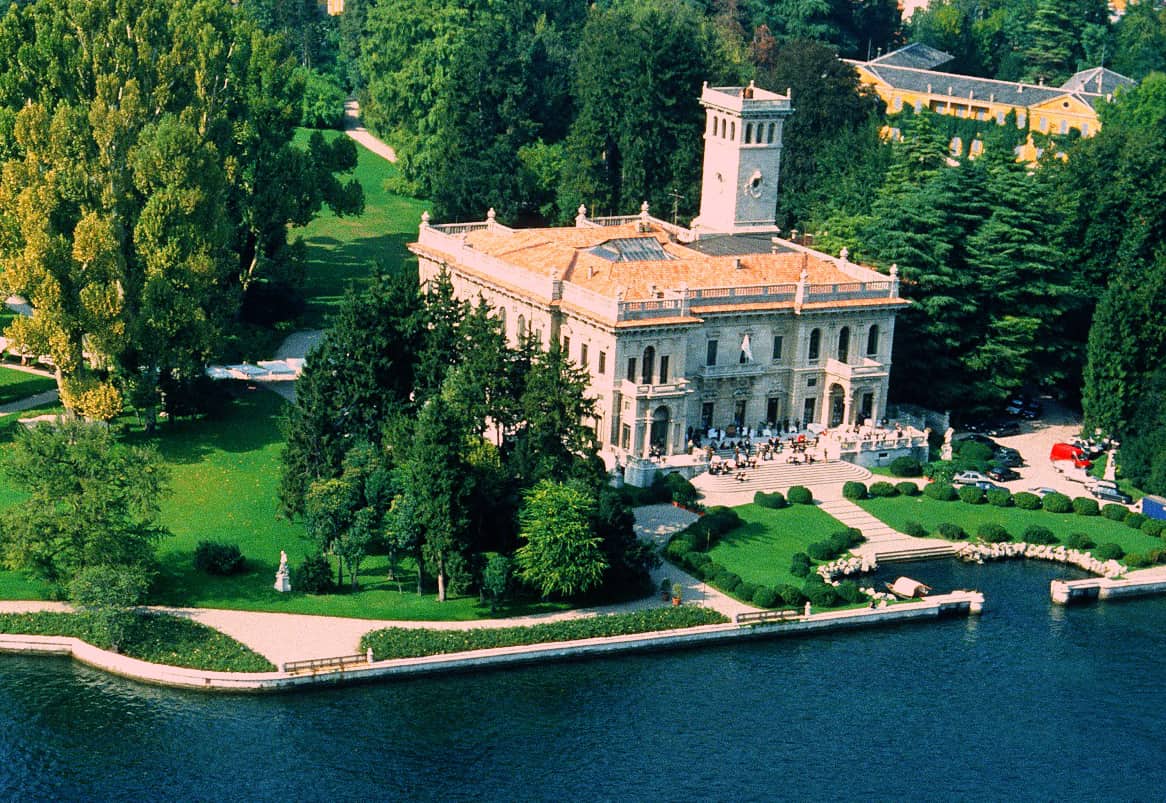
5 - Desenzano del Garda, a must-see destination on the shores of the lake

6 - Mantua, the city that overlooks 3 lakes

7 - Val Camonica: nature, rupestral art and ancient finds

8 - Franciacorta, the land of sparkling wine

9 - Abbey of Chiaravalle and Morimondo

10 - Bernina Red Train: tour from Italy to Switzerland through the landscapes of the Alps

We recommend


Northern Italy
Lombardy: a dynamic land immersed in the present and reaching toward the future, but with an extraordinary heritage of art and nature.
Lombardy is a region in the north of Italy known for its industry and finance, of course, but also for its art and extraordinary landscapes, starting with the picturesque lakes and its mountains, Valcamonica and Valtellina in primis. Capital and symbolic city, Milan represents the industrious heart that goes hand in hand with other cities with a vibrant spirit.
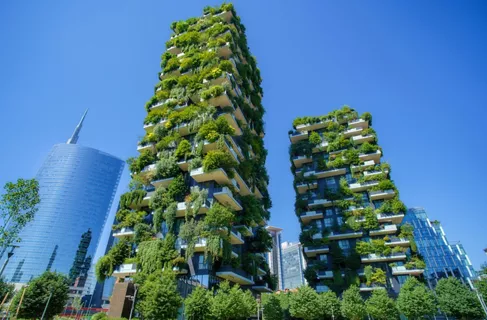
Milan, the metropolis that finds a perfect and dynamic balance between history and modernity. While it is considered one of the world's fashion and design capitals, as well as a financial hub, Milan is also a city of culture and thought. While always looking towards the future, this Lombard capital lovingly preserves its prominent history, boasting spectacular museums and some of the most monumental churches in Italy.
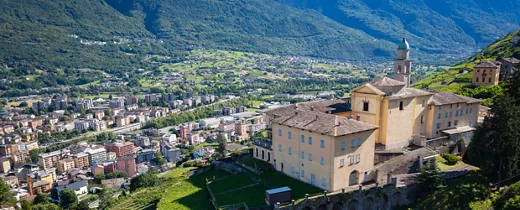
The capital of the Valtellina, Sondrio, stands out as the most important economic centre of the Valtellina, a corridor between the north and south of the Alps, and also a land of sanctuaries and fine wines. It lies at the mouth of the Malenco valley , which communicates with Switzerland and is very popular with tourists, both in summer and winter for snow sports. Over the course of time, many have contended for this border location, which is coveted and marked with many testimonies: the Austrians, for example, 'bequeathed' the central Piazza Garibaldi, next to the course of the Mallero stream. Strolling along, one encounters 19th-century palazzi, elegant in their neoclassical façades, and then those of the 16th century, the Martinengo and Pretorio palaces... The ecclesiastical heritage is instead in the collegiate church of Saints Gervasio and Protasio, while putting everything on the timeline is the Valtellina Museum of History and Art , which reconstructs the history and identity of the area up to the present day. The latest addition is Cast, a multimedia 'narrative museum' dedicated to Alpine culture, housed in Masegra Castle.
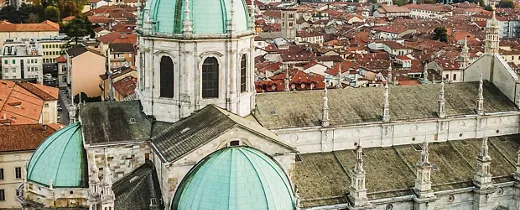
Walking around the lake, among villages, historic villas and superb views The province of Como is industrious, but it is on the shores of its famous lake featuring picturesque views, charming villages, Art Nouveau-style architecture and enchanting gardens that over the years have captivated Hollywood and the countless actors who have made their home there. From Menaggio to Cernobbio, from Torno to Laglio via Bellagio and Tremezzo: every stop along the way is bursting with beauty and authenticity. Tourists looking for a cultural holiday among unmissable monuments, churches and museums can start in Como and spend a day exploring the city: the Cathedral, Villa Olmo, which often hosts exhibitions, not forgetting a trip to the Tempio Voltiano with its permanent exhibition dedicated to physicist Alessandro Volta. Then you can take a break for a few hours and take the cable car from the lakeside promenade to Brunate. Trekking enthusiasts can enjoy breath-taking views from the Sacro Monte di Ossuccio, one of the nine Sacri Monti hilltop complexes of Piedmont and Lombardy, listed as UNESCO World Heritage Sites. Another must is a trip to the Isola Comacina, a small oasis of peace surrounded by the waters of the lake and accessible by boat from March to October.
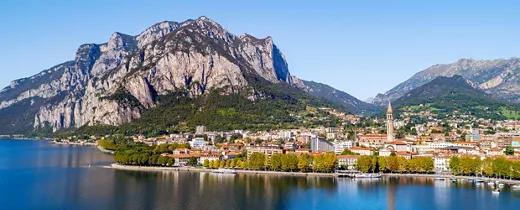
The hidden jewel of Lake Como On the shores of that “branch of Lake Como” lies Lecco, one of Lombardy’s most picturesque locations. You can explore the city and its surrounding territory by following the footsteps of the characters in Alessandro Manzoni’s novel The Betrothed. Ponte Azzone Visconti offers the best views of Pescarenico, the oldest district of the city, which is described in the novel. Be sure to visit the Rocca di Vercurago castle, also known as Castello dell’Innominato, and Villa Manzoni, which belonged to the author’s family. The Basilica of San Nicolò, Palazzo Belgiojoso and Piazza Era are worth visiting. The lake shores offer enchanting villages, like Lierna, a popular tourist destination all year round thanks to its Riva Bianca beach and late-medieval castle. To discover a real-life ghost town, head to Consonno, the “Las Vegas of Brianza”. For visitors who love high-altitude hiking, around Lecco you can enjoy scenic treks to the peaks of Monte Resegone or the Grigne group. You can follow the Viandante hiking trail around the entire lake, from Lecco to Colico, finding beautiful villages along the way, including Mandello del Lario, Varenna and Bellano. Don’t miss the hill of Montevecchia, with its sanctuary immersed in the park and criss-crossed by paths you can travel on foot, by horse or by mountain bike.
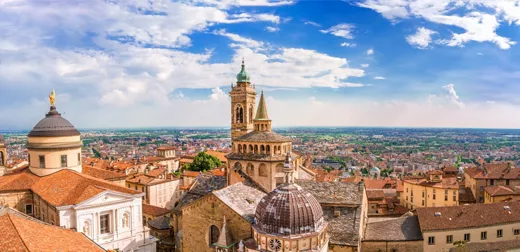
A medieval heart and a contemporary soul, Bergamo is a jewel set within ancient World Heritage walls Bergamo is one of a kind. It is characterised by an older part located on hills, rich in medieval remains, and a modern part at its foot, born and raised with industrial expansion. Two souls and one heart. Ideal for a holiday of exploration, it promises a conquest at every step.
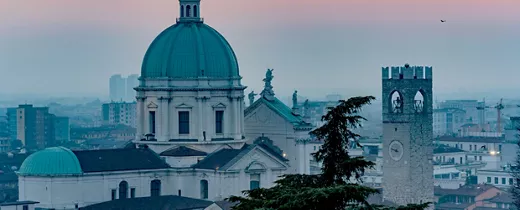
From the lake to the mountains, among history, culture and natural paradises From mountains, lakes, forests and panoramic trains, to villages, castles and the refined wine cellars of Franciacorta: the province of Brescia, the largest province in Lombardy, boasts an extremely varied territory, which stretches from Bassa Bresciana to Val Camonica. Here, visitors can enjoy a rich variety of experiences. Do you love nature walks, water sports or cycling? Between Lake Garda and Lake Iseo, you will be spoilt for choice, with cycle paths suitable for all proficiency levels and the scenic “Treno dei Sapori” (Flavour Train), aboard which you can discover typical local products. History buffs can travel back in time to the Middle Ages by visiting Brescia Castle or discover the fascinating Camuni civilisation the Naquane National Park of Rock Engravings in Capo di Ponte. We also recommend visiting the Villa Romana in Desenzano del Garda and the historic town centre of Sirmione. If you are looking for family-friendly activities, don’t miss the Forest of Gnomes in Zone, where you will encounter gnomes, dragons and other magical creatures. Visitors who want to indulge in a little relaxation are sure to love the thermal baths of Boario and the healing water of Sirmione. Skiing enthusiasts can choose between the Pontedilegno-Tonale Ski Area and the Borno Ski Area, between Val Camonica and Valle di Scalve.
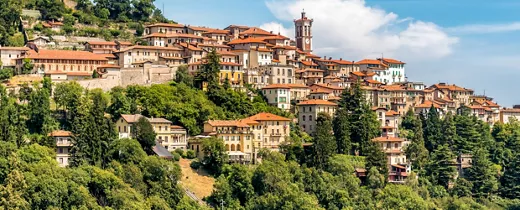
Strolling among lakes, noble residences and spiritual sites The province of Varese offers visitors a stunning array of artistic and natural beauties to explore — starting with its capital, a “garden city” set in a region rich in lakes set atop seven hills. You can visit the Palazzo Estense with its park, Villa Panza, Piazza del Podestà and the Basilica of San Vittore. Near the city are the 18th-century Villa Della Porta Bozzolo, the Valganna caves and the Sacro Monte di Varese, with its frescoed chapels and panoramic views over the valley. Overlooking Lake Maggiore is the hermitage of Santa Caterina del Sasso. Or another way to admire the lake from above is to visit the Rocca di Angera castle, which houses the Museo della Bambola, or to take the cable car to the summit of Sasso Ferro from Laveno Mombello, a delightful lakeside village. For an immersive experience in nature, you can take a dip in Lake Monate, cycle along the Comabbio lakeside path, or go trekking or mountain biking along the 150 km of trails in the Cinque Vette Park. Not far from Malpensa is Volandia, a museum dedicated to flight.
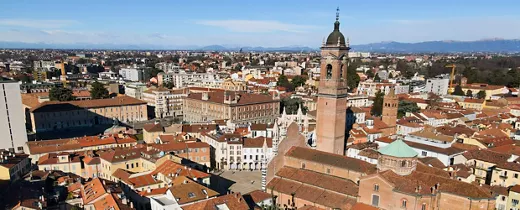
A city symbolising power and royalty in Lombardy Monza is undoubtedly one of the most renowned urban centres in Lombardy. Rich in history, its origins date back to the Iron Age. You will be enchanted by the beautiful black and white façade of Monza Cathedral, the 6th-century Basilica of St John the Baptist. Inside, you will find the Chapel of Queen Theodolinda, a masterpiece of Gothic art, which houses the Iron Crown, the most famous example of Lombard goldsmithing. An air of royalty permeates Monza. The Royal Villa, or Reggia di Monza, is a must-see. This huge, neoclassical building, the former residence of the Habsburgs, is surrounded by its enormous Park, one of the largest urban parks in Europe. Anyone with a passion for engines can visit the Monza Circuit, built in 1922 and still a go-to track for motorbike sports. Walking through the streets of the centre, you will come across the Arengario, an ancient, 13th-century municipal palace. As you continue along the Lambro river, you will discover the many bridges that cross it, starting with the most famous, the Ponte dei Leoni. You can treat yourself to a bite to eat at one of the typical trattorias. We recommend trying the risotto with Luganega, a sausage typical of Monza.
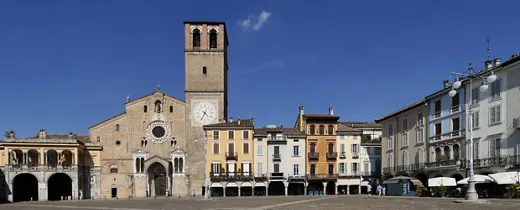
History and tradition in the Po Valley Lodi is among the richest cities in history in the Po Valley. Founded in 1158 by Frederick Barbarossa, its origins are even older. As you walk through the streets of the historic centre, make sure to stop by monuments such as the Lodi Cathedral of Santa Maria Assunta, the Tempio dell’Incoronata and Palazzo Mozzanica, one of the best examples of Lombard Renaissance architecture. You can stop for a coffee or an aperitif at Piazza della Vittoria, with arcades on all four sides. Slightly further away from the city, you can visit Lodi Vecchio, the ancient Laus Pompeia, a city founded by the Romans that originated as an earlier village of Celtic origin. From Piazza Santa Maria, you can see the ruins of the ancient cathedral. If you love nature, we recommend visiting the Paradiso Fish Park to see fish in their natural habitat, thanks to the underwater observatory. As well as a thousand-year-old history, Lodi also has its own fantastic culinary tradition. The undisputed star is Granone Lodigiano cheese, considered the predecessor of all Grana cheeses, but Lodigiano salami and Raspadura cheese are also worth trying.
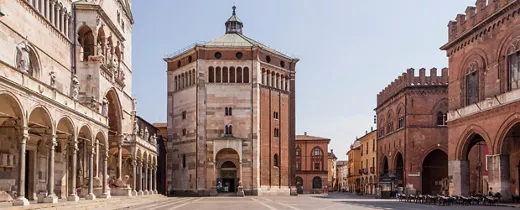
The home of the violin, among thriving plains and protected green areas The province of Cremona boasts many protected green areas, including regional parks and nature reserves. However, visitors flock to the area not only for these natural paradises, such as the Oglio and Serio Regional Parks, but also for its elegant cities, like Cremona and Crema. Your first stop when visiting the provincial capital should undoubtedly be the Torrazzo bell tower, which stands beside Cremona Cathedral. At 112 metres high, it is among the tallest bell towers in Europe. You can visit this undisputed icon of the city by climbing no fewer than 502 steps, but the views you will enjoy from the top make it worth the effort. Cremona is also considered the home of violins — we recommend visiting the Violin Museum, a stone’s throw from the beautiful Piazza del Comune. The historic centre of Crema, within the Serio Park, is easily accessible by foot. Be sure not to miss the Sanctuary of Santa Maria della Croce, the former Convent of Sant’Agostino, which now houses the Civic Museum of Crema and the central Piazza del Duomo.
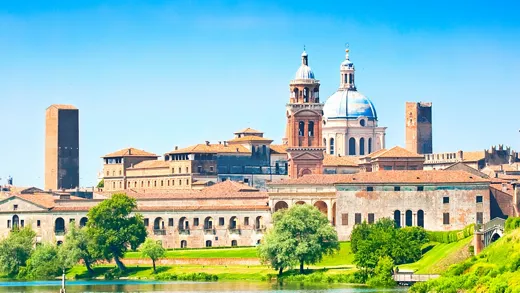
One of Italy's major art cities, Mantua is surrounded by water and marked by a prestigious history. Mantova is a gem of Italian art and architecture which beautifies Lombardy as a region. Built around three lakes supplied by the Mincio river, it is the city of Virgil and the Gonzagas characterised by an overwhelming charm and aiming straight at the heart of the visitors who will never forget it.
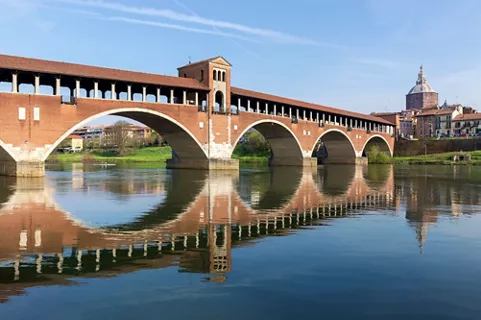
Falling in love with Pavia: the rice capital of Italy and home to Einstein A rich historical and artistic heritage, an enviable food and wine tradition, and countless fascinating sites make Pavia surprisingly unique and perfect for a tailor-made holiday. The Charterhouse, a jewel of the Renaissance The best place to start is the Charterhouse of Pavia, a monumental complex eight kilometres away from the city centre. Commissioned as a family chapel and mausoleum by Gian Galeazzo Visconti in the 15th century, it was entrusted to the Carthusian monks, before passing to the Cistercians and the Benedictines of Pavia. But, though his ashes were taken there, its patron never saw the end of its construction, which was continued by Francesco Sforza and Ludovico il Moro. Housing works by Perugino, Pinturicchio and Guercino, the interior flaunts a Gothic style, modelled on the Milan Cathedral, while the façade is overtly Renaissance. The Visconti Castle, a symbol of power More than a castle, this building is a symbol of wealth and power dating back to 1360. It is surrounded by a beautiful park, which you can only see part of today, connecting it to the Charterhouse of Pavia. Significant historical events it bore witness to include the marriage of Ludovico il Moro to Beatrice d'Este. Although today part of the castle has been destroyed, the interior still hosts the Civic Museums and the Malaspina civic art gallery, with masterpieces such as Antonello da Messina's Portrait of a Man. The Church of San Pietro in Ciel d'Oro and the Ponte Coperto The Church of San Pietro in Ciel d'Oro is definitely worth a visit. It is the resting place of two Church Fathers: St Augustine, who lies in a magnificent tomb, and Severinus Boethius, philosopher and martyr. The Longobard-style church was rebuilt in the Romanesque style and is considered one of the most important religious building in the city together with the Basilica of San Michele Maggiore. Also well worth a visit is the Ponte Coperto, the iconic covered bridge of Pavia that crosses the Ticino river. This bridge connects the historic centre with Borgo Ticino, originally located outside the city walls, and the Palazzo Broletto, a 12th-century building with a striking porticoed inner courtyard, the heart of institutional life in times gone by. Keen eyes can also spot a plaque dedicated to the 50th anniversary of the death of Albert Einstein, who lived here for some time. Albert Einstein It’s true! Einstein's parents moved to Pavia in 1894, to Palazzo Cornazzani to be precise, the former home of Ugo Foscolo, and Albert himself also lived here for a while. The theatre that hosted Gassman and Fo The 18th-century Teatro Fraschini theatre is a true masterpiece that has seen renowned actors such as Vittorio Gassman and Dario Fo grace its stage. It has a typical horseshoe shape, with a series of box seats and an entirely painted wooden ceiling. Pavia and its passion for heels In nearby Vigevano is the International Footwear Museum, which exhibits all kinds of shoes from the historical to the super fashionable and even recent models. You can even find the historic slipper “la pianella di Beatrice d'Este” strutting side by side with the best of Manolo Blahnik! Rice: an icon Pavia has around 80 thousand hectares of paddy fields. We are talking about the largest area of rice cultivation in Italy, and you can enjoy a walk or cycle on paths alongside the paddies.
What to see in Lombardy
- Art & Culture
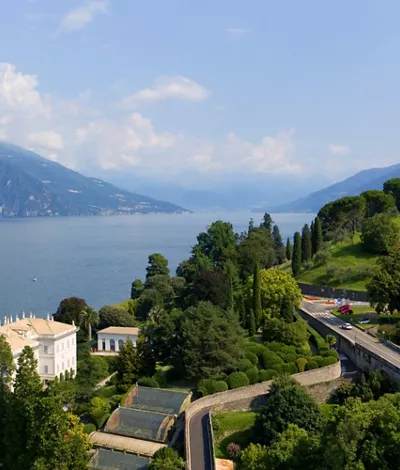
Burning sunsets, castles and rock-cut gorges. A painting? No, Lombardy to be toured by bicycle
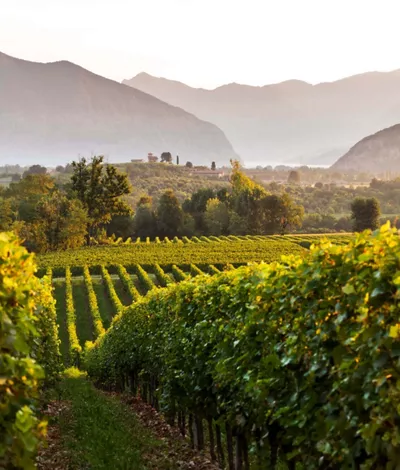
5 delicacies from Lombardy: a land to savour
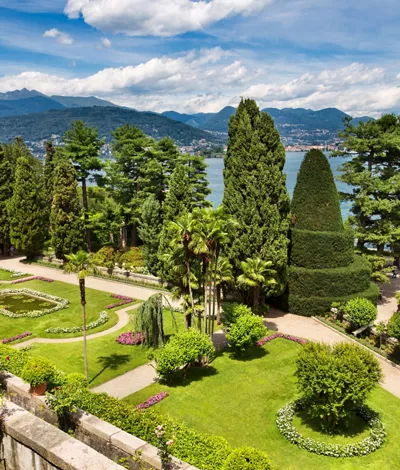
Lake Maggiore
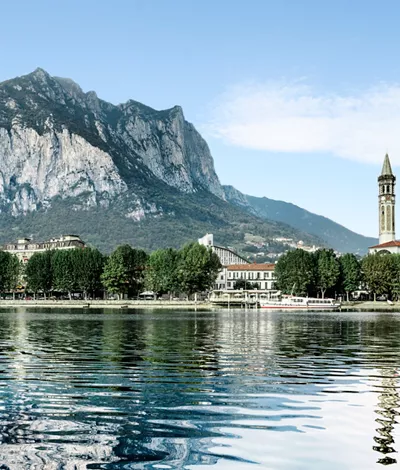
7 cities of art to visit a short distance from Milan
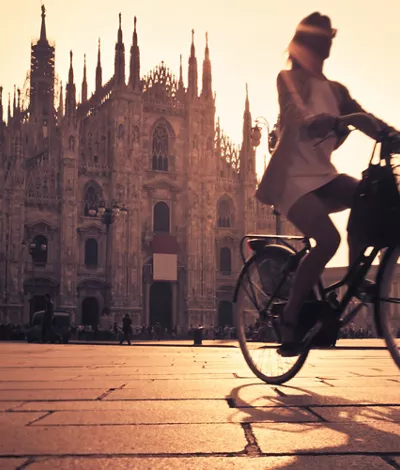
Milan: cycling along the Navigli with Leonardo da Vinci
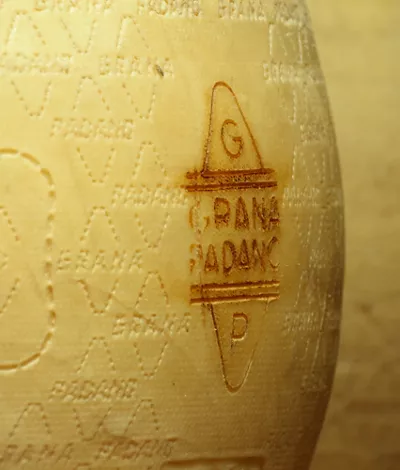
Gastronomic tourism: a tour to discover the cheeses of Lombardy
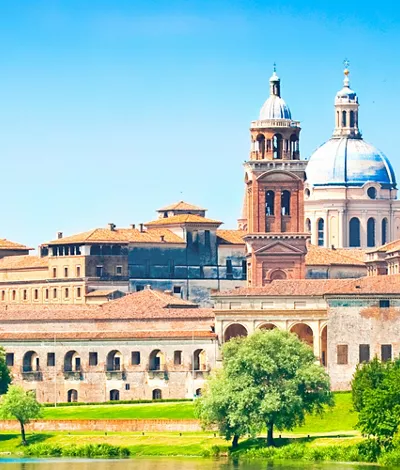
Mantua, an aristocratic city steeped in art and history
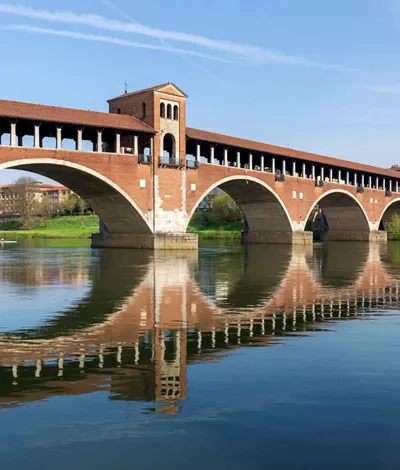
Milan: much more than the world’s fashion capital
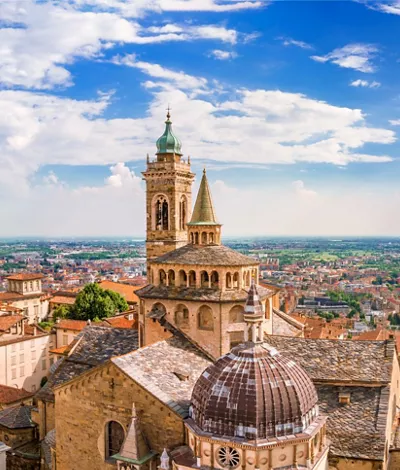
Bergamo, medieval heart, contemporary soul
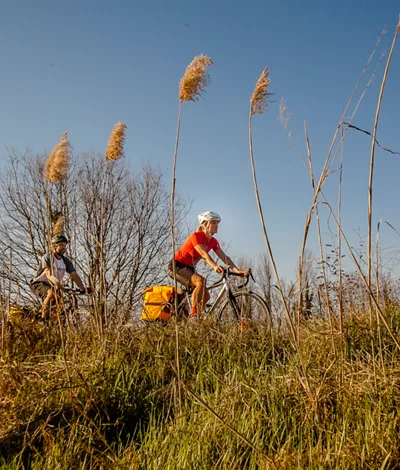
Cycling around cities of art and historic villages in Lombardy
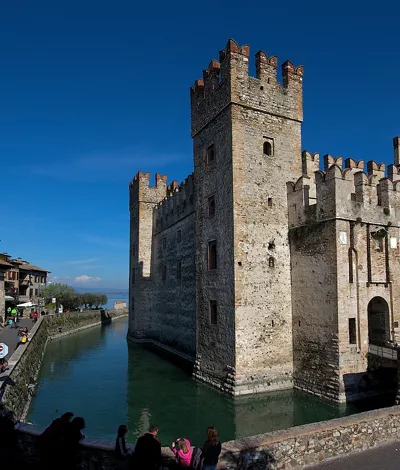
Lake Garda, for a magical weekend
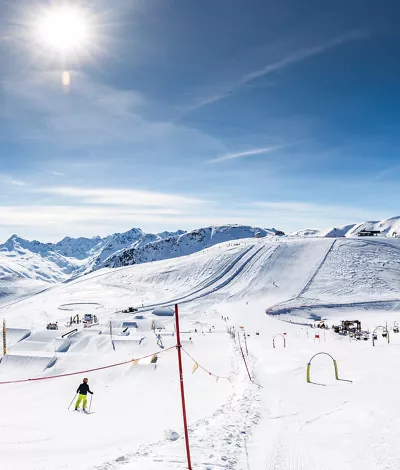
Valtellina: nuances of snow and taste for everyone
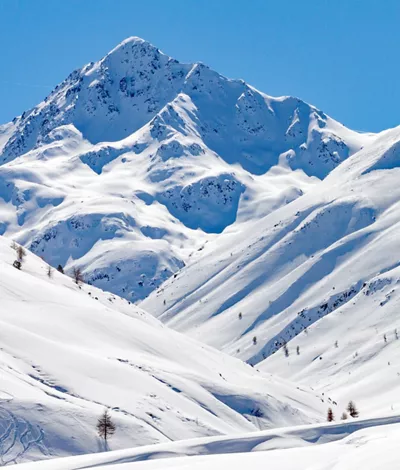
Livigno, Bormio and the Valtelline Valley

Arnoga: on skis or a husky sled?
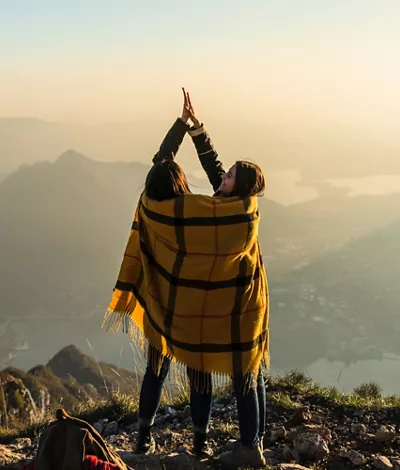
8 things to do to experience the beauty of the Bergamo Alps
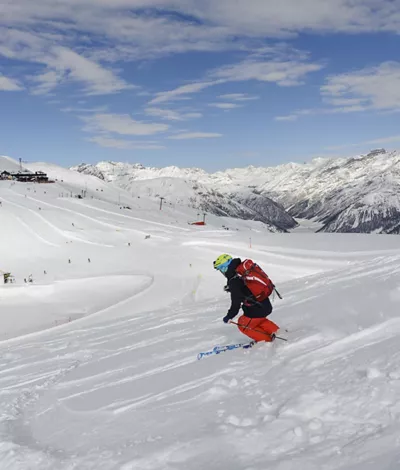
Livigno, a snow and duty-free paradise
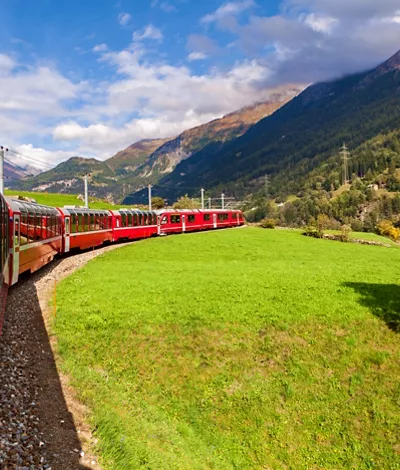
Rhaetian Railway, the engineering masterpiece crossing part of the Alps
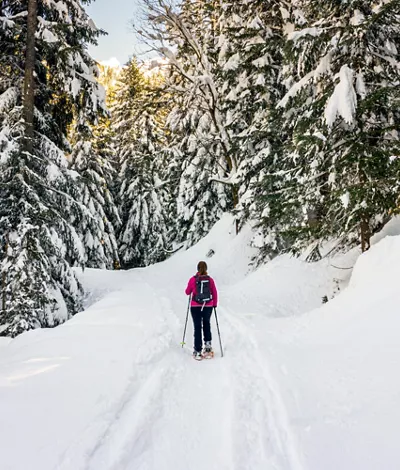
The 5 best snowshoe hikes in Lombardy
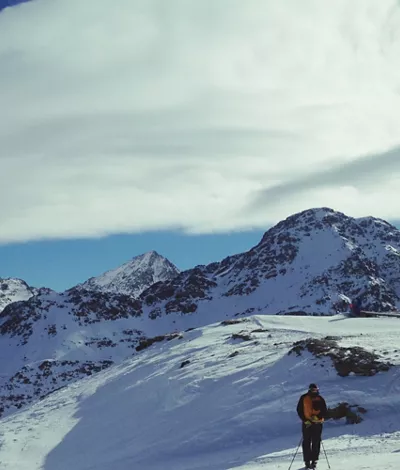
The 5 favourite destinations for the Milanese to ski near Milan
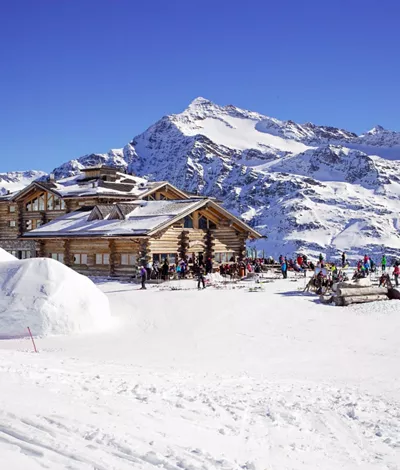
Santa Caterina Valfurva, on the Compagnoni piste
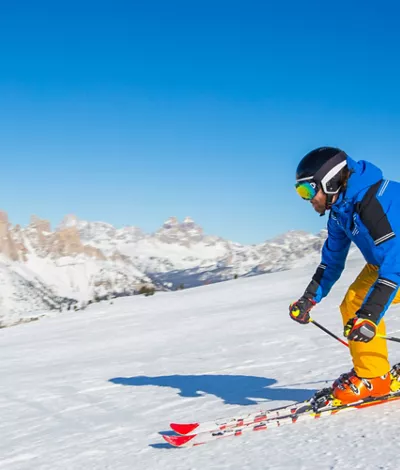
Milan-Cortina 2026
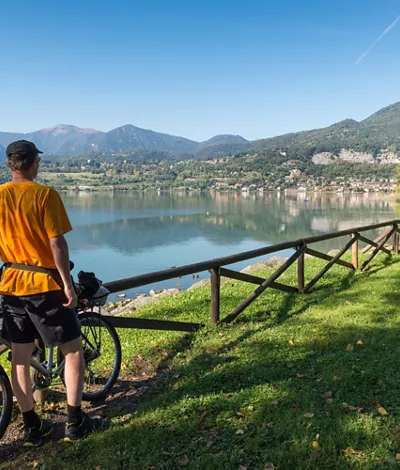
10 easy cycling routes in Lombardy
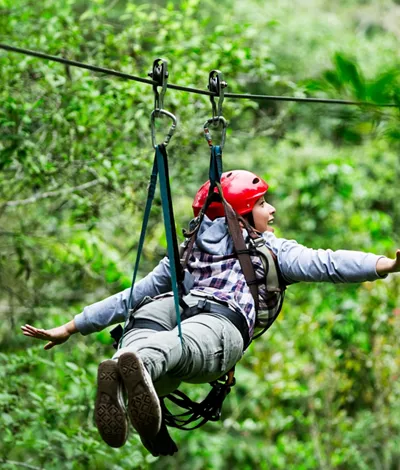
Lombardy, the Valtelline: Fly Emotion’s panoramic Aerofune
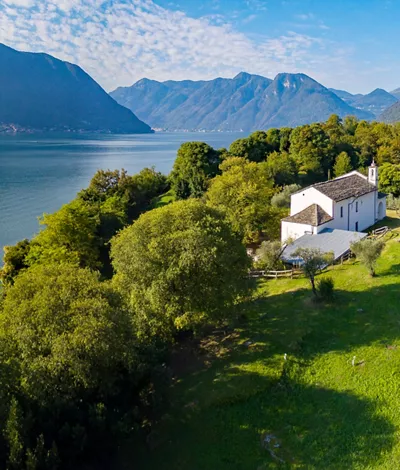
The Sacri Monti of Piedmont and Lombardy
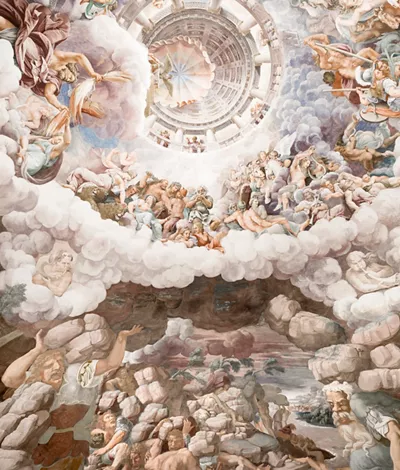
Lombardy: 10 treasures you may wish to explore in the city of Milan and its surrounding areas
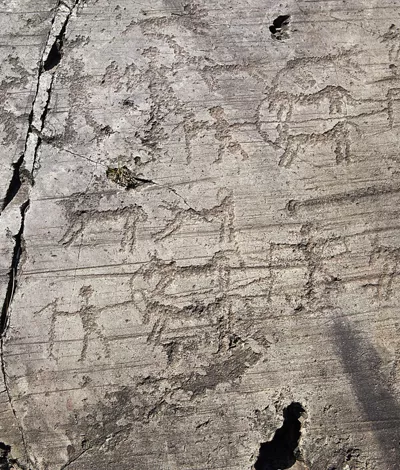
Valcamonica: history spanning over 8,000 years
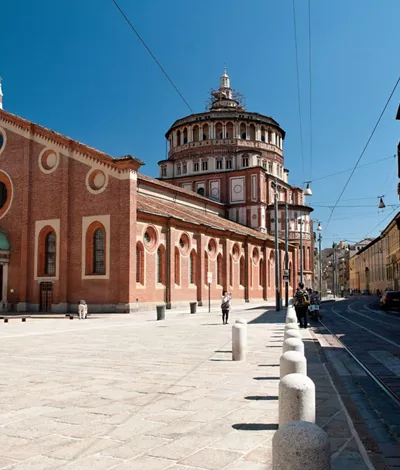
Santa Maria delle Grazie and Leonardo's Last Supper, for a touch of the true Renaissance
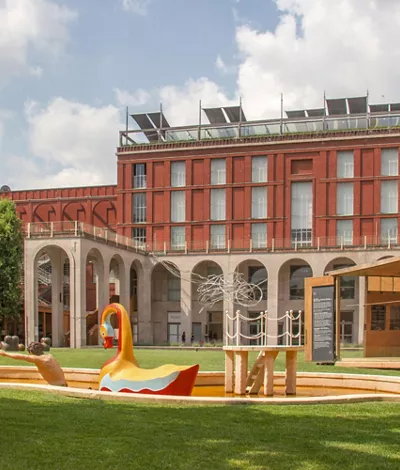
In Milan, art and design meet at the Triennale
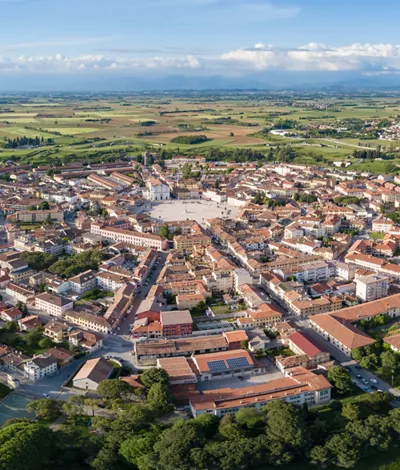
The Venetian Works of Defence: outposts of the Republic of Venice
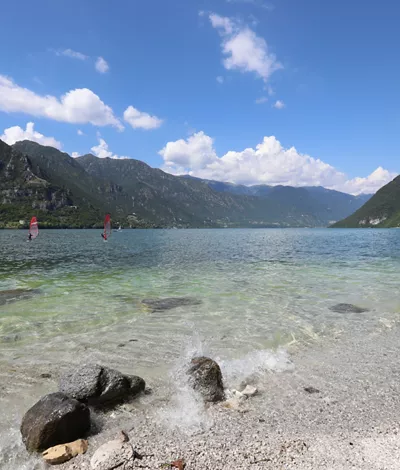
Lombardy: 5 unforgettable lakes for a day of total relaxation
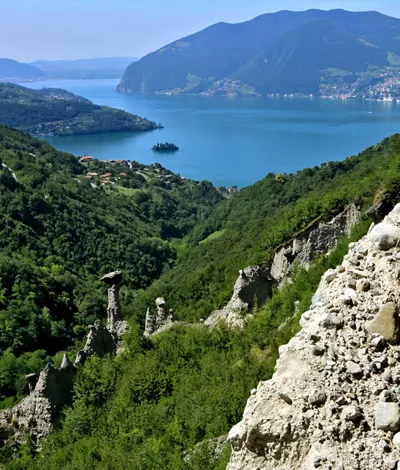
Lombardy with children, 6 unmissable adventures
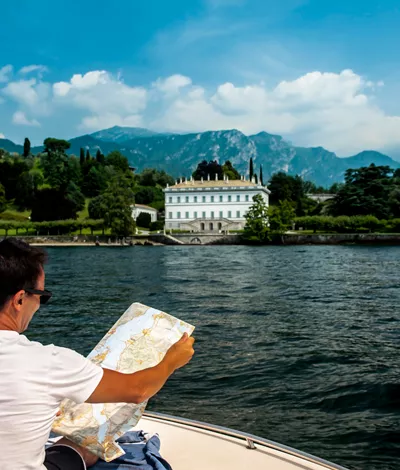
A trip to Lombardy: 5 places surrounded by nature
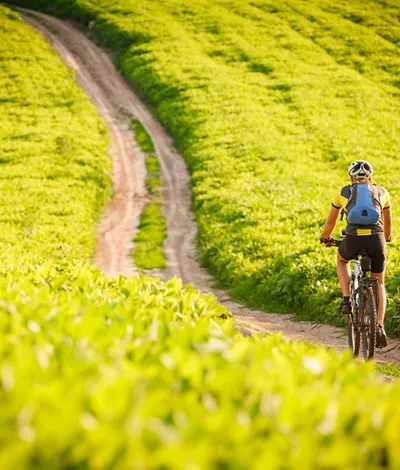
Bike and bubbles: discovering the nature of Lombardy
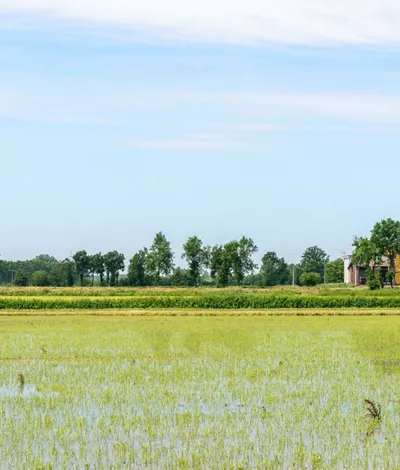
The Ticino Park: rice paddies and nature reserves
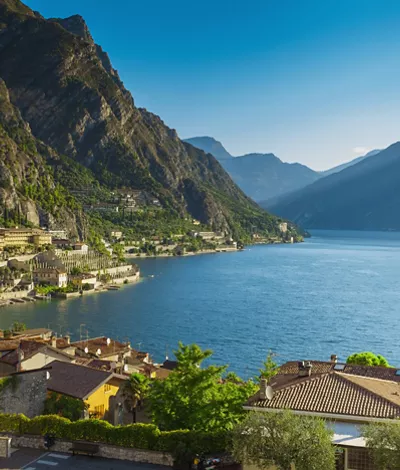
The charm of Spring on the Great Lakes of Northern Italy

Best Wine Stars 2024
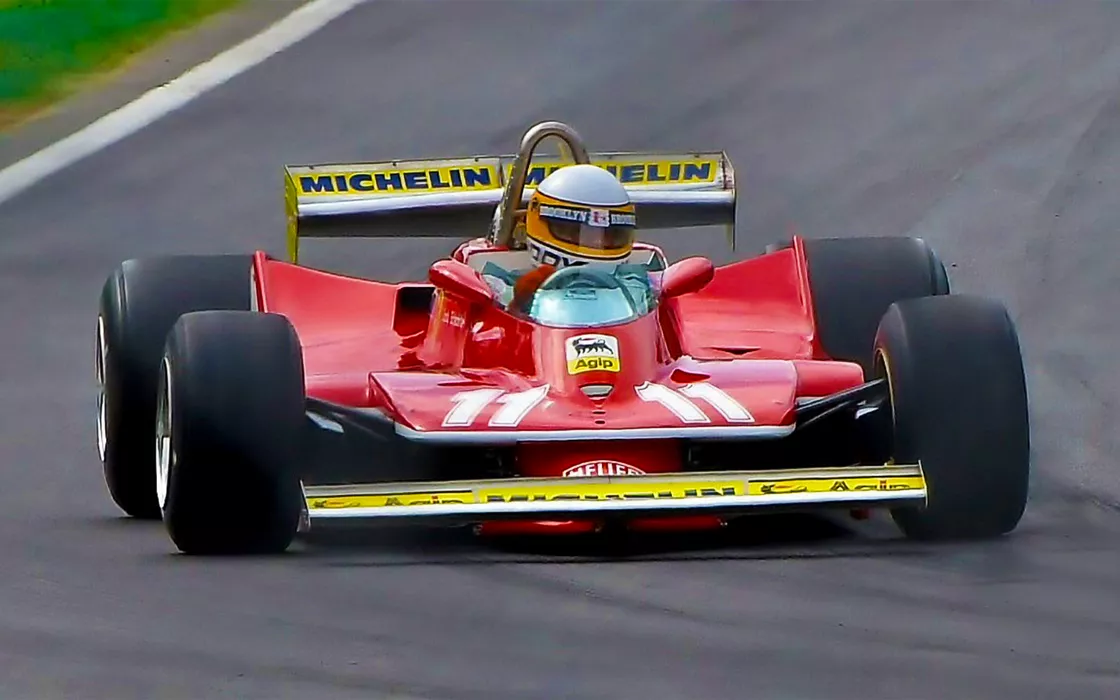
2024 MONZA FORMULA 1 GRAND PRIX
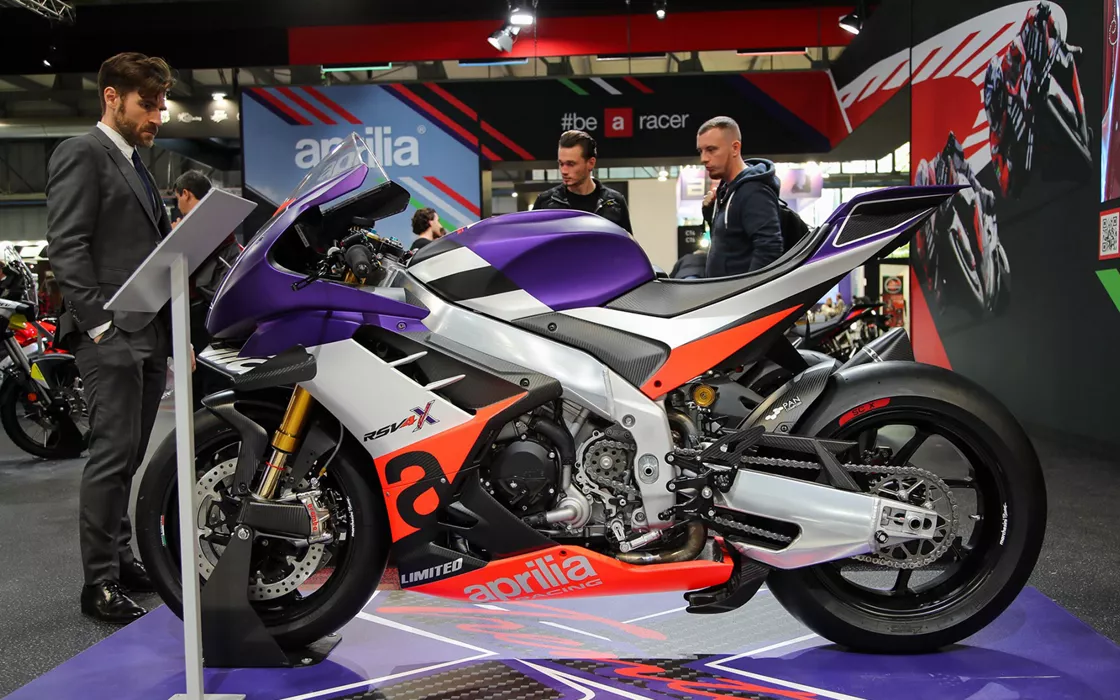
Adamello Ultra Trail 2024

Inspiration for living the Italian way
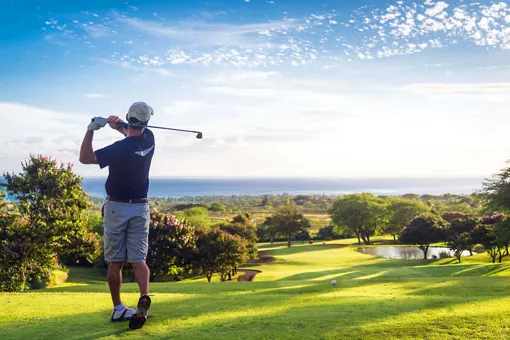
The most scenic golf courses in Italy
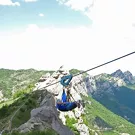
Zip lining, an adrenaline-filled flight surrounded by nature

Smart working immersed in a natural environment: at a camping village or on a sailing boat, supporting a sustainable world
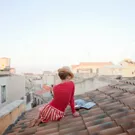
6 unmissable destinations in Italy featured in famous novels
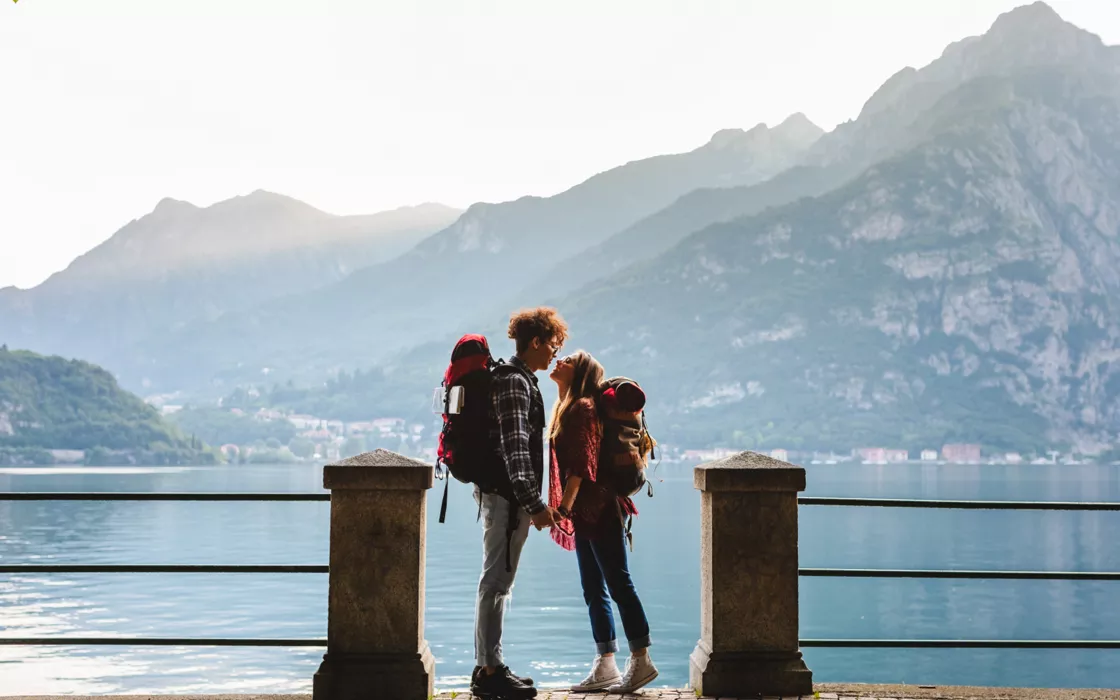
In Lecco, for a romantic itinerary in the footsteps of the Bride and Groom
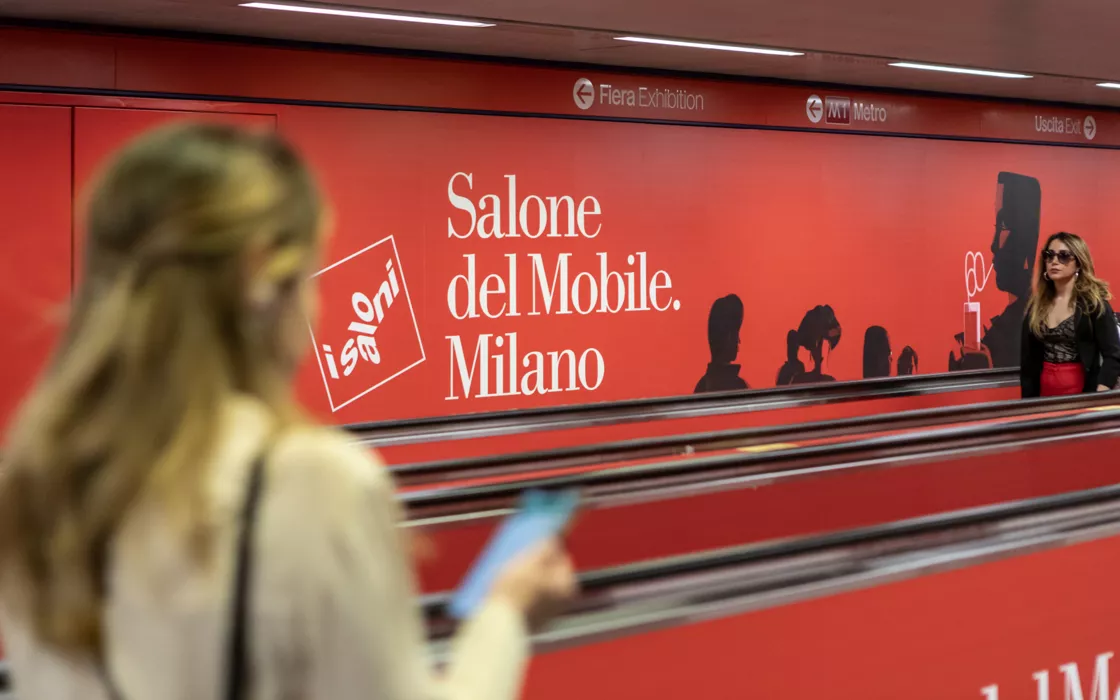
Salone del Mobile in Milan: the districts and events not to be missed at Fuorisalone
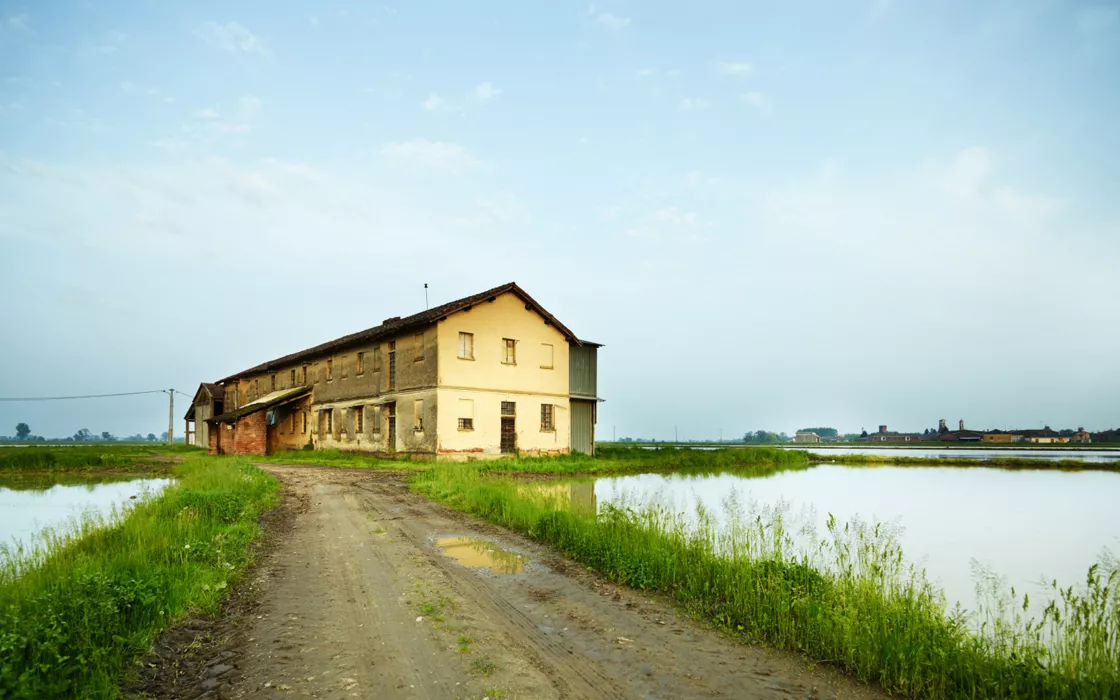
The Lomellina region: nature and culture in the province of Pavia
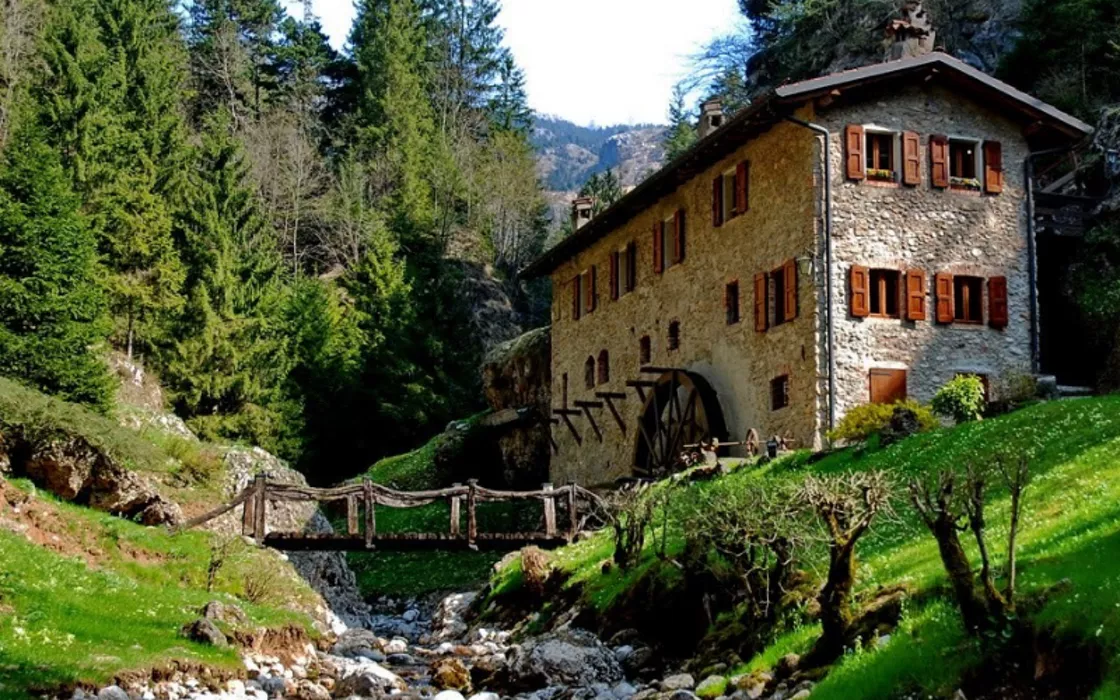
Between past and present: a tour of Bergamo and Brescia's mills

The engine of Italy and a region of culture and charm
Lombardy: a dynamic land immersed in the present and reaching toward the future, but with an extraordinary heritage of art and nature. Lombardy is a region in the north of Italy known for its industry and finance, of course, but also for its art and extraordinary landscapes, starting with the picturesque lakes and its mountains, Valcamonica and Valtellina in primis. Capital and symbolic city, Milan represents the industrious heart that goes hand in hand with other cities with a vibrant spirit.
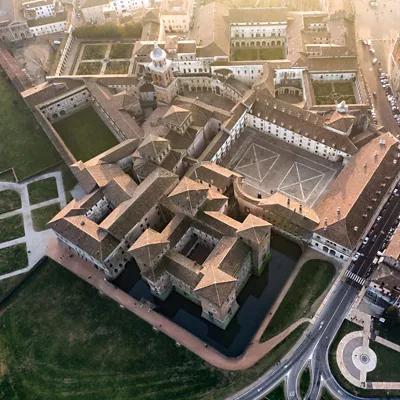
Continue living like an Italian
Subscribe to the Newsletter so as not to miss places, events and experiences for experiencing the best side of Italy: the authentic one.
Keep up to date
Would you like to learn about the most authentic experiences to be had in Italy, stay up to date on the most interesting events, discover our special offers and receive lots of insider hints and tips?
Save your favorite places
Create an account or log in to save your wishlist
Do you already have an account? Sign in
Lombardy Travel Guide: 8 Experiences You Can’t Miss
- September 14, 2023
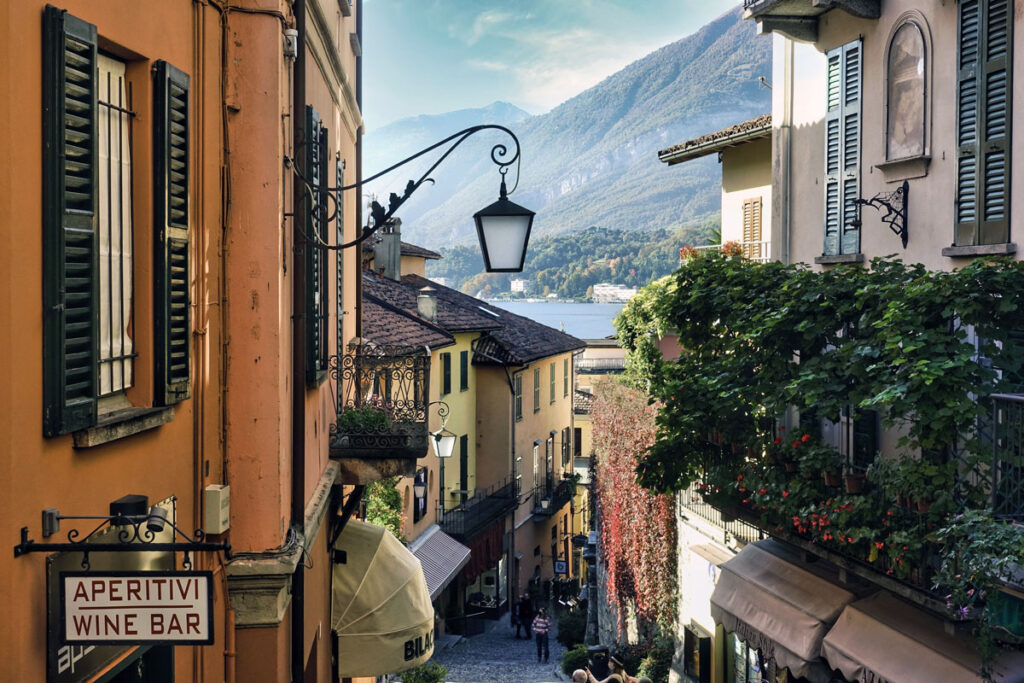
Lombardy is an economic powerhouse. And its capital Milan often takes the crown from Rome when it comes to job prospects and quality of life. The industrial hinterlands may not offer much to the traveling aesthete, but head further out and you’ll find glittering lakes, pristine medieval towns, and world-class art. Not to mention breathtaking architecture and delicious gastronomy. This Lombardy travel guide will introduce you to the best things to see and do in and around Milan.
It has been said that Lombardy resembles Germany and France more than its adjacent Italian regions. Lombardy, in fact, was ruled by both the French and Austro-Hungarians. Its name derives from the Scandinavian-Germanic Lombard tribe that ousted the Romans. Today, elegant cities, excellent public transportation, and old-world glamour make Italy’s richest region intimidatingly beautiful and beguiling.
Despite Lake Como and Lake Garda’s huge international fame, much of Lombardy is relatively tourist-free. Many of the smaller towns, hiking trails, and spas are known only to locals. This makes for a delightfully authentic Italian experience.
Lombardy Travel Guide
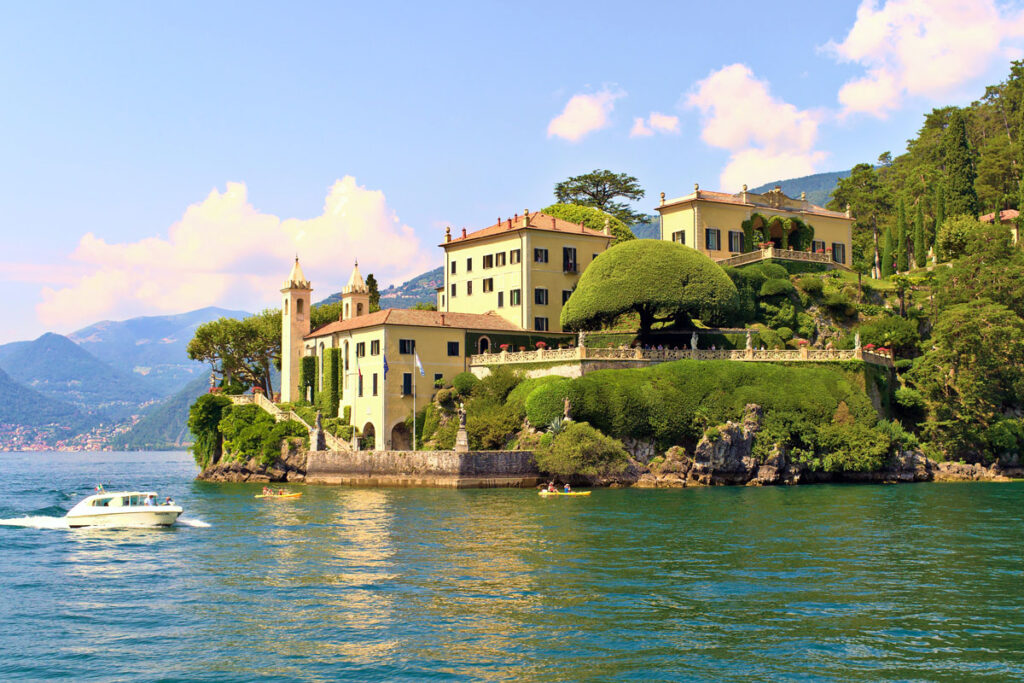
1. Explore Milan, Italy’s Fashion Capital
Milan, Italy’s fashion capital, is a heady mix of modern-day energy, achingly beautiful art-deco, and neoclassical architecture. Here, life is lived as elegantly as possible. With the Renaissance Santa Maria Della Grazie, the Medieval Duomo, and the 19th-century shopping plaza, Galleria Vittorio Emanuele II, Milan’s historical highlights are enough to keep visitors busy for a weekend or longer. Add to that the world-class art housed across Pinacoteca di Brera, Palazzo Reale, and the modern masterpieces in Mudec and the Fondazione Prada and you’ve got a cultural offering to rival Rome.
Discover how to spend 48 hours in Milan in our weekend guide. Be sure to finish each day with the city’s legendary aperitivo before dining at some of the country’s best restaurants.
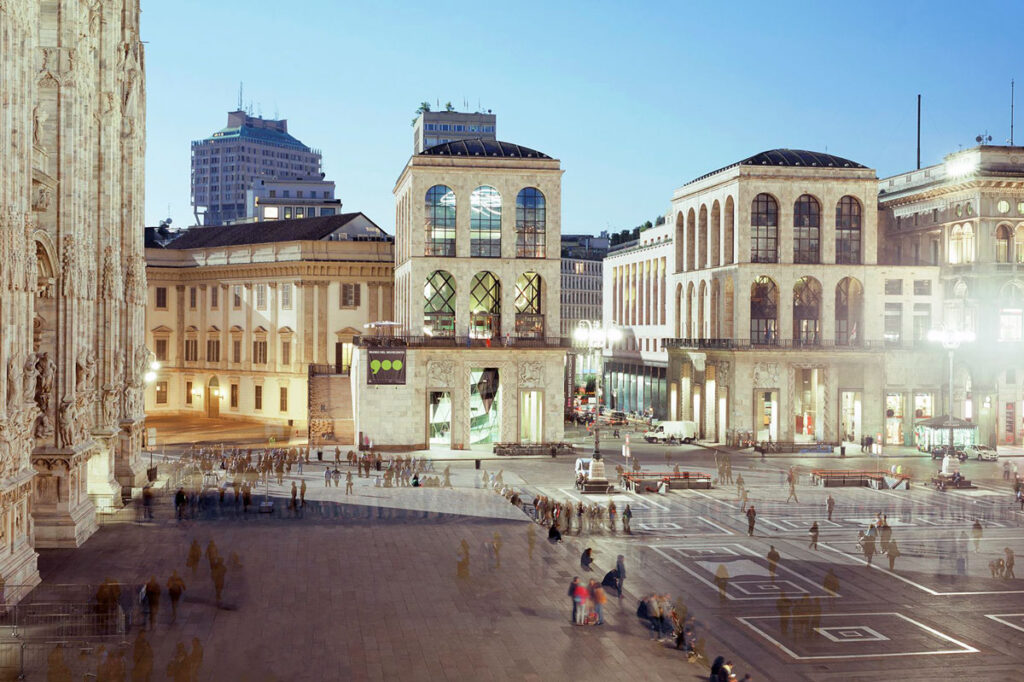
2. Taste Lombard Cuisine
Northern Italian food is surprisingly diverse and worlds away from the pizza and pasta of southern Italy. Typical recipes include polenta, rice dishes, fresh cheese, and red meats. A great place to taste this traditional cuisine is at one of Milan’s heritage restaurants, founded at the end of the city’s art deco era.
The interior of Trattoria Milanese is decked out in dark wood, glowing chandeliers, and vintage bottles that line the walls. Delightfully intimate, the menu features Lombardy’s finest dishes. This includes Cotoletta alla Milanese (breaded veal cutlet), risotto with osso buco , and pasta and vegetables galore. Wash everything down with a full-bodied red from the shelves.
Relatively new to the canal district of Navigli, Nebbia is making waves across the city for its chic interiors and interesting twists on traditional Milanese cuisine. Head down for an early aperitivo on the water before settling in for the night. Regular specialties include duck liver brioche with caramelized onions, roasted pumpkin with goat’s cheese and sesame, and octopus with pork cheek and local greens.
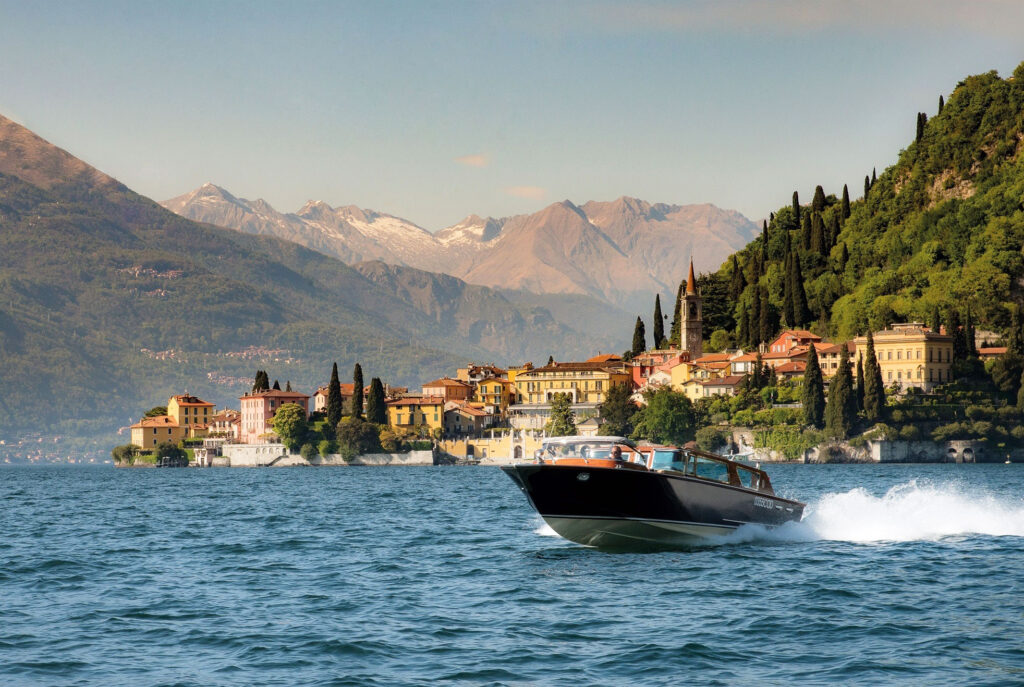
3. Explore Italy’s Great Lakes
The charm of the Italian lakes has captivated travelers for centuries. Smooth, aquamarine water, pastel-colored villas, exquisite gardens with lemon trees, bright pink azaleas, and verdant lawns add to the sensory overload of the lakes. From the expansive Lago Maggiore, the majestic Como, or the glittering Garda, these bodies of water offer a refreshing respite from sweltering days in the towns. And, they match Lombardy’s cities for culture and gastronomy.
Lake Maggiore , Lake Como, and Lake Garda are easily accessible by train from Milan. Once on the lake, it’s easy to get around via boats and water taxis. Additionally, from any of the lakes, it’s possible to stop off in any number of pretty towns to admire medieval churches, and Belle Epoque facades, as well as taste local delicacies. Some favorite towns are:
- Lake Como : Cernobbio and Bellagio
- Lake Garda : Sirmione, Salò and Limone sul Garda
- Lake Maggiore : Stresa and Laveno
For a meal with a view, look no further than Aurora Restaurant , just south of Bellagio. With a shady terrace overlooking tranquil waters and distant mountains, Aurora is the optimal location for a relaxing lunch or dinner. The kitchen specializes in freshly-caught lake fish, but their pasta and pizzas are also hard to beat.
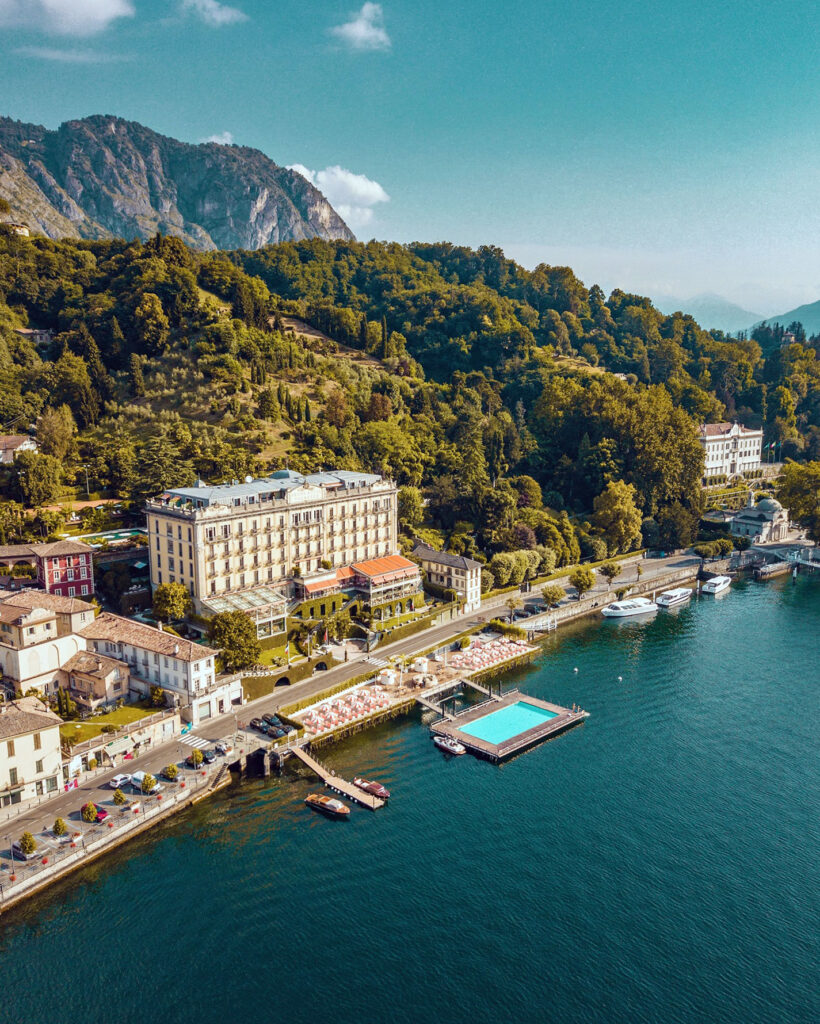
4. Spend a Night on Lake Como
Grand Hotel Tremezzo is a glittering jewel on Lake Como’s eastern shores. Opened in 1910, this great dame has hosted sophisticated travelers for over a century. Today, the hotel remains a destination for Italy’s well-heeled and cultured. Many Milanese head north during the weekends to experience impeccable Italian hospitality and traditions.
From the hotel’s 100 windows, you can see across the water to the picturesque Bellagio, the expansive terrace, and the landscaped gardens. “The Grand” has three swimming pools, including one which floats atop the lake. Rent a boat and choose from five restaurants and bars offering the culinary delights of Chef Gualtiero Marchesi.
The hotel is located just next to Villa Carlotta , a lakeside villa with a spectacular botanical garden, winding trails, and parks. If you want to explore, hop on one of the numerous ferries and boats to visit other villages and towns located along the lake.
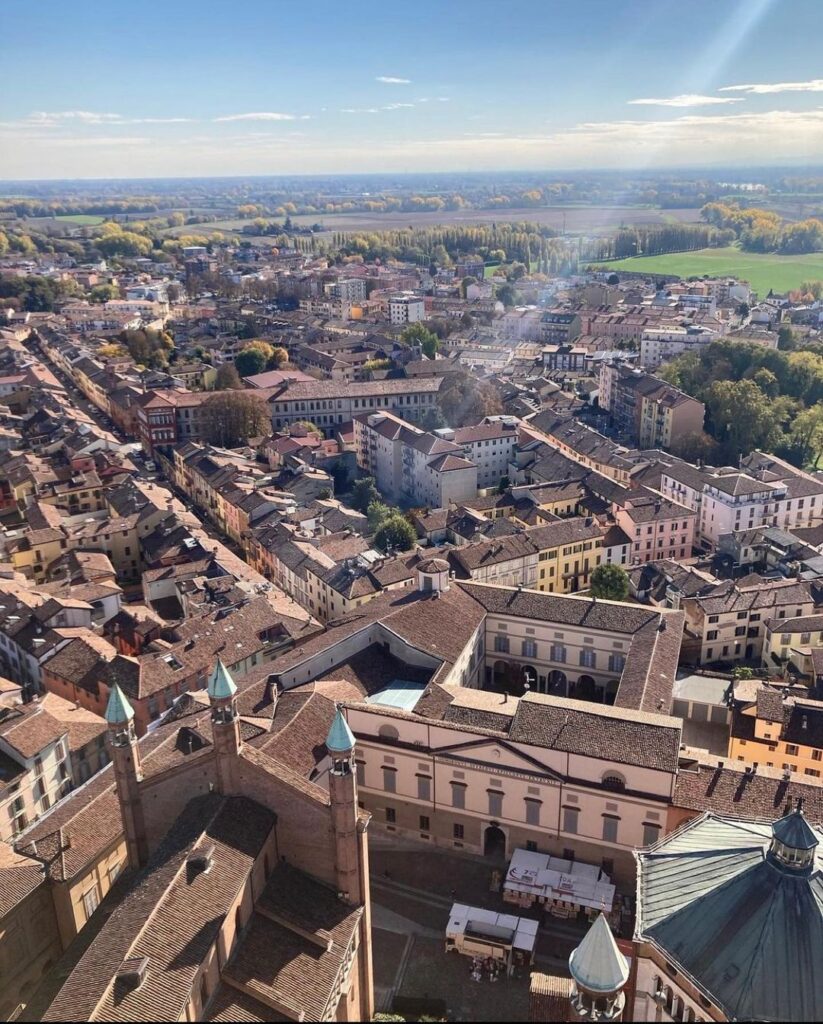
5. Visit the Medieval Towns of Cremona and Mantua
Lombardy may be full of glamour and pizazz, but much of its charm can also be found in the smaller towns and cities. If you’re looking for a quieter day trip, head southeast to Cremona. This honey-colored medieval town is full of beautiful boutiques, spacious galleries, and pretty restaurants. It is also now a world heritage site, thanks to the Stradivarius Violin Museum , which preserves the violins of Amati, Guarnieri, and Stradivari. Make sure to check out the website for the numerous recitals and concerts in the city throughout the year.
From Cremona, it’s a short drive to the city of Mantua—made famous by Romeo’s banishment here. As you arrive, the city’s domes and towers rise up from the landscape. Once inside the city’s historic center, head to Antica Osteria Leoncino Rosso to eat tortelli with pumpkin, a regional specialty. Stroll through the beautiful Palazzo Ducale to catch a glimpse of what life was like for the Gonzaga family, who ruled the city for over 400 years. The city has plenty of wide-open piazzas and lovely walks along the river, making it the perfect place to relax after a few days in a bigger city.
6. Hike in the Mountains
While Lombardy may often bring to mind the glitz and glamour of Milan and the lakes, some of the most authentic experiences can be found just a short train ride, or even a stroll, from the bustling centers. Hiking in Lombardy often means hiking in the trails of the breathtaking pre-alps. Visitors traversing the Alps can descend from the snowcapped peaks and discover pops of color where the land meets the water. From land to sky, you can see verdant foliage, shimmering lakes, and towering, snow-capped peaks.
A personal favorite is the Cadorna Line hike from Porta Ceresio, an hour on the train from Milan. The trail follows in the footsteps of the partisans who fought against the fascists in World War II. In addition, the trails around Lake Como and Lake Maggiore are equally spectacular, with lake views on one side and huts owned by local Alpini on the other.
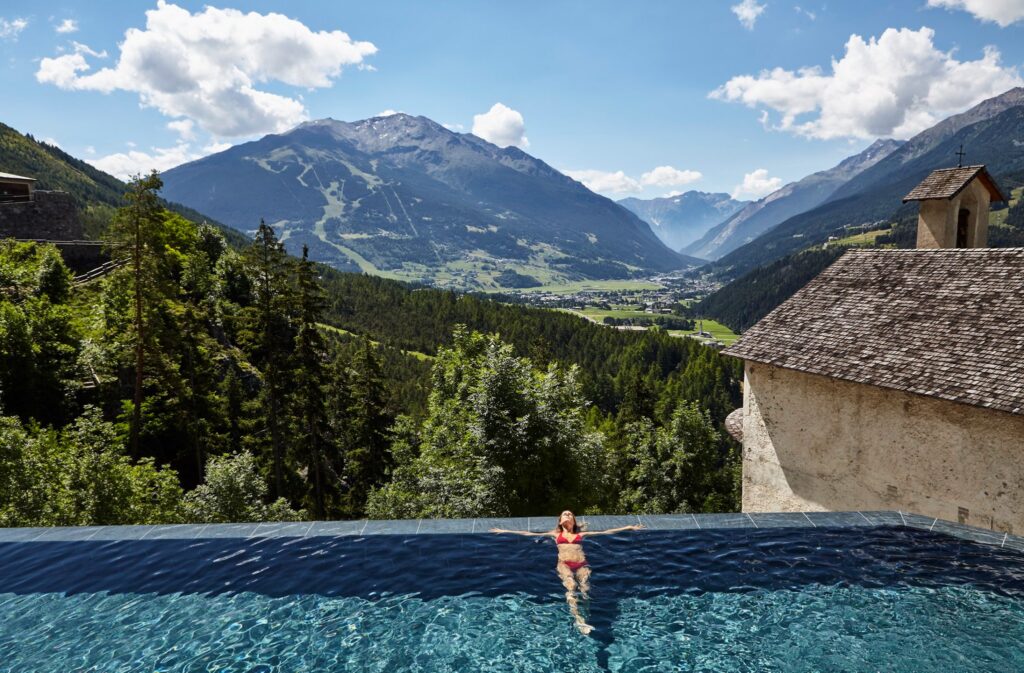
7. Relax in a Spa in Bormio
While southern Italians head to the beach, northerners are famous for their love of the mountains. Whether it’s hiking in the Alpine meadows in the summer or skiing in the winter, the alps offer no end of outdoor activities for the energetic traveler. If you find yourself in need of some fresh air and recuperation, make like the Milanese and head to the spa.
Located in the very north of Lombardy, Bormio has been a wellness destination since the Roman era, when well-heeled generals and aristocrats first lauded the benefits of taking the waters. Today there are three main spas to choose from, all offering treatments such as massages and facials as well as infinity pools and terraces that overlook the rolling hills and mountains. Check out the QC Bagni Vecchi and QC Bagni Nuovi for a relaxing weekend at one of Italy’s leading spa hotel brands.
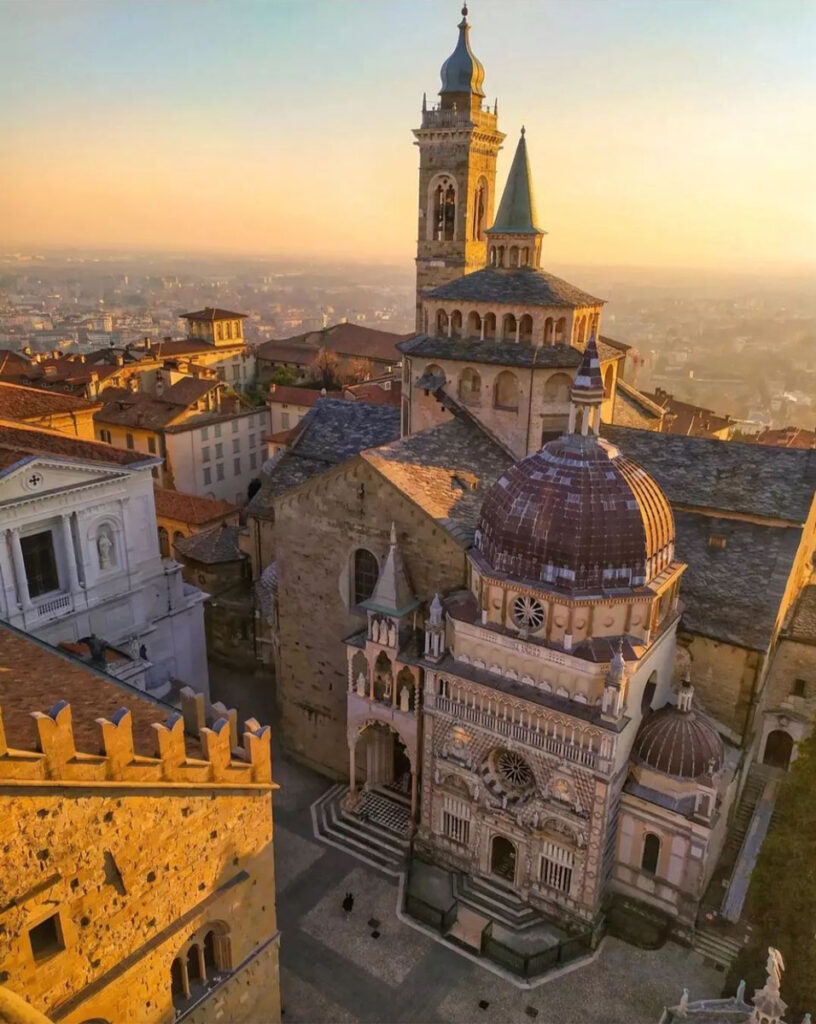
8. Explore Beautiful Bergamo
Often overlooked for its starrier neighbor Milan, we couldn’t leave Bergamo off of our Lombardy Travel Guide. La Città Dei Mille (The City of the Thousand), is divided into two parts. Explore the Città Alta (high city), a labyrinth of medieval alleyways all enclosed within the walkable Venetian wall. Charming baroque and medieval buildings look down over the vineyards below, while gentle mists rise in the autumn and winter, giving the city a gothic, hidden-away appearance. A footpath leads around the fortified walls of Cittá Alta to Porta San Giacomo, continue down this cobbled path to enjoy Cittá Bassa’s (low city) stunning palazzos.
Come for the architecture, but stay for the majestic duomo that’s located just off the main piazza. The gilded ceilings and towering sculptures are a testament to the Venetian wealth that splashed around the city during the 18th century. The cathedral is breathtaking and just a few steps from some of the best restaurants in town. After a morning of culture, make sure to stop at Da Franco or Trattoria Tre Torri for lunch of truffle risotto, wild boar pasta, or stuffed ravioli.
In this article:

Post written by: Ashleigh Joanna Searle
Leave a reply.
Your email address will not be published. Required fields are marked *
You May Also Like

A Local’s Guide To Ponza: Italy’s Secret Island

Where To Go Wine Tasting On The Amalfi Coast

A Local’s Guide To Lake Maggiore: 7 Places You Can’t Miss

12 Best Things To Do in Lombardy, Italy
Are you looking for the best things to do in Lombardy, Italy ? There are quite many, so stick around.
Located in the northeast of the country, it is one of the most popular and the most beautiful Italian regions – and certainly the wealthiest. Read on to find out the must-see attractions in Lombardy, as well as the best activities in the region.
Lombardy is a large region that ranges from the Alps to the plains, from cities of art to small medieval villages. Its capital, Milan, is the cultural and fashion epicenter of this boot-shaped country.
Lombardy, however, is much more than just Milan . Read on to find out more of the must-see attractions in Lombardy, Italy.
Table of Contents
Best Things To Do in Lombardy, Italy

If you’re planning a one-week trip to this northern Italian region, this guide to the best things to do in Lombardy should help you discover its beautiful scenery, history, culture, and delicious cuisine .
1. Discover Lombardy’s living history

If you don’t have time to visit museums or historic sites while in Lombardy, there are other ways to learn about the region’s history.
In Erba’s Castello di Casiglio and Como’s Castello di Carimate , guests can stay in rooms that date back to the 14th and 15th centuries, respectively. You may also enjoy dinner in Belle Epoque restaurants, like Ristorante Biffi in Milan, are open to the public.
In the city of Brescia, there’s a really old coffee shop that opened in 1850. Its name used to be Caffè Maffio. When it closed in 1980 and reopened a year later, the coffee shop changed its name to Zanardelli36.
This is one of the best places to visit in Lombardy if you want to discover living history. Here you will feel like you’ve been transported to an older era as you sip your morning coffee .
2. Visit the fantastic lakes of Lombardy

Lombardy is also known as the “lake region,” being home to more than fifteen. These lakes alone are enough reason for visiting the region!
All year-round, the Italian lakes are stunning. However, in the summer, when everything opens up for business, the lakes truly come to life.
Some of the most well-known lakes in the region are Lake Como, Lake Garda, Lake Maggiore, and Lake Iseo. Visiting these lakes is among the best activities in Lombardy.
Check out the best Lombardy lakes group tours here:
3. Snowsports and other mountain activities

In central Europe’s Alps region, Italy is separated from Switzerland, Austria, and Liechtenstein by the formidable mountains.
During the colder months, the mountains are a great place to enjoy cold-weather activities like skiing, snowshoeing, and snowboarding. The mountains are also a popular destination for hikers and those who simply want to reconnect with nature during the summer.
The following Lombardy mountains should be on your itinerary, whether you’re a beginner or an expert in winter sports and hiking:
• Alta Valtellina
Several of Lombardy’s best ski resorts are part of the Alta Valtellina ski area, which spans 250 miles of linked slopes and is accessible with just a single ski pass.
With its 115 kilometers of slopes, Livigno is one of the most popular ski resorts in Alta Valtellina.
The highest ski resorts for skiing in this area extend to the Stelvio Pass, which shares the border with Switzerland. It has an altitude of 3,450 meters.
• Mt. Pagano and Fortification of WWI
Upon reaching the peak, you will see the second-line fortification from World War. The defensive perimeter of the fortification is still clearly visible.
Mt. Pagano offers beautiful walks in Val Camonica .The breathtaking views allow you to get a good perspective of the Adamello and Mortirolo complex.
Click here to check out the best walks in Italy to trek and hike!
• Monte Pizzocolo
Climbing opportunities are available along the east ridge of this mountain hike on Lake Garda’s west bank.
Rated as moderate, the Monte Pizzocolo trail is mainly used for hiking and running, as well as bird-watching. It is located near Toscolano-Maderno in Lombardy.
The trail offers a perfect panoramic view of Lake Garda. You can also see the Adamello Group, the Appennines, and many other mountains in clear weather.
Here are the best snowsport and mountain activities group tours in Lombardy:
4. Ride the funicular to enjoy unparalleled views

A funicular ride is a must-do if you aren’t afraid of heights at all. It is one of the most enjoyable activities in Lombardy you shouldn’t miss when in the region.
From the charming village of Laveno-Mombello, take the Funivia del Lago Maggiore to the 1,062-meter summit of Mount Sasso del Ferro. Take the open-top cable car for a 20-minute ride if the weather is clear and sunny. The Alps and the Pre-Alps Mountains can be seen from this location.
Perhaps it’s a little overstated to refer to a funicular as a cable car. There’s enough room for two people to stand in it, yet this is what makes this ride so enjoyable!
Other Lombardy funiculars to try are the ones in Como-Brunate which offer stunning views of Lake Como, and the historic Vellone-Sacro Monte funicular which takes passengers to the sanctuary of 15 chapels dedicated to the Madonna.
Interested in funicular group tours in Lombardy? Check out these deals:
5. Explore the UNESCO Heritage sites in Lombardy

Lombardy is a veritable treasure trove for history buffs, with countless stories, structures, and artifacts to explore. The Kingdom of Lombardy once ruled this area, so this isn’t all that surprising.
The region got its name from the Germanic people known as the Lombards, who ruled the area from 568 to 774 CE. It’s a well-known historical site, and there’s a lot of interesting things to see and do.
Lombardy is Italy’s most UNESCO World Heritage Site-rich region, making for an ideal road trip rich in history, architecture, and mystique.
The historic cities of Mantua and Sabbioneta, the rock carvings of Valcamonica, the Rhaetian Railway in the Albula, and the village of Crespi d’Adda are some of the best places to visit in Lombardy, which should be part of your itinerary.
Book these unique Lombardy UNESCO sites group tours:
6. Admire Lombardy’s churches and cathedrals
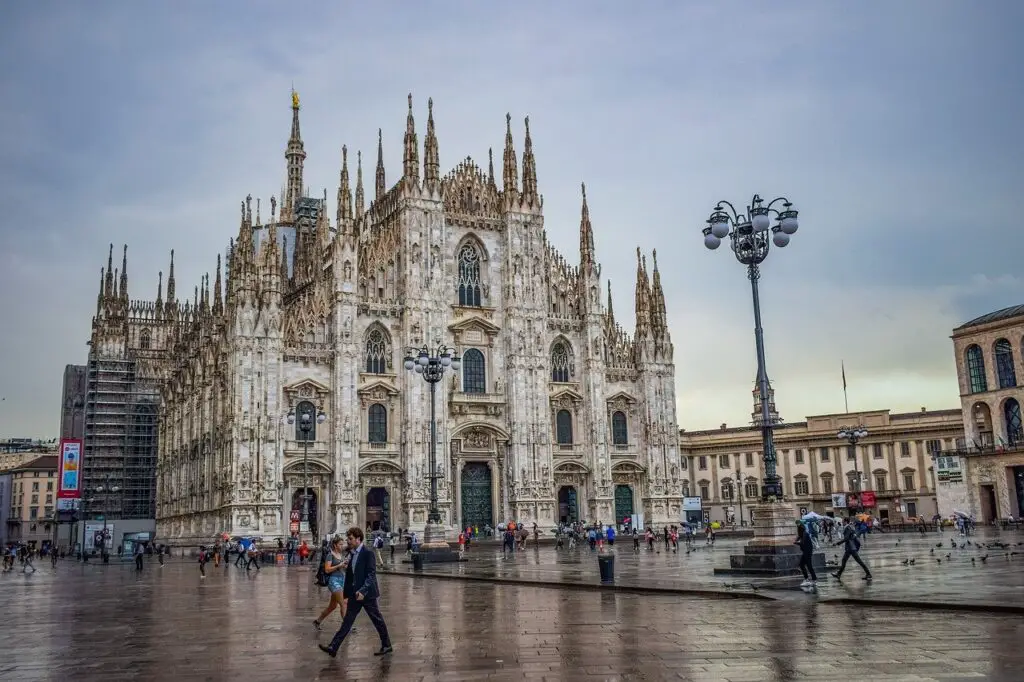
Of course, no visit to Lombardy is complete without visiting its capital city and the Duomo is always in every itinerary in Milan. Checking out these churches are among the best things to do in Lombardy.
Here’s a quick list of the best churches and cathedrals you must visit in Lombardy, starting with Italy’s largest church.
• Duomo di Milano (Milan Cathedral)
The Duomo of Milan, the largest church in the Italian Republic, took almost 600 years to finish since its construction began in 1386.
The Duomo is the symbol of Milan and one of the most beautiful churches you’ll ever see. It is an absolute marvel of architecture that everyone wants to see in the Lombardy capital.
• Cathedral of Como
This church, also named the Cathedral of Santa Maria Assunta, is the main place of worship in the city of Como. It was built between the 14th and the 18th centuries.
Considered one of the most important religious buildings of northern Italy, the Cathedral of Como is easily recognizable from its teal roof. Its blue patterned ceiling and stained-glass windows are just as impressing, and so are the altar and the dome.
The Cathedral of Como is well worth a stop if you’re visiting the famous lake nearby.
• Duomo Vecchio – Brescia
The Duomo Nuovo (New Cathedral) and Duomo Vecchio (Old Cathedral) are Brescia’s two cathedrals located in one piazza.
The Old Cathedral is also called “La Rotonda” because of its circular layout, one of the most pertinent examples of Romanesque round church in Italy. This is one of the many interesting attractions that Brescia has to offer. When you visit, check out the red marble sarcophagus near the entrance!
7. Relax at Lombardy’s thermal spas

There are numerous thermal water springs across Lombardy, with a wide array of thermal baths to choose from. The most famous of these springs is in the Valtelline Valley, near Bormio.
Bagni Vecchi di Bormio is highly recommended for an unforgettable thermal bath experience. It is a spa center that offers over 30 spa treatments and varying types of baths. Bagni di Bormio is situated along the road that leads up to the Stelvio Pass.
Another nice destination for thermal baths is the Terme di Boario in the Camonica Valley. It boasts over 150 years in the business with about 5,000 massages done each year. The place is also well-known for the magnesium waters of Boario which are said to possess excellent therapeutic properties.
8. Try your hands at traditional paper making and other local crafts
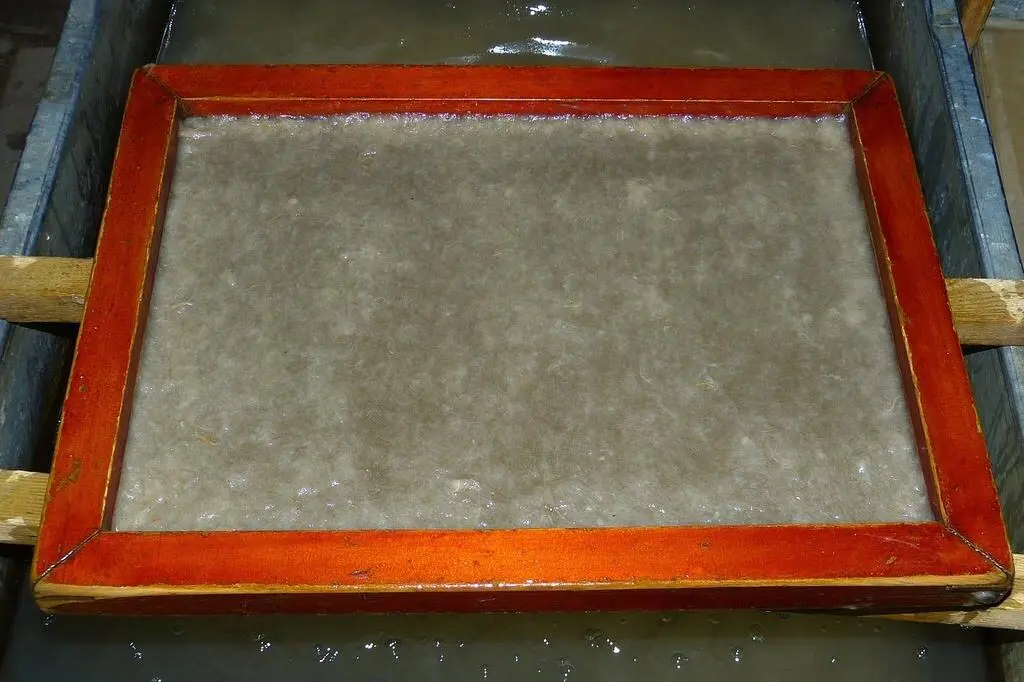
There’s a small business in Toscolano Maderno that has been in operations since 1381. It’s Toscolano 1381 company. It has been making paper for the Venetian Republic in the traditional manner for centuries.
You can go there and learn about the process of papermaking, as well as purchase sheets of paper made by one of the artisans who work there. Creating your own is even an option! When you hold a piece of paper that you made with your own hands, it will be a proud moment. It is definitely one of the unique things to do in Lombardy.
Other crafts to learn while in Lombardy are perfume-making, oil painting, and pottery.
9. Sample Lombardy’s regional cuisine

Throughout the world, Italy – or “Eataly,” if I may say so – is known for its delectable cuisine and abundance of locally-sourced produce. Lombardy, of course, is no exception in this regard.
Any Lombardy restaurant serving a good cheese dish is far superior to any you’ll find outside of Italy, even if the pizza in the south of the country is a little better.
Traditional Lombardy foods to try include the lean and delicate bresaola (a Valtellina salami made with beef that has been salted and cured for one or two months), risotto alla Milanese (a risotto rice dish flavored saffron), and Bitto, which is cow’s milk cheese from the Orobie Alps’ mountain pastures and stables.
Sampling the local cuisine is one of the absolute best activities in Lombardy.
Do you love Lombard food? Then you should book the following unique food tasting and cooking group tours:
10. Go on an agriturismo and wine-tasting session

Lombardy is home to a handful of renowned wine styles which include the bright, cherry-smelling Valtellina and the high-quality sparkling wine of Franciacorta and Oltrepo Pavese Metodo Classico, which is one of Italy’s alternatives to champagne. You can sample these wines at an agriturismo.
An agriturismo is a small, typically family-run farm in Italy that provides food, lodging, or both for visitors. It is fast becoming among the must-experience attractions in Lombardy.
In Lombardy, an example of an agriturismo is Montelio, a 13th-century agriturismo in the town of Codevilla in the province of Pavia.
Before its conversion to a private winery in 1848, the building served as a Benedictine convent. In addition to their wines, you can sample local cheese, cured meats, and frittata when you stop by for a wine tasting at the estate.
Other must-visit agriturismos in Lombardy are Cavril Agriturismo in Sotto il Monte , Relais da Vittorio to the east of Bergamo, and L’Albereta near Erbusco in Brescia. These are definitely among the best places to visit in Lombardy.
11. Shop ’til you drop in Milan

Shopping in Milan is without a doubt one of the best activities in Lombardy. As one of the world’s fashion capitals and a wealthy city filled with beautiful people, it’s only natural that it is among the world’s best cities for shopping – along with London , Paris, and New York.
However, shopping in Milan is more than just designer boutiques – although, of course, you’ll find plenty of that as well. Think of the various major Italian fashion brands , such as Prada , Versace, Armani, Valentino, Dolce & Gabbana, Missoni, Trussardi, and Moschino – all currently headquartered in this beautiful Northern Italian city. For more Italian brands that are best bought in Milan, check out this post .
For luxury shoppers, there’s Via Montenapoleone for you. It is Milan’s key shopping street, home to all mentioned designer brands and more others.
For souvenirs and mid-range to high-street brands, Corso Vittorio Emanuele II is the place for you.
For those looking for alternatives to the designer labels of the Via Montenapoleone, head to Corso di Porta Ticinese. This is a haven for denims and you’ll also find offbeat fashion brands that are much easier on the pocket .
Affordable brands can be bought at Corso Buenos Aires, said to be the longest shopping street in Europe.
12. Join in the festivals and events

Do you want to partake in the best activities in Lombardy? Well, then, plan your trip around any of Lombardy’s festivals .
Let’s pick a couple for you.
• Festa del Tartufo Nero a Bracca (Black Truffle Festival)
When : End of September to the beginning of October Where : Bracca, Province of Bergamo
If you’re visiting Bracca in late September, partake in the Black Truffle Festival. It is a week-long celebration honoring the celebration of the black truffle, a popular produce in the area.
The festival is characterized by lots of cooking and tasting of specialties offered by the participating restaurants.
This is a fun-filled event where you can visit an actual truffle ground and see demonstrations of truffle hunting with trained truffle dogs .
• Sagra del Casoncello (Festival of Casoncello)
When : Around 15 June Where : Castro, Province of Bergamo
The Sagra del Casoncello in Lombardy town of Castro attracts many visitors every year, around the middle of June. This is held in celebration of the famous fish that’s caught from Lake Iseo.
This festival is a typical Italian event in a sense that it involves a lot of eating. You will never run out of food here and all in typical Bergamo recipes. This is a perfect opportunity to sample the real casoncello, a raviolo typical of the province.
This gastronomic feast is not limited to casoncelli , though. You will also be able to partake in other culinary delights of Bergamo such as cheese , chips, and barbecue meat.
Looking for a place to stay in Lombardy? Check prices and see pictures here:
- 3 Other destinations
- 4 Understand
- 5.1 By plane
- 5.2 By train
- 6 Get around
- 12 Stay safe
Lombardy ( Lombardia in Italian and Lombard) is a northern region of Italy , and with 10 million people is the most populous one. Producing a fifth of Italy's GDP, it is also the mightiest economically. Geographically, Lombardy encompasses both Alps and Prealps in the north, and relatively flat plains in the south along the river Po and its tributaries. Between them there are many scenic lakes, and the alpine backdrop makes even the low-lying cities picturesque and the air rather fresh.
Lombardy is heavily industrialised, although most of the industry is actually not heavy, but rather mid-sized specialised machinery-building and other assembly and engineering firms, as well as consumer industries such as foodstuffs and apparel. The regional capital, Milan , is Italy's second-largest city and the foremost centre of commerce and a global fashion capital. Smaller cities also have considerable economic might, and have had so for many centuries, hence Lombardy is the region of Italy with the most UNESCO World Heritage sites - and simply, a lot of history and scenic views to explore and enjoy.
Regions [ edit ]

Cities [ edit ]
- 45.466944 9.19 1 Milan ( Milano , the capital of the metropolitan city of that name) – shares with Paris the title of fashion capital of the world, and is Italy 's second city
- 45.695 9.67 2 Bergamo – a fairytale pastel-coloured city perched atop a hillside, and the gate to Bergamo Alps
- 45.538889 10.220281 3 Brescia – a major industrial powerhouse since ancient Roman times, and a UNESCO World Heritage Site
- 45.81025 9.086139 4 Como – the city that gave the name to the popular lake
- 45.133333 10.024722 5 Cremona – home of Stradivarius violins, but also a wealth of ornate Romanesque architecture
- 45.85334 9.39048 6 Lecco – a charming litle city on Lake Como
- 45.156389 10.791111 7 Mantua (Italian: Mantova ) – the Ducal Palace has a cycle of frescoes by Mantegna that no art lover should miss
- 46.169719 9.87 8 Sondrio – the northernmost provincial capital situated amidst alpine mountain ranges
- 45.816667 8.833333 9 Varese – capital of the namesake province full of lakeside resorts
Other destinations [ edit ]
- The magnificent lakes of Lake Como - take boat trips in the shadow of the Alps to the picturesque villages of Bellagio , Varenna and Tremezzo - Lake Maggiore , Lake Garda and Lake Lugano .
- The tiny village of Erbusco , home of the award-winning wines of Franciacorta and L'Albereta , the country inn of Gualtiero Marchesi, one of Italy's premier chefs
- 45.8605 9.0972 1 Moltrasio
- The peninsula of Sirmione , on the south shore of Lake Garda
- The Caves of Catullo , an archaeological site of a former Roman villa situated on the tip of the Sirmione peninsula
- The Sirmione Spa , the largest privately owned thermal treatment centre in Italy
- 46.0075 10.3475 2 Val Camonica : UNESCO heritage site, medieval towns, castles, holy art in churches, roman sanctuary and theatre/amphitheatre, ski sports.
- 44.9925 9.00917 3 Oltrepò Pavese : Wine region in the utmost southern part of Lombardy, 70km from Milan, part of the Pavia province, medieval towns, castles, panoramic views.
- 45.970833 8.970833 4 Campione d'Italia : an Italian exclave in nearby Switzerland, with looser tax laws, a large casino, and great views over Lake Lugano
Understand [ edit ]
The Longobardis occupied the peninsula in the 6th century, and this area has been named after them ever since.
Lombardy is a prosperous region with fertile soil and a temperate climate. As in Piedmont , the Po Valley is the site of much heavy industry. High mountains in the north, marking Italy's frontier with Switzerland , provide excellent skiing and climbing.
Get in [ edit ]
By plane [ edit ].
Three of Italy's four busiest airports are in Lombardy:
- Milano Malpensa Airport is an intercontinental airport, and Italy's second aviation hub after Rome Fiumicino. It has multiple direct connections to Africa , Asia and North America , and across Europe , where it is served by full-service and low-fare carriers.
- Milano Linate is Milan's city airport, served by business-oriented flights to European major commercial centres, and by a dense Italian domestic network.
- Bergamo Orio al Serio Airport is served almost exclusively by low-fare carriers, taking advantage of its proximity to both Milan and the Alps.
Despite only Linate being in the city and province of Milan, all three airports are marketed as serving the city. One can easily get to other destinations in the province from them, without necessarily changing in Milan. There is also a small airport in Brescia. As of July 2018, it had no regular passenger flights.
By train [ edit ]
Road and train links connect the region with Switzerland. As Switzerland is not part of the EU, there is a possibility that you will be delayed by checks at the border, although these are infrequent and usually not rigorous. Remember your passport.
Get around [ edit ]
There is a relatively dense railway network connecting cities and towns in Lombardy, although the layout is intricate and getting from one place to another may not be straightforward. You should be able to reach your destination within 1 or 2 hours by train. Otherwise, buses and minibuses link important destinations, especially those popular with tourists. Hubs are usually in regional centres, as well as near major railway stations and airports; you can try to change there if there are no direct connections. Regional train network is entirely managed by Trenord .
Regione Lombardia offers a good travel planner that lets you query the whole public transportation system.
If you plan to travel a lot, it might be worth buying a io viaggio ovunque in Lombardia [dead link] pass ticket. Those tickets let you travel without limit on the entire public transport system in Lombardy, including regional trains, buses and city public transportation systems, but excluding some ferry boat lines. Although expensive, they can easily be a cheaper option than regular tickets if you travel long distances. Passes are sold at railway stations (at ticket box or automatic vending machines) and at ATM automatic vending machines. You can buy 1, 2, 3 or 7 day passes (€16, €27, €32.5, €43 respectively - February 2015).
The railway company Trenord offers some good travel packages, under the Trenord Free Time [dead link] name. The package usually includes a ticket to an attraction or a trip proposal and a train ticket to get to the destination. Most of them are really useful only if you depart from Milan. It's worth to take a look at the offers as they can also suggest you some new or lesser known itinerary that you may like.
As the Autostrada A4 runs across Lombardy, with the road system radiating from its junctions, you can get around by car as well. The A4 frequently gets congested though and traffic jams can be long and excruciating, especially around Milan. Be aware that Italians drive fast and make no allowances for foreigners, so be sure you are OK with keeping up with the traffic and occasional displays of impatience from other drivers.
Milan , Bergamo and Brescia have efficient and extensive public transportation systems.
See [ edit ]
Do [ edit ].
- Milan Fashion Weeks draw crowds of fashionistas to Milan every year.
- La Scala in Milan is a mecca for opera aficionados.
- You can enjoy water sports or more relaxed boating on the lakes.
- The Alps offer opportunities for hiking or skiing.
Eat [ edit ]
Lombardy's most famous culinary inventions are minestrone soup and osso buco (literally "ox knuckles"). To the west of Milan lie miles of rice fields, where the rice for risotto alla milanese is grown. Other typical dishes of the area include salumi (cold cuts) and polenta.
As in many other areas of Northern Italy, the aperitivo (pre-meal drink with appetisers, for which a small supplement might be charged) is very popular.
Drink [ edit ]
The wineries in Franciacorta , around Erbusco , produce many excellent wines. The region has been elevated to the status of DOCG ( Denominazione di Origine Controllata e Garantita ). Other remarkable zones for wine are Oltrepò Pavese (which is the zone around Pavia on the south banks of Po river) and the countrysides around Garda Lake.
Valtellina also produces excellent wines, famous for their strong taste and flavour.
As every big city in the world, Milan has also many high quality restaurants, wine bars and Enoteche (wine store) where you can find high class wines from all over the world.
Sleep [ edit ]
Large cities, like Milan , Bergamo or Brescia , are important business centres, so they have sizeable bases of business-oriented hotels. They are local hubs with connections to destinations within their provinces, and getting between them is also reasonably quick via a variety of means of transportation (trains, express buses or cars across the A4). Do note that accommodation in Milan is generally expensive, and prices skyrocket during major events or fairs, such as the Milan Fashion Week.
Destinations along the lines of the lakes, as well as those in the Alps, are popular with tourists, so you will find a variety of accommodation options there, from luxurious resort hotels to simple B&Bs.
Stay safe [ edit ]
While Milan features many of the usual tourist traps and con acts, as well as sizeable number of pickpockets due to the number of tourists there, other destinations are generally safe, and you can feel secure and welcome there. Do note, however, that in case you need to contact the police they can have very limited English skills and also may not be able to help foreigners much.
Go next [ edit ]
To the east is Trentino-Alto Adige and Veneto , to the south is Emilia-Romagna and Piedmont is to the south and west. Switzerland lies to the north.
- Has custom banner
- Has mapframe
- Maps with static images
- Has map markers
- Articles with dead external links
- Northwest Italy
- All destination articles
- Has Geo parameter
- Outline regions
- Outline articles
- Region articles
- Pages with maps
Navigation menu

Touropia Travel Experts
Discover the World
14 Best Places to Visit in Lombardy, Italy

Nestled up against the Alps in the very north of the country, Lombardia is most known for its spectacular lakes. Hemmed in by majestic mountains, they make for a stunning sight what with all the colourful towns hugging their shores.
While Milan and its many lovely lakes dominate most visitors’ itineraries, Lombardy has much, much more to see and do. Asides from sizeable cities like Brescia and Bergamo, the region has plenty of amazing medieval towns and villages to explore. Dotted about amidst its picture-perfect countryside, they are generally less touristy and well-known than those found in Tuscany and Veneto.
It also boasts a whole host of artistic and architectural gems of which Milan’s Duomo, and da Vinci’s Last Supper are definitely the pick of the lot. With fine local foods and sparkling wines to sample, Lombardy is one of Italy’s most rewarding regions to travel around.
14. Lake Iseo
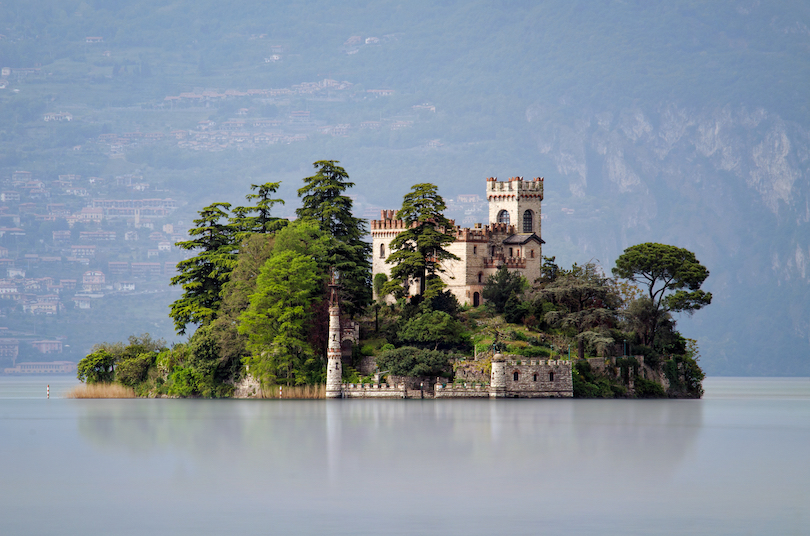
Lying in between both Brescia and Bergamo is the magnificent Lake Iseo. Far less crowded than those of Garda, Como and Maggiore, it is surrounded by lush green mountains and medieval towns.
The fourth largest lake in Lombardy, its crystal clear waters are fed by the Oglio River. All along its scenic shores are cute historic towns, tucked away at the foot of rolling hills and forests.
Of these, Sarnico and Monte Isola are arguably the most beautiful thanks to their pretty centres full of charming churches and colourful townhouses. The latter is also set in a idyllic spot, on the lake’s largest island overlooked by a mighty mountain.
You can also hike and drive around the whole lake or take boat trips out to see some other isles. Due to its authentic look, feel and untouched nature, we almost preferred Iseo to the region’s other incredible lakes.
13. Soncino
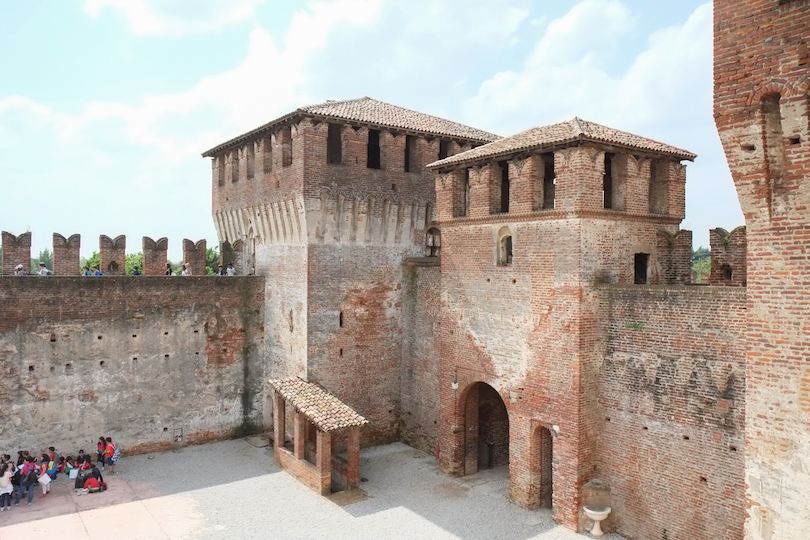
For those interested in history, the small, medieval town of Soncino is certain to be a very pleasant surprise. Almost like an open-air museum, its centuries-old castle and churches lie just over an hour’s drive directly east of Milan.
Dominating and defining the small settlement is the enormous old Rocca Sforzesca which was built back in the 1470s. One of the best examples of military architecture in all Lombardy, the tall, sturdy towers of the fortress, its moat and ramparts are fascinating to explore. It was initially erected to protect the region from the invading Hungarians before being used to slow the encroaching Venetians.
Other than checking out the castle, you can also stop by the superb Silk Museum and Museum of Printing. The latter was where the first Hebrew Bible was printed back in 1488 using the rudimentary equipment on display. Its quaint centre and countless fine churches mean Soncino is well worth its inclusion on the official list of the ‘Most Beautiful Villages in Italy’.
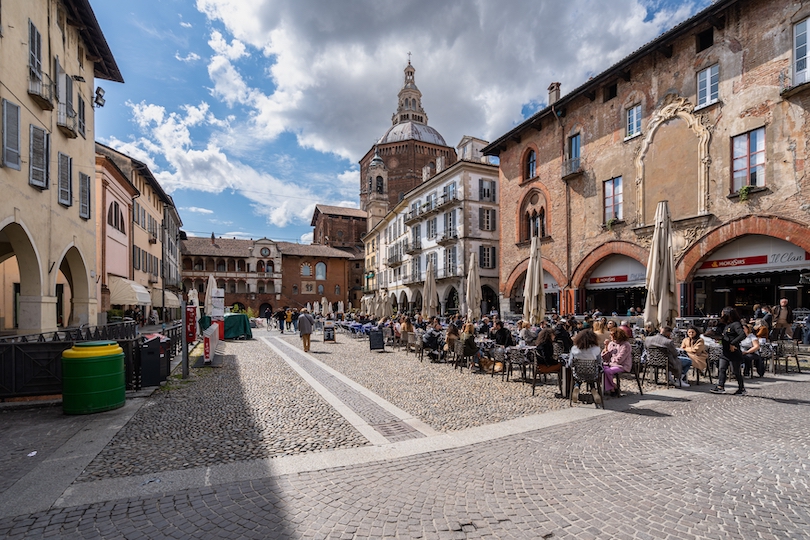
Equally arresting is the pretty city of Pavia which is situated about half an hour’s train journey south of Milan. Now most known for its incredible monastery complex on the outskirts of town, it straddles the lower Ticino River.
As it was the capital of numerous kingdoms and courts over the centuries, the city is full of fine buildings like its dramatic Duomo and colossal Visconti Castle. Once called the ‘City of a Hundred Towers’, it also boasts one of the oldest universities in Europe.
Founded in 1361, the prestigious institute’s central piazza is presided over by three tall medieval towers. Some of only a dozen or so still remaining, they make for some fantastic photos and viewing.
Although Pavia is awash with exquisite architecture and excellent museums, you just have to visit Certosa too. One of the largest monastery complexes in Italy, it was built between 1396 and 1495. Renowned for its remarkable Renaissance and Gothic-style architecture, its art-filled church, cloisters and refectory are fascinating to explore.
11. Cremona
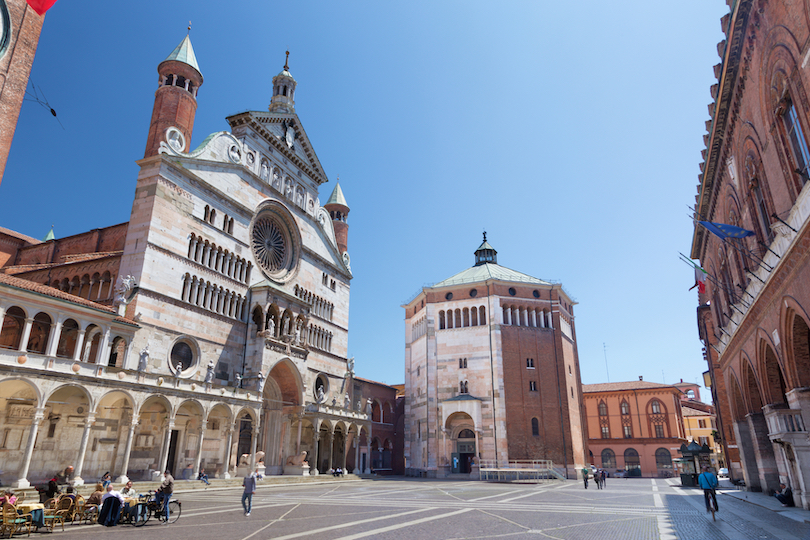
Famed for both its tasty nougat and revered violin-making traditions, Cremona has a rich history and culture to uncover. Located not far from Piacenza in the neighbouring Emilia-Romagna, its gorgeous center is a treat to stroll around slowly.
At its historic heart, you’ll find its impressive cathedral, baptistery and belltower, all clustered about Piazza del Comune. While the former is known as the ‘Sistine Chapel of the Po Valley’ due to its phenomenal frescoes, the latter’s facade boasts the world’s largest astronomical clock. Towering 111 meters tall, the soaring brick structure offers up some spellbinding views over the city below.
Aside from admiring its palazzi, make sure to stop by its excellent violin museum. As well as seeing intricately crafted instruments, it also examines how Cremona became a center for the unique artform. If you visit in November, you can try delicious torrone at its annual festival dedicated to the traditional nougat treat.
10. San Benedetto Po
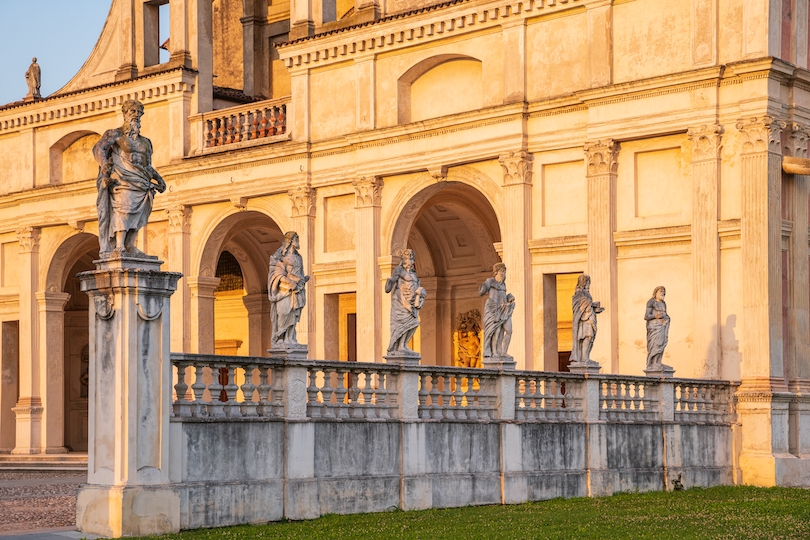
Like Pavia, the small city of San Benedetto Po is best known for its extensive abbey more than anything else. Dominating the center of town, its huge complex includes immaculate grounds, endless cloisters and enormous monastery buildings.
As it was once one of the richest abbeys in northern Italy, master craftsmen worked to improve and enlarge Polirone for many centuries. Initially established by Tedald of Canossa in 1007, it served as an important religious, cultural and political center up until 1797 when Napoleon secularized it.
While ambling about its vast rooms, you can see fabulous floor mosaics, frescos and sculptures. Elaborate altarpieces and paintings also feature while its sizeable church borders one of the largest squares in the country.
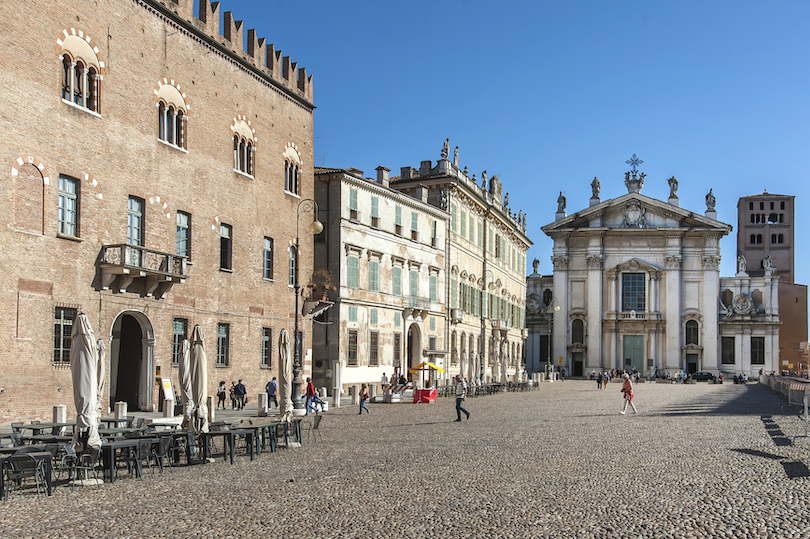
Another memorable place to head if you want to travel back in time is the magical Renaissance city of Mantua. Incredibly well-preserved, its elegant squares, palaces, and churches look like they did centuries ago.
Surrounded on three sides by man-made lakes, the city thrived under the rule of the Gonzaga family during the Renaissance. As such, it has a rich but often overlooked history and heritage for you to delve into.
Between the fourteenth and seventeenth centuries, the important, art-minded rulers constructed the absolutely enormous Ducal Palace. Now impressively Italy’s largest architectural museum, its almost endless rooms are packed with priceless artworks and period pieces.
The town also has the big Basilica of Sant’Andrea to explore and the ornate Bibiena Theater where Mozart once performed. We were absolutely blown away by its many artistic and architectural masterpieces – especially considering we’d never heard of it before arriving in Lombardy!
8. Val Camonica
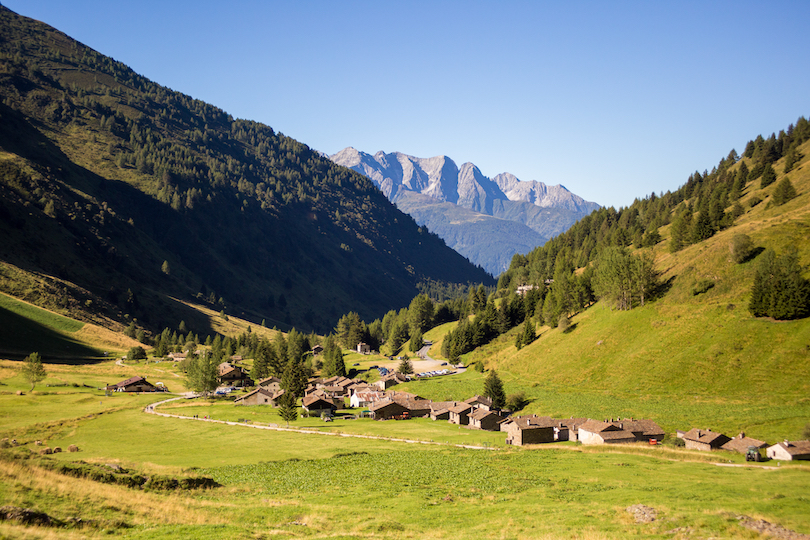
After seeing all the old historic cities and sparkling lakes, the stunning alpine scenery and outdoor activities of Val Camonica makes for a very welcome change. Lying just an hour’s drive northeast of Lake Iseo, it is most famed for its phenomenal prehistoric rock art.
One of the largest valleys in the central Alps, it extends about ninety kilometers with the Oglio River running its entire length. Now recognized as a biosphere reserve, it encompasses flower-filled meadows, narrow gorges and towering mountain peaks.
Asides from basking in the valley’s breathtaking beauty, you can hike and bike about or ski and snowboard in winter. As it contains the most rock drawings in Europe, you also have to see some of its 300,000 ancient petroglyphs. To top it all off, there are charming towns like Bienno and Lovere to stop off at and explore.
7. Castellaro Lagusello
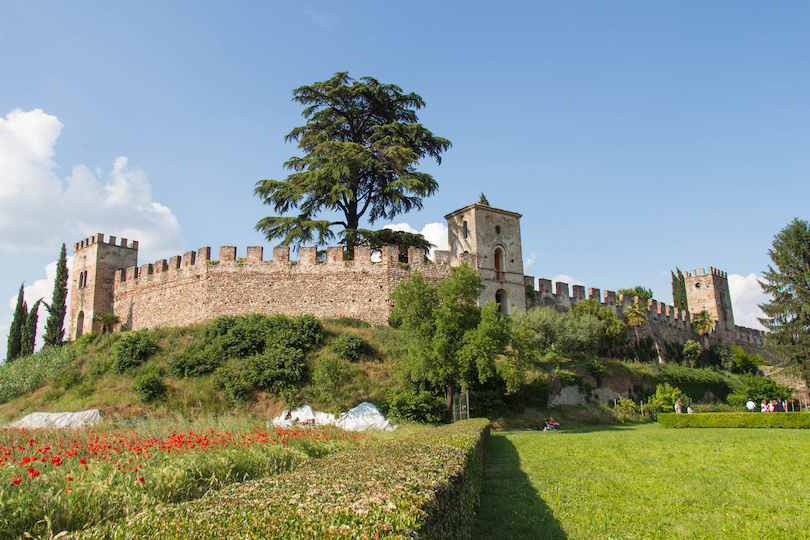
Perched atop a hill overlooking a heart-shaped lake, the fortified town of Castellaro Lagusello is every bit as romantic as its setting implies. Remarkably well-preserved, its winding cobbled lanes and castle walls really are lovely to wander around.
Another of the ‘Most Beautiful Villages in Italy’, it was founded in the twelfth century by the influential Scaliger family. Protecting the strategic hilltop are lots of old stone towers and archways, set in the side of its formidable fortifications. From atop the town’s bell tower, you can drink in delightful views over its terracotta rooftops, lake and surrounding countryside.
Other than strolling about its peaceful streets and seeing all the arresting artworks in the church, you can hike or bike about its nearby vineyards, woods and hills. As the hamlet is set not far from Lake Garda, you can easily include a stop when exploring the area.
6. Lake Maggiore
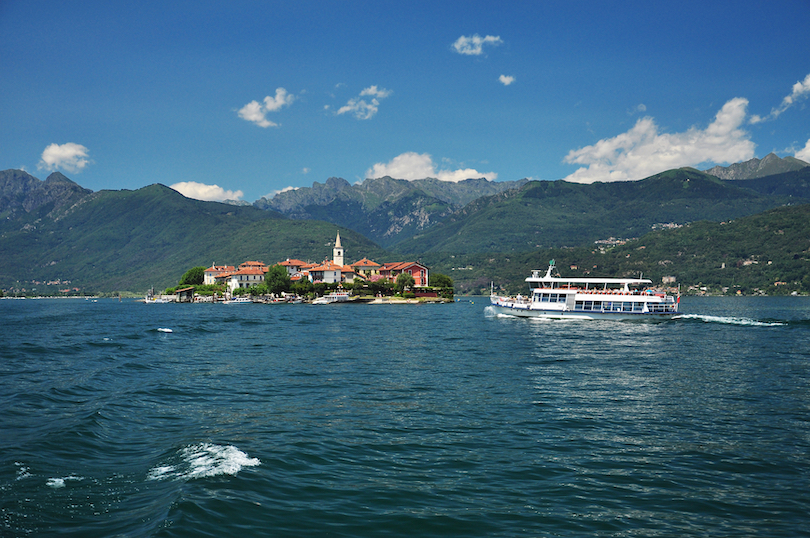
Straddling the border with Switzerland is the massive Lake Maggiore. Overlooked by the snow-topped Alps, its long shoreline is split between Piedmont and Lombardy on the Italian side.
Quite wide for the most part, its reflective waters stretch almost 65 kilometers in total. Looming above the ginormous lake’s jagged banks and glinting bays are the Pennine and Lepontine Alps while small isles dot its surface below.
Besides taking boat trips to the Borromean and Brissago Islands and strolling about their gorgeous gardens, you can visit some of the idyllic towns studding its shores. Of these, Angera and its imposing castle is arguably the most popular and picturesque to visit in Lombardy.
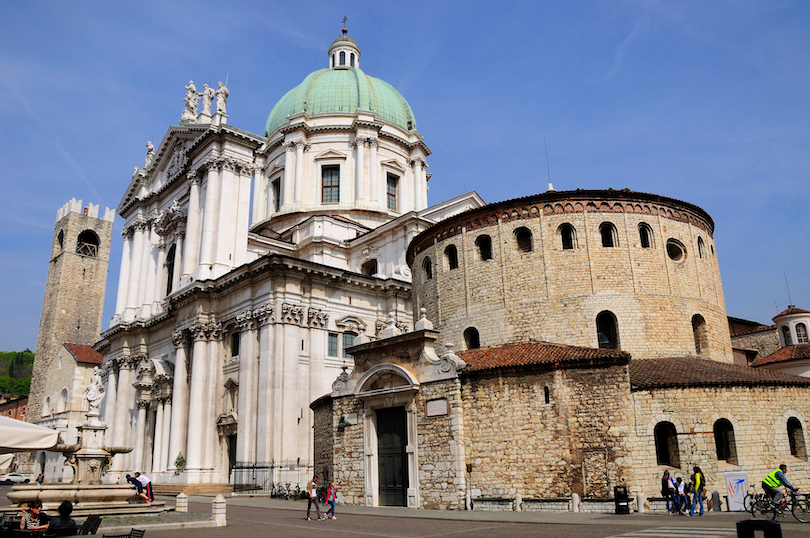
Although it is the region’s second largest city, Brescia sees a lot less visitors than the lakes, Milan and many of its other nearby neighbours. This is a shame as its endless Roman ruins are among the best preserved in northern Italy .
Founded over 3,200 years ago, its center is literally littered with impressive churches, squares and palazzi wherever you look. Just like with Rome, every corner seems to reveal ‘new’ millennia-old monuments and ruins for you to take in.
Our favourites included its amazing Roman amphitheatre, sanctuary and temple and the Monastic Complex of San Salvatore-Santa Giulia. While the former has fantastic frescos to examine, the latter houses more than 11,000 artworks and archaeological findings.
It’s new and old cathedrals were also special to see as was the enormous Castle of Brescia which affords guests stupendous views over the city. If you couldn’t already tell, we loved Brescia and could definitely recommend spending a few days exploring its old streets.
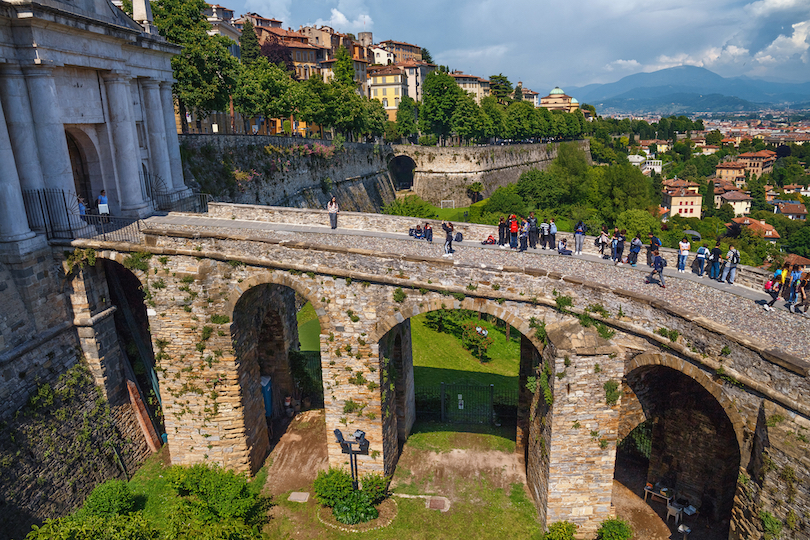
Another overlooked gem is the historic hilltop city of Bergamo which lies aroundabout a forty-five minute train ride from Milan. As it was ruled for centuries by the Lombard Duchy and then the Republic of Venice, it exhibits a unique mix of architectural styles and culture influences.
Clustered atop the crest of its prominent hill is a warren of wonderful old baroque and renaissance buildings. Outside the Citta’Alta’s protective ring of Venetian walls is the more modern lower town that spreads across the plain below. Connecting the two is a short, steep funicular ride that whisks you between them in no time at all.
Highlights include the refined Piazza Vecchia and richly decorated Basilica di Santa Maria Maggiore. In addition to ambling about taking in all its arresting architecture, you can visit some of the numerous art galleries and museums that explain all about the city’s captivating past.
3. Lake Garda
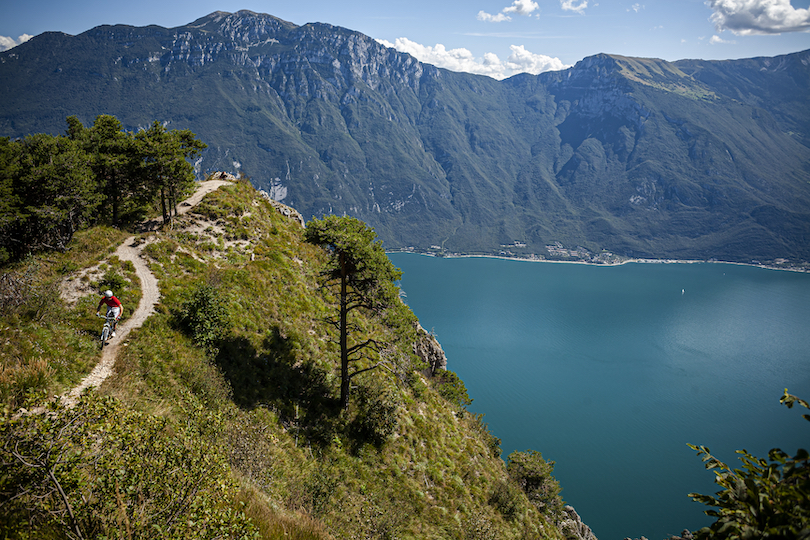
The largest lake in Italy, Garda offers up all kinds of exciting outdoor activities, water sports, and sightseeing opportunities. Located in between both Brescia and Verona in Veneto , it too is one of Lombardy’s top holiday destinations.
Formed by giant glaciers during the last ice age, Lake Garda vast basin lies amidst the Alps to the north and Po plain to the south. Scattered about beneath all its craggy cliffs and dramatic mountain ranges are colourful towns and villages to visit.
As it is surrounded by water on three sides, Sirmione, its very narrow promontory and centuries-old castle is the most popular to explore. Aside from snapping some pics of its cool crenellations against the bright blue sky, we also liked lounging on its beach.
From Desenzano del Garda, the lake’s largest town, you can also take ferries across its shimmering surface. Some fun jet skiing, sailing, and windsurfing can also be had with its mighty mounts rising up in the background.

A busy, bustling metropolis, Milan is Italy’s wealthiest city and both its financial and industrial heart. While it is a bit less visually striking than many of the nation’s other main cities, it is still feted for its fashion, art and architecture.
The capital of Lombardy, it now covers an absolutely enormous part of the Po Valley. Although only a few reminders of its Roman past still remain, it does boast one of the most beautiful buildings in the world: the Duomo. Erected between 1386 and 1877, the gigantic Gothic cathedral’s ostentatious facade is sure to shock any visitor with its artistry. We also enjoyed walking about its roof where you can examine its impressive architectural flourishes from closer up.
See also: Where to Stay in Milan
After shopping at the grand Galleria Vittorio Emanuelle II and admiring its cast iron, glass roof, make your way to Navagli as night falls. Amidst all the hip neighborhood ’s ancient canals, you can dine at trendy restaurants and try some splendid wine bars.
1. Lake Como
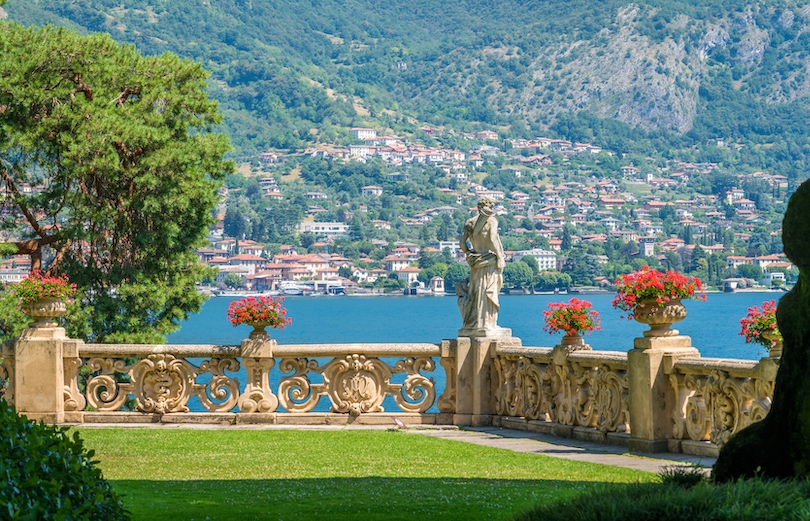
One of the prettiest parts of Italy (and that’s really saying something!), Lake Como has been a popular destination since Roman times. As well as spectacular scenery, nature and views, it has lots of gorgeous lakeside villas and towns to explore.
The third largest lake in all of Italy after Garda and Maggiore, its distinctive ‘Y’ shaped waters are lined by marvellous mountains and sweeping valleys. Dotted all along its scenic shores are elaborate gardens and attractive estates like Villa Carlotta and Villa d’Este. Besides lovely landscaped lawns and colourful flowerbeds, these offer divine views out over the lake.
The main town everyone heads is the chic and sophisticated Bellagio which has long been a favourite haunt of the rich and famous. Although it is not quite as elegant, the lively Como at its southern end also attracts tons of tourists. Wherever you go around the lake though, you’re guaranteed unforgettable views, food and holiday snaps.
Map of Places to Visit in Lombardy, Italy
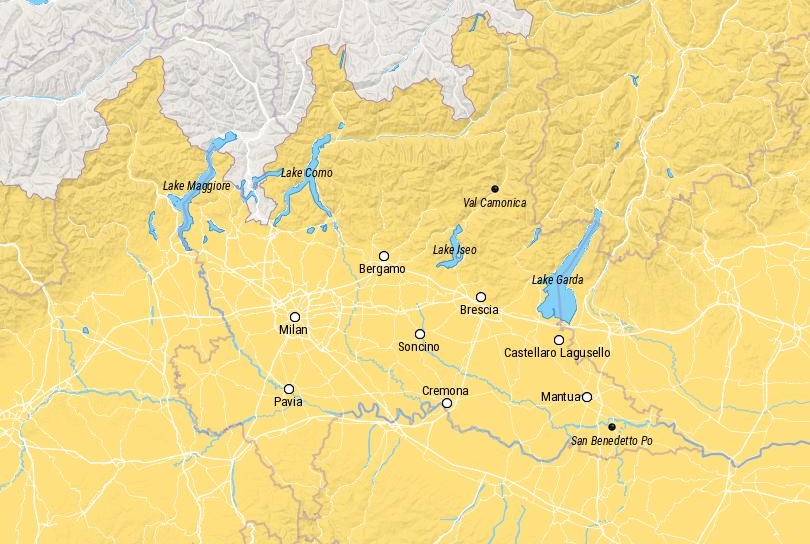
Share this post:
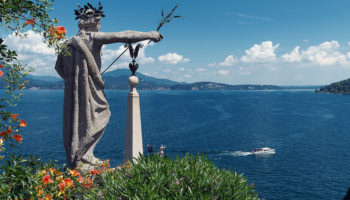
10 Best Day Trips from Milan
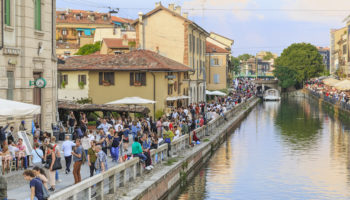
Where to Stay in Milan: Best Neighborhoods & Hotels
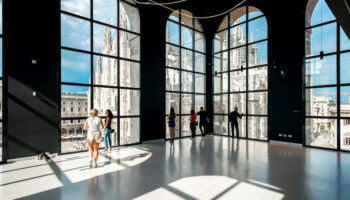
23 Top Attractions & Things to Do in Milan
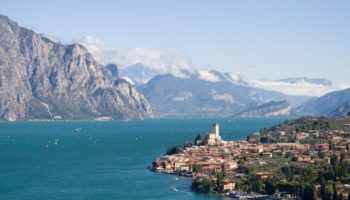
10 Top Destinations in Northern Italy
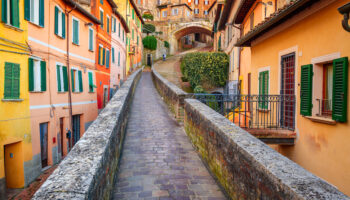
17 Best Things to do in Perugia, Italy
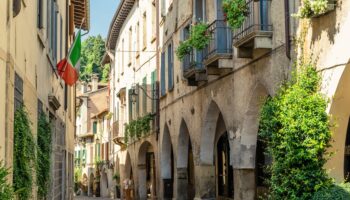
14 Best Places to Visit in Veneto, Italy
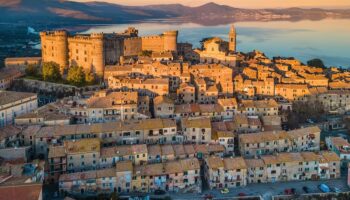
14 Best Places to Visit in Lazio, Italy
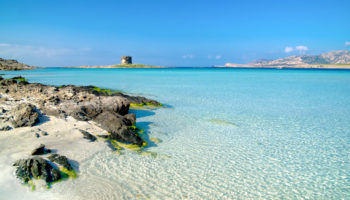
Where to Stay in Sardinia: Best Towns & Hotels
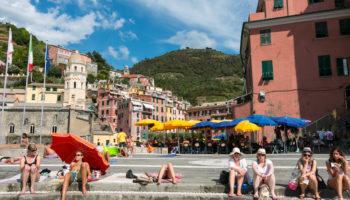
Where to Stay Cinque Terre: Best Towns & Hotels
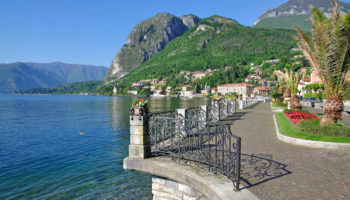
Where to Stay in Lake Como: Best Towns & Hotels
Reader interactions, leave a reply cancel reply.
Your email address will not be published. Required fields are marked *
This site uses Akismet to reduce spam. Learn how your comment data is processed .
Explore Lombardy

Plan Your Trip to Lombardy: Best of Lombardy Tourism
Essential lombardy.
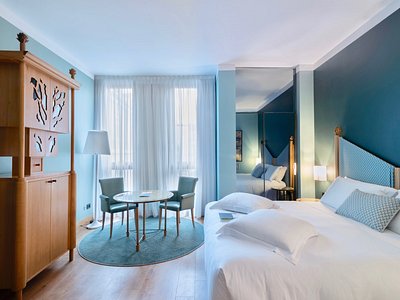

Trending in the forums
Lombardy Is Great For
Dining experiences.

Historical Tours

Shopaholics
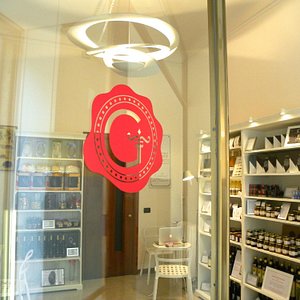
Cultural Tours

Architecture Tours

- Lago di Como
- Lake Maggiore
- Villa D'Este Golf Club
We Are Travel Girls
A Community Created To Inspire, Connect, Educate & Empower Female Travelers
EUROPE , ITALY · May 6, 2021 Last Updated on March 14, 2024
ULTIMATE GUIDE TO ITALY’S LOMBARDY REGION
This post may contain affiliate links. As an Amazon Associate I earn from qualifying purchases. We may receive a small commission when you make a purchase using our link.
Lombardy is the glitz and glamour of Italy – a combination of the fashion-forward Milanesi and the luxury lakeside villas of Como, sprinkled with a bit of countryside charm.
Being Italy’s most modern and industrialized region and an area of diverse topographical landscapes, Lombardy boasts many things to do for both the laidback and adventurous female traveler.
This is the only guide you’ll ever need to Lombardy to have a perfect trip!
Arriving In Lombardy
Lombardy has two major airports and several smaller airports so that you can be flexible with flight bookings. Milan Malpensa (MXP) is the largest airport, while Milan Linate (LIN) is the other main airport.
Both airports are similar and easily accessible on the outskirts of Milan.
Secret Tip: If you’re flying on a budget and from within Europe, Orio al Serio Airport in Bergamo is a hub for RyanAir flights! Consider flying into Bergamo for your cheapest option of arriving in Lombardy.
You can also take a train or drive to enter Lombardy, as it borders Switzerland to the north.
Transportation In Lombardy
The easiest way to travel and explore Lombardy is by renting a car . It will offer you the most flexibility to get around the region!
Luckily, Lombardy is well-connected by regional trains. You can pretty much get anywhere your heart desires by train, even in the remote towns of the Alps like Tirano.
Lombardy is a mid-range to an expensive area of Italy to visit. Notable places like Milan and Lake Como are more expensive than less notable areas like Bergamo and Lake Iseo.
Almost everywhere will take credit cards in Lombardy. As it’s the most industrious region of Italy, it’s hard to be somewhere that is so rural that they take only cash.
Lombardy boasts a huge range of types and prices of stays, from traditional agriturismo (farm stays) to villas to luxury hotels, so you can really customize your trip to your budget.
Food In Lombardy
You’ll find many places to eat pizza and pasta in Lombardy, but the regional cuisine of the north is actually quite different from what stereotypes exist about Italian food.
Polenta, risotto, stews, and meat are more commonly eaten here than in the Mediterranean south. The robust diet of Lombardy’s inhabitants is a reflection of their climate and geography.
Some of the dishes you should definitely try are:
- Risotto alla Milanese
- Casoncelli alla Bergamasca
- Any kind of Polenta (with Fontina or Asiago Cheese is delish!)
- Cotoletto alla Milanese
City Breaks In Lombardy
Lombardy is the economic powerhouse of Italy. Industry and modernization are more common in this region than in any other.
You’ll still find traditional small towns and historic city centers, but you’ll also get to see how Italy is blending its rich cultural traditions while innovating for the future.
From mountains to lakes to world-renowned cityscapes, Lombardy offers unique experiences everywhere you turn. There’s no better place to start a guide to Lombardy than the heart of the region, Milan.
Milan is the second-biggest city in all of Italy and one of the most famous in the world for its fashionable, fast-paced lifestyle.
The allure and grandeur of Milan live up to expectation and potentially even exceed it as you climb up the Metro steps into Piazza Duomo .
Emerging into view is the centerpiece of the city, a behemoth of white stone that you can barely fit into one glance.
To the left of the Duomo is the breathtaking Galleria Vittorio Emanuele II , a shopping gallery glittered in blinding gold tiles.
Climb up the steps at the front of the Galleria to Terrazza Aperol to have aperitivo with a unique perspective of the Duomo.
Visit Milan’s modern sector to see an un-Italian kind of site – skyscrapers. Milan is known for its being the financial capital of Italy.
The Borgo Verticale are stunning modern apartment buildings now famous for the vertical plants growing off the entire structure.
My favorite off-the-beaten-path spot that the Milanesi have kept a secret from tourists is the neighborhood of Navigli. It’s an eclectic, young, and lively neighborhood connected by canals.
Here are some of the best hole-in-the-wall restaurants and bars, including Taglio and Le Striatelle di Nonna Mafalda.
I believe anyone visiting Lombardy should see Milan once. However, you don’t need more than one day of your jam-packed Italy itinerary dedicated to this city!
There is so much more to experience in Lombardy, which is exactly what I’m shining the light on.
A highlight of Lombardy is its second-largest city, 40 minutes from Milan, the perfect distance for a day trip.
Bergamo is a hidden gem in Lombardy. When compared to Milan or Lake Como, Bergamo is barely touched by tourism.
However, I don’t expect it to last for long since the city has so much to offer!
Bergamo is a unique city made up of two main areas – Città Alta and Città Bassa.
Città Alta, the upper town, is situated on a hill fortified by 16th-century Venetian walls. These walls preserve this city’s history, dating back to the middle ages.
Città Alta is a fairytale hilltop of cobblestone streets, ornate cathedrals, and stunning views over the countryside.
The easiest way to reach Città Alta is to take the cable car, or Funicular, from Città Bassa. It only costs 1-2 euros.
You can even take a second funicular from Città Alta up to the highest spot on the hill at Castello San Vigilio . An old military fort, the Castello San Vigilio is the perfect place to walk around for an afternoon stroll or even have your own picnic.
For a change of pace, visit Città Bassa, where you can shop on the main promenade of Via XX Settembre, or enjoy a cocktail at Roof Garden Restaurant with a view of Città Alta.
Italy’s Lake Region
Many know Lombardy for modern Milan, but more are beginning to know it for its luxe lake retreats. Lombardy is Italy’s lake region, with several of its biggest lakes located within it, Lago Maggiore and Lago di Garda.
You can’t go to Lombardy without experiencing this side of its landscape. Each lake has incredible views and picturesque towns to boast, so you can’t go wrong in choosing (choose them all if you can!)
Ever since the Internet found out about where George Clooney vacations, Lake Como has become one of Italy’s most popular destinations for a good reason.
Lake Como is easy to reach from Milan and a stone’s throw away from Switzerland. Dotted along its banks are tiny towns in hues of orange and red. Angle your neck ever so slightly above, and you’ll see the towering mountains: you’re at the foot of the Alps.
You can access Lake Como in a variety of ways. If you’re driving, you can drive to nearly every town along its banks (although watch out for limited parking.)
You could also take the train to Lecco and a ferry boat around the lake to some of its prettiest towns, like Varenna and Bellagio.
My personal pick for the best town to visit on Lake Como is Varenna. Not only is there a convenient parking garage (ah, the things that we grow to love as travelers) but Varenna is a quiet escape on what has become a touristy destination.
I’m not saying there are no tourists in Varenna because there are. There are just fewer than other towns, like Bellagio.
Plus, if you visit in the fall or the shoulder season, you’ll certainly avoid any crowds.
Check out Villa Monastero and stroll along the boardwalk.
I tend to lean towards planning trips that are off-the-beaten-path, but I have to say, I am a sucker for gorgeous Bellagio .
It is very touristy in the summer months, but its charm and beauty are hardly tarnished when you look out to the views, walk along the boardwalk, or grab a gelato while waiting for the ferry.
You can easily ferry between Varenna and Bellagio and even pay for your car to be transported on the ferry with you.
If you love the path not taken, then you’ll love Lake Iseo. It has a hearty and authentic quality to its people and its surroundings.
The only vacationers you will find here are other Italians and maybe a few Germans. It doesn’t boast the same colorful brigade of houses as Lake Como, but it does come with a gem of its own.
Monte Isola
Said gem is Monte Isola, a large island in the middle of this small-ish lake.
You’ll be transported into an old Italian film upon stepping out of the transfer boat to Monte Isola.
A row of aged but charming houses-turned-restaurants, inns, and cafes take up the little space between the foot of Monte Isola’s hill and the soft lull of waves bouncing off the island’s edge.
Natives zoom by on their Vespas (because it’s too small for cars) while are others are arriving by boat, bringing what they’ve fished back home for dinner.
The amount of peace and serenity on this little lake island, combined with the genuine people and simple way of life, makes you want to start building your own casa beneath your feet.
When returning to the mainland’s shores at Sulzano, drive south on Via Battisti only 5 minutes to Darsena21 . Here you’ll have another magical experience of an elegant aperitivo on an old dock.
The views of mountains and the sounds of waves will have you never wanting to leave.
My favorite of all the lakes in Lombardy is Lake Garda. It’s the largest lake in Italy yet feels intimate and romantic. The mountains drape down the lake from north to south, and windsurfers and boaters alike make good use of its soothing, calm waters.
Interestingly, Lake Garda is part of three regions of Italy. The west half of the lake belongs to Lombardy, while the east half is part of Veneto. The very northern part of Lake Garda is in Trentino-Alto Adige.
There is an abundance of beautiful towns along Lombardy’s coast of Lake Garda. My favorite is Sirmione.
Sirmione has all the picturesque frames anyone with a camera desires to shoot in Italy.
The town is built upon a tiny peninsula at the south of Lake Garda. Its medieval Castello Scaligero and the turquoise blue moat has become Insta-famous and has drawn interest from around the world to this small historic center.
The castle is spectacularly located beside the town center, where despite the bustle of shopper and eaters, you can hear the lull of the lake less than 100 steps away.
I’m not just recommending Sirmione because of its Instagram popularity. There is more to experience in this sweet town than the photogenic Castello Scaligero.
Its unique location as a peninsula reaching out into Lake Garda means you get nearly 360-degree views from its highest points.
My favorite part is a walkway that circles nearly the entire peninsula where you can be right next to the lake.
Sirmione also has an archaeological site of ancient grottos, the Grotte di Catullo , at the peninsula’s tip for a small entrance fee.
On your walk to the grottos, make sure to walk through the park of olive trees basking in the sunlight and take in the view.
At the beginning of this guide to Lombardy, I mentioned the variety of topographical landscapes. The region is home to Italy’s largest fertile valley, the Po valley through flows which the largest river in Italy, Po.
A dissonance is created when the valley meets the largest chain of mountains in Europe, the Alps.
Lombardy has a unique beauty because of these diverse landscapes and appeals to all kinds of travelers for the variety of things you can do.
San Pellegrino Terme
A best-kept secret of locals in Lombardy are thermal baths. QC Terme is a brand of spa thermal bath hotels in Europe (and even one location in New York!)
San Pellegrino Terme is one of their most beautiful retreats, as it’s tucked away in the mountains of Val Brembana.
Its ornately decorated hotel and dreamy infinity pool give you all the luxury feel but can be customized to fit your budget. You can stay the night or go for the day – in either case; you’ll still be able to take in the breathtaking views and experience a relaxing retreat.
If relaxing at a spa isn’t for you, but outdoor adventures are, look no further than Livigno. Near to the border of Switzerland, Livigno is as far north as you can get in Lombardy.
This small town is well-known for its skiing and mountain trails, so it is best to visit in the winter. Pack your boots and coats!
Extra Tips for Visiting Italy’s Lombardy Region
- Visit from the months of September to March to avoid the busy tourist season.
- Rent a car to make the most of visiting Lombardy, but remember to factor in tolls, parking, and finding accommodation with parking in your budget.
- Remember always to validate your tickets for public transportation in Italy to avoid a fine. There will be a small machine on a bus, in the train station, or boarding a cable car, where you’ll insert your ticket to be stamped.
After uncovering everything there is to know about Lombardy in this travel guide, the only thing left to do is pack your bags and discover this diverse and magical region of Italy for yourself.
Buon Viaggio!
We hope that this article has helped inspire you to visit Italy’s Lombardy Region. If you have any questions about the destination or have your own travel tips to share please leave these in the comments below.
Want to share your own travel tips by guest writing for We Are Travel Girls? Go to our Contribute page for guidelines and to submit your article.
Subscribe to get access to our FREE eBook with tips for saving money when you travel!
Read More About Italy
- 7 Reasons To Add Lago Di Braies To Your Next Italian Getaway
- Visiting The Cascate Del Mulino Hot Springs
- 10 Essential Things To Do In Capri
- The Best Of Northern Italy In 4 Days
- 10 Reasons Genoa Should Be On Your Bucketlist
We Are Travel Girls Contributor Michela Sieman SheGoesTheDistance.com Connect with Michela Instagram | Facebook | Pinterest
Pin For Later
This article may contain affiliate links, if you purchase something using one of our links we may receive a commission. Please see our Disclosures for more information.
You’ll Also Love
Leave a reply cancel reply.
Your email address will not be published. Required fields are marked *
Notify me of follow-up comments by email.
Notify me of new posts by email.
- Travel Girls Getaways
- DESTINATIONS
- TYPE OF TRAVEL
- TRAVEL RESOURCES
- AMBASSADOR PROGRAM
- TRAVEL GIRLS GIVING
Get Access To The Travel Resources Library
Subscribe to receive free access!
- Work With Us
- TESTIMONIALS
- DISCLOSURES
- TERMS OF SERVICE
- PRIVACY POLICY
- ACCESSIBILITY
COPYRIGHT © 2023 WE ARE TRAVEL GIRLS
Exclusive Member of Mediavine Travel

10 Reasons to Visit the Region of Lombardy in Italy – From Milan and Lake Como to Lombardy’s History, Nature, and Art
By Author Rossi Thomson
Posted on Last updated: 4th September 2022
Categories Lombardy
Here are ten reasons to visit Lombardy – the Italian region that has the worldwide famous city of Milan as its capital.
Known as lombardia in italian, you will find it right in the centre of the cuff of the boot of italy. from this top location, it plays a leading role in the country’s commerce, industry, and cultural life..
Plus, many of Italy’s most coveted destinations are on the territory of Lombardy. Lake Como is a case in point. Perennially popular, it attracts both travellers and Hollywood stars eager to experience the beauty of Italy.
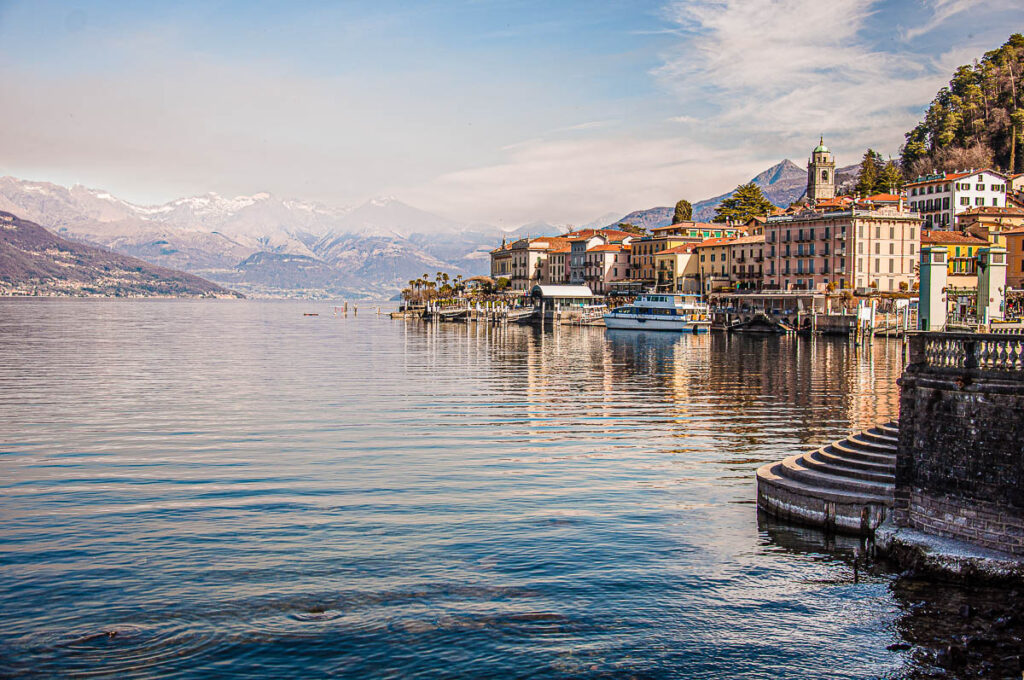
Lombardy also includes a significant portion of the Italian Alps, some of the prettiest northern Italian lakes, as well as many historic towns and cities the names of which have become synonymous with art. Impressively, the region also has the highest concentration of UNESCO World Heritage Sites in all of Italy.
With Switzerland to the north, and the Italian regions of Trentino-Alto Adige and Veneto to the east, Emilia-Romagna to the south, and Piedmont to the west, Lombardy is easy to reach from anywhere in Italy , Europe, and the world.
The region’s busy airports, high-speed railway network, and fast highways make a trip to Lombardy a quick and easy experience. It’s not surprising then that millions of visitors flock to this corner of Italy every year eager to see Milan and Lake Como for themselves. Many of them also use Milan’s international airports as a point of arrival for a wider-reaching Italian holiday.
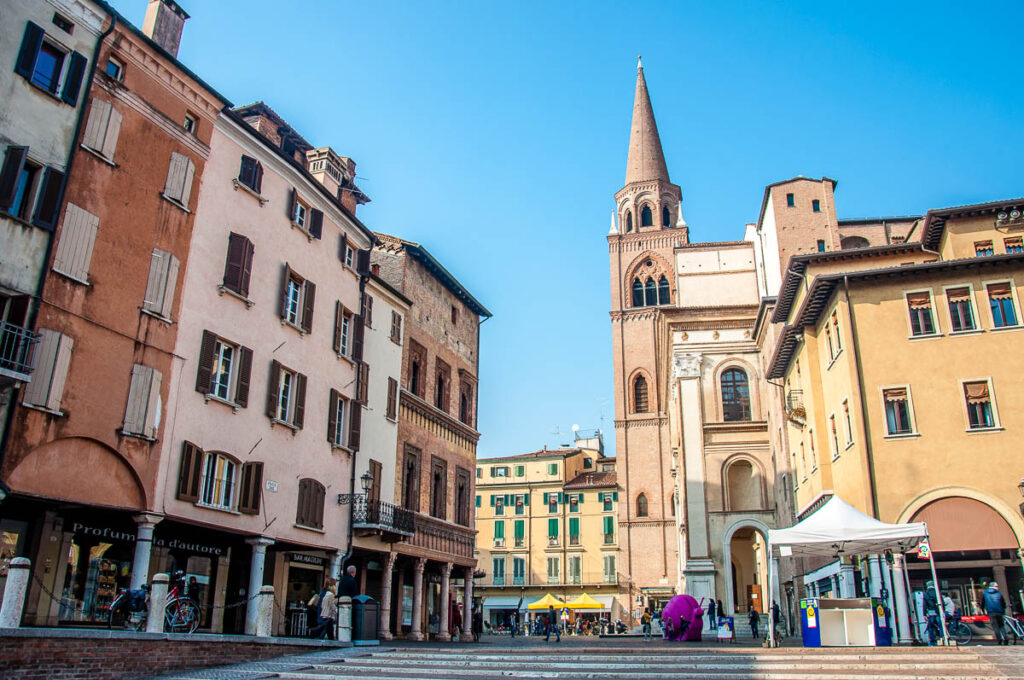
Lombardy, however, is so much more than just its capital and famous lake. This is a place of millennial history, refined art, centuries-old music heritage, and delicious local food.
It’s a land where many of Italy’s most famous historic figures lived and worked. Among them are the Roman author and natural philosopher Pliny the Elder, the polymath Leonardo da Vinci, and the pioneer of electricity Alessandro Volta.
It’s also the most cosmopolitan Italian region which, at the same time, has many towns and villages with perfectly preserved medieval and Renaissance look and feel.
All this makes Lombardy a very exciting place to explore. No matter what you may be passionate about – history, art, sports, food, famous landmarks or traditional festivals and lively events – in Lombardy there are many ways to indulge and expand your interests.
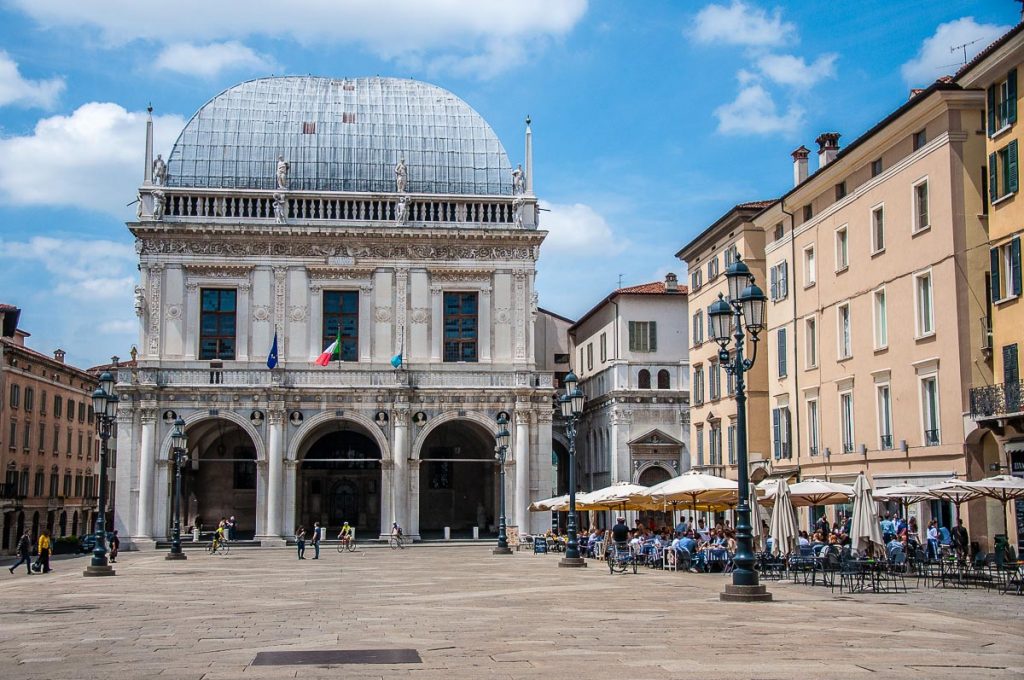
I am a big fan of Lombardy in Italy myself. I love visiting and revisiting its cities , villages, mountains, and lakes, its hidden corners and worldwide known gems.
So, in this blog post today, I will give you the ten best reasons that make Lombardy a must-see destination in Italy. From its cities, history, music, and art to its stunning nature and centuries-old traditions and culture, it’s all covered. Plus, this easy to read travel guide is peppered from start to finish with practical travel tips that I personally tried and tested over my many visits to Lombardy.
I hope that you will enjoy reading it, looking at the photos I took of the Lombardian nature and sights, and that you will feel inspired to head to this beautiful Italian region as soon as possible. It’s the perfect place for a weekend trip a longer Italian holiday.
Find out why!
10 reasons to visit the region of lombardy in italy – from milan and lake como to lombardy’s history, nature, and art.
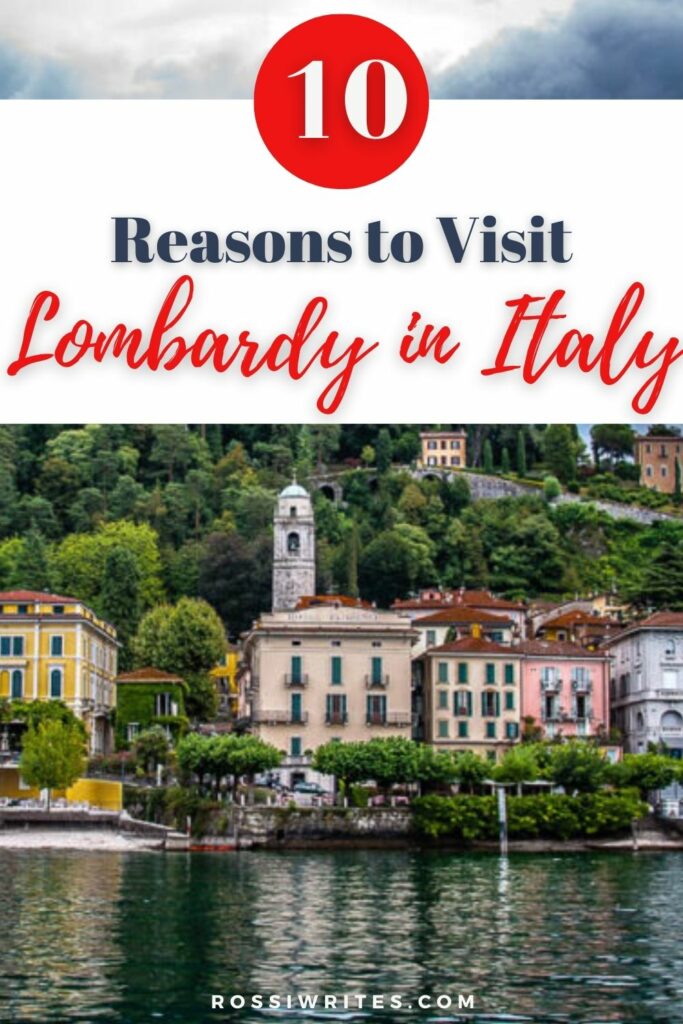
1. Lombardy’s Capital Milan – Experience Italy’s Most Cosmopolitan City
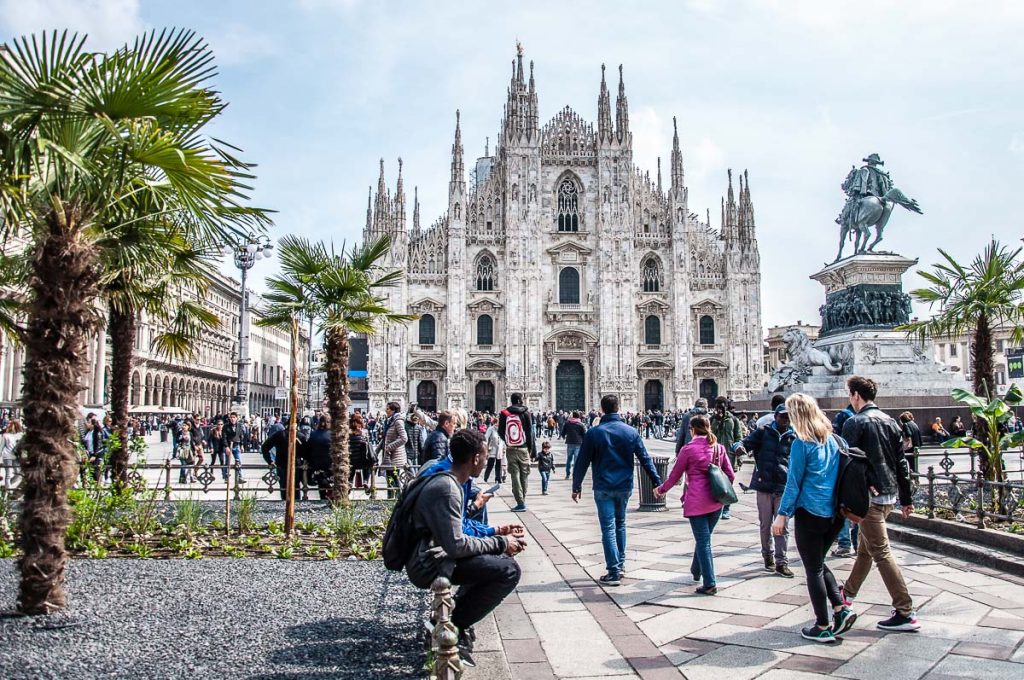
Milan – or Milano in Italian – is one of the most famous cities in the world. A fashion capital and an important centre of industry and commerce, this is a large, exciting city that has its finger on the pulse of Italy and Europe.
At the same time, Milan is also a place with centuries-old history and a repository where some of the world’s most precious works of art are kept.
From the iconic Duomo di Milano – a stunning Gothic cathedral with a lace-like triangular facade – to the famous Teatro alla Scala , Lombardy’s capital has a string of beautiful must-see landmarks.
This is also the city where the famous painter, sculptor, and engineer Leonardo da Vinci spent 18 years of his life. Nowadays, some of his greatest masterpieces can be seen here.
The famous fresco The Last Supper doesn’t really need an introduction. In addition, in Milan, you can also see:
- Leonardo’s Codex Atlanticus – a 12-volume set of his writings and drawings which nowadays is kept in the city’s Biblioteca Ambrosiana . This ancient library conserves precious historic books and has an important art gallery on-site. You can admire another of Leonardo’s works of art – Portrait of a Musician – here. Click to book your visit .
- Leonardo’s Vineyard – this was a gift that the artist received from the Duke of Milan in 1498. Nowadays, the original rows and the original vine stock have been carefully restored and brought back to life once again. Click to book your tickets or guided tour .
In addition to all its striking landmarks and international creative buzz, Milan also has many hidden corners and little quirks. Seek them out as they reveal the authentic character of this sprawling and at a first glance rather grey city in all its multilayered charm.
From the historic trams rumbling through the city’s wide central boulevards to the Navigli district – crisscrossed by canals flanked by lively eateries – Milan must be seen and experienced at least once in a lifetime.
More Information:
- For more about Milan have a look at point 11 here: 15 Must-See Cities and Towns in Lombardy, Italy (With Map, Photos, and Insider Tips)
2. Lombardy’s Lakes – Enjoy the Famous Lake Como, Lake Maggiore, and Lake Garda and Discover Many More Beautiful Northern Italian Lakes
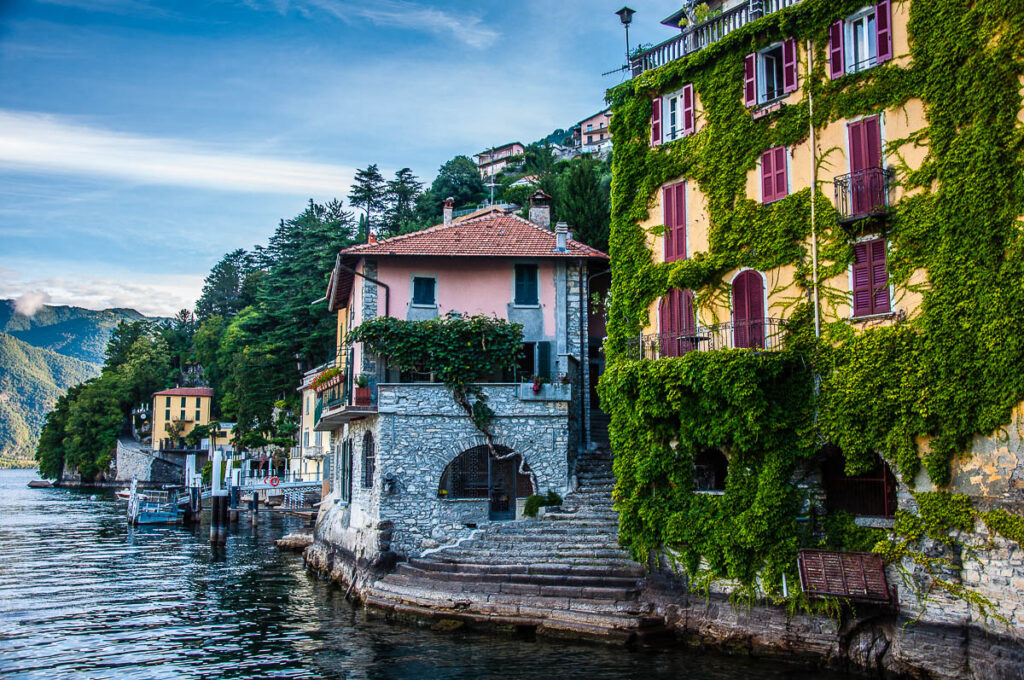
Lombardy is blessed to have several of Northern Italy’s most well-known and beautiful lakes on its territory. Most importantly, Lago di Como . Italy’s most famous lake is one of the brightest gems in Lombardy’s crown.
An easy train ride or car drive away from Milan, Lake Como stretches up towards Switzerland. It looks like an upturned letter Y. The panorama of its three branches’ meeting point is best enjoyed from Bellagio.
This lakefront town is very picturesque! It’s not surprising really that the ancient Romans used to build their villas here.
Among them was Pliny the Younger – a famous Roman lawyer, magistrate, and author as well as the nephew of Pliny the Elder. He had not one but two villas at the spot of modern-day Bellagio. While one was up in the hill above the lake, the other was right next to the water, so he could fish through the window while he relaxed in bed.
Beautiful as it is, don’t limit yourself just to Lake Como during your visit to Lombardy.
In this northern Italian region, you can also spend wonderful moments on the shores of the worldwide known Lake Garda , Lake Maggiore, and the gaining wider appreciation Lake Iseo. Or you can discover many small yet striking lakes like Lake Idro and Lake Valvestino. The first is a thin and long lake where, they say, the mythical monster Idra lives. The other resembles a Norwegian fjord and makes up in beauty what it lacks in size.
If you are planning to visit Lombardy primarily to explore its capital Milan, then make sure that you put a day aside to see one of the region’s lakes, too. Easy to get to by public transport or by car, they give you a chance to experience Italy from a different point of view.
For example, at Lombardy’s lakes you can explore picturesque waterfront towns. Sirmione on Lake Garda and Varenna on Lake Como are my personal favourites. You can go for a hike in the hills and the mountains flanking the Lombardian lakes and take in heady panoramic views. Or you can simply top up your tan on one of the many lakefront beaches and take a ferry across the water so as to enjoy the views of lush hills, olive groves, and small villages as they glide past you.
If you would rather combine city sightseeing and a lake visit, however, then head straight to Mantua . This Lombardian city is surrounded by three lakes and it’s a beautiful place to explore.
- Lake Como – The Beauty of Italy’s Most Famous Lake in 25 Photos
- Lake Garda Map – Where is Lake Garda ad What to Do around Italy’s Largest Lake
- For Sirmione have a look at point 1 here: 20 Best Towns to Visit around Laego di Garda – Italy’s Largest Lake (With Map and Insider Tips)
- For Mantua have a look at point 9 here: 15 Must-See Cities and Towns in Lombardy, Italy (With Map, Photos, and Insider Tips)
3. Lombardy’s Excellent Transport Links – Arrive at Busy International Airports and Travel around by High-Speed Trains and Fast Highways
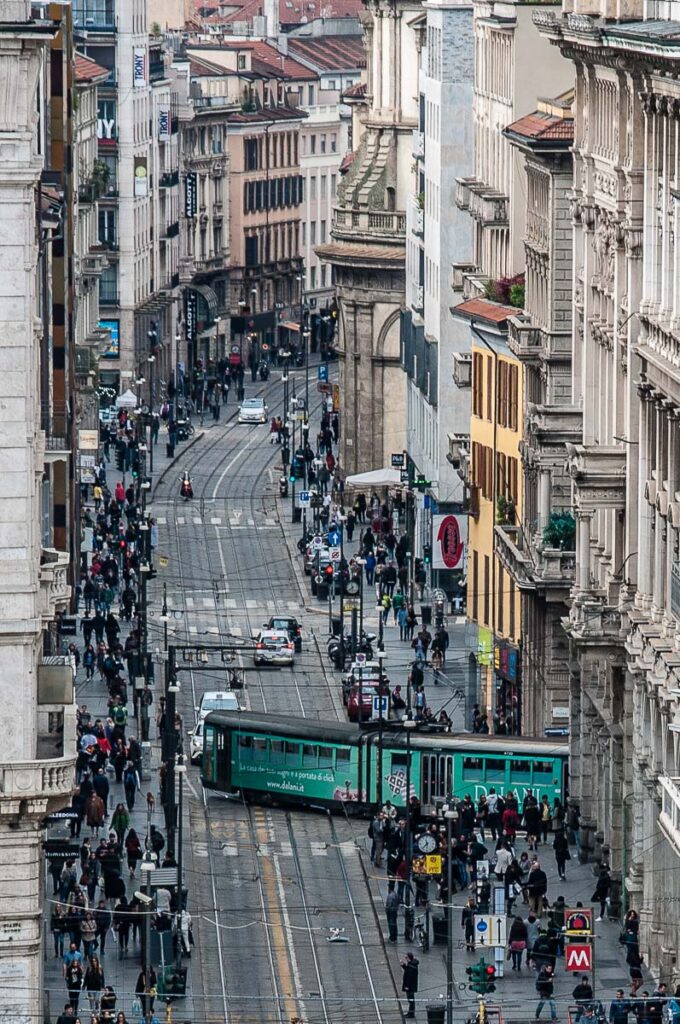
Lombardy is very well connected by air, rail, and road to all corners of Italy and Europe.
Three major airports operate in this northern Italian region. They are:
- Milan Bergamo Airport (also known as Orio al Serio Airport)
- Milan Linate Airport
- Milan Malpensa Airport
Based on the number of passengers they deal with on a daily basis, all three are in the top 10 of the busiest Italian airports.
This means that you can easily reach Lombardy and Milan from anywhere in the world on a flight operated either by a low-cost company or a major airline. This way you can book just the right ticket for your budget and available travelling times and pick the most convenient airport for your destination in Lombardy and Italy.
Lombardy’s well-developed railway network is another top reason to come here. High-speed trains and fast regional trains operated both by the national railway company and a private enterprise guarantee you quick and easy access to a long list of must-see destinations and cities in Italy .
Here are some sample travelling times by high-speed train both within Lombardy and beyond:
- Milan to Brescia – from 36 mins;
- Milan to Turin – from 1 h;
- Milan to Desenzano del Garda on Lake Garda – from 1 h 3 mins;
- Milan to Bologna – from 1 h 4 mins;
- Milan to Genoa – from 1 h 27 mins;
- Milan to Florence – from 1 h 54 mins;
- Milan to Venice – from 2 h 27 mins;
- Milan to Rome – from 3 h 10 mins.
All this gives you so many options for exciting day trips and longer journeys during your stay in Lombardy and Italy.
Finally, exploring Lombardy by car is also very easy. A dense road network connects the region’s main cities like Milan and Brescia to the smaller towns and picturesque villages here.
Knowing that within an hour’s drive from anywhere in Lombardy you can be on the shores of a beautiful lake, in the folds of the mountains or exploring the art and history of a new place, is a great incentive to visit this northern Italian region.
If you are looking further afield, then travelling by car is also a quick way to get from Lombardy to anywhere in Italy. Several important highways run through the region leading to the country’s most beautiful and important destinations. Among them are:
- Autostrada A4 (known also as La Serenissima after the moniker of the historic Republic of Venice) – it connects Turin first to Milan then Brescia and continues to Verona , Venice and Triest; and
- Ausostrada A21 (known also as the Motorway of the Wines as it goes across several important wine-producing areas) – it connects Turin to Cremona and Brescia.
- 11 Major Airports in Northern Italy (With Map, Nearest Cities, and Public Transport Options)
- Getting Around Lake Garda – 8 Best Ways to Travel Around Italy’s Largest Lake
4. Lombardy’s UNESCO World Heritage Sights – Explore the Highest Concentration in Italy of Cultural and Natural Landmarks with Universal Value to Humanity
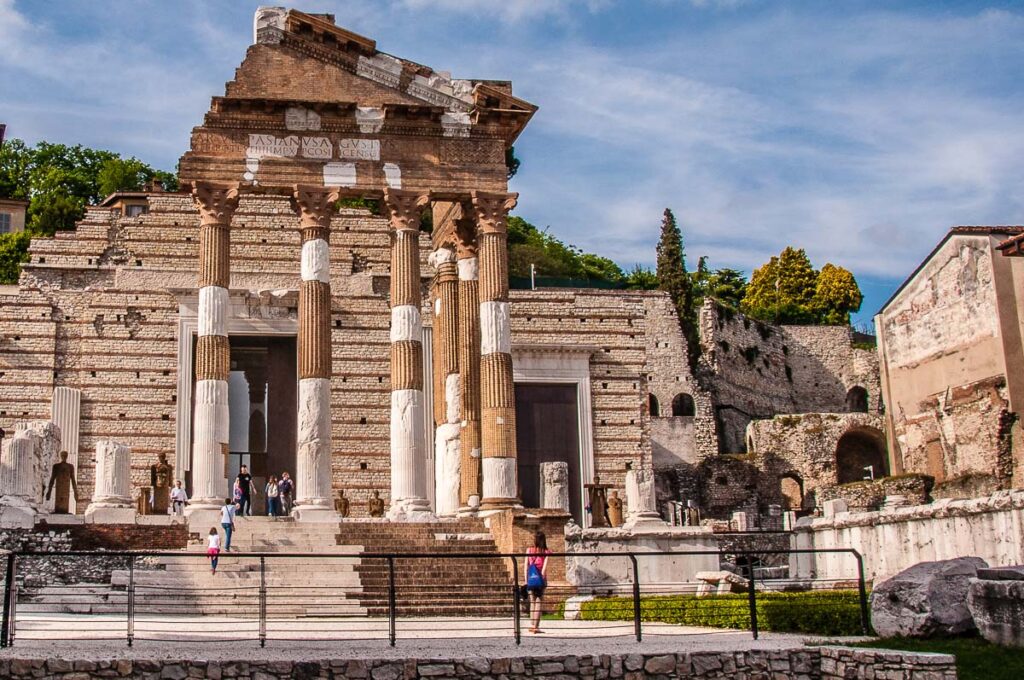
Lombardy is the region with the highest number of UNESCO World Heritage Sites in Italy. There are 11 of them here.
Even more, this is the region with Italy’s first UNESCO World Heritage Site. The Rock Drawings in Valcamonica in Lombardy were inscribed by UNESCO in 1979. For comparison, the Historic Centre of Rome was listed in 1980.
If you like exploring cultural landmarks with a value that transcends local history and national borders, then Lombardy is a must-see. From the Church and the Dominican Convent of Santa Maria delle Grazie with The Last Supper fresco by Leonardo da Vinci in the heart of Milan to the Renaissance gem of Mantua and the ideal city of Sabbionetta , here you can immerse yourself into humanity’s highest levels of creativity from art to architecture.
In terms of natural sights, Monte San Giorgio is a great representative. This pyramid-shaped mountain stands right on the border of Italy and Switzerland. It is regarded as the best depository of marine fossils from the Triassic period (245-230 million years ago). At the time, the mountain was a tropical lagoon teeming with life.
The city of Brescia is my favourite destination in Lombardy in terms of UNESCO World Heritage Sites. Come here to see Northern Italy’s largest and best-preserved Roman archaeological area . Next door to it stands the Santa Giulia Museum Complex with an area of 14,000 sq. m and over 12,000 artefacts.
The archaeological area and the museum are inscribed on UNESCO’s List of World Heritage Sites as part of the property ‘ Longobards in Italy. Places of the power (568-774 A.D.) ‘. Both deserve a visit during a day trip to or a longer stay in Brescia – an exciting city just over half an hour away by high-speed train from Milan.
- Brescia, Italy – How to Visit and Best Things to Do in the Most Underrated Italian City (With Map and Practical Tips)
- Official website of the UNESCO Sites in Lombardy, Italy
5. Lombardy’s Cities of Art – Discover Roman Ruins, Medieval Fortifications, and Renaissance Pearls
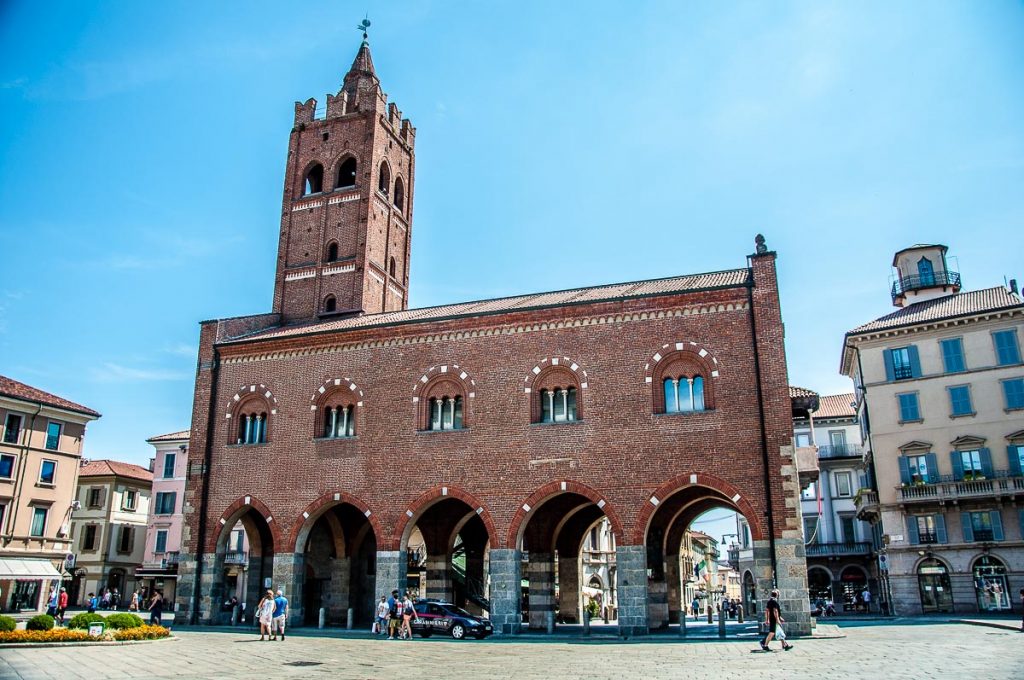
Beyond the buzz of Milan and the sights of Brescia , Lombardy is dotted with many smaller cities and larger towns that safeguard some of Italy’s best artistic achievements and historic places of interest.
Known collectively as Cities of Art (in Italian, Citta’ d’Arte ), they have so much to offer to the curious traveller – from art galleries densely packed with masterpieces to sturdy fortifications, splendid buildings, and tall bell towers offering heady views.
Take the funicular up to Bergamo’s Upper Town – or Citta’ Alta as it is known in Italian – for example, and you will find yourself in an urban nucleus where the Middle Ages meet the Renaissance. To make it even more dramatic, it’s all enveloped in massive Venetian walls. The narrow cobbled streets will then lead you up to a central square – Piazza Vecchia – that the famous Swiss-French architect Corbusier once declared to be “the most beautiful in the world”.
In the town of Como on the lower edge of Lake Como, you can start your exploration of the past from Roman ruins and then progress through the Middle Ages all the way to the present. The different historic periods here blend and fuse into one another, each taking inspiration from the previous ones and adding something new and inspired to the mix.
Hence, when you look at imposing buildings like the Como Cathedral, you can spot many elements pertaining to different eras and yet all of them create a harmonious whole.
Monza – another of the Lombardian Cities of Art – lives one foot in the past and one foot in the future. This lovely city – the third-largest in Lombardy – is famous both for its medieval and Neoclassical buildings and as the seat of the Italian Grand Prix.
Built in 1922, the Autodromo Nazionale di Monza is the world’s third-oldest purpose-built motor racing circuit. It has been hosting high-speed motor races for a century. Nowadays, it’s officially referred to as The Temple of Speed as the cars achieve top speeds of nearly 350 km/h.
From Pavia to Sondrio and from Mantua to Varese , there are many Cities of Art in Lombardy. Each one of them has something special and unique to offer to the traveller eager to experience the best of Italy. Head there and see it all for yourself!
- 15 Must-See Cities and Towns in Lombardy, Italy (With Map, Photos, and Insider Tips)
6. Lombardy’s Musical Heritage – Learn about Violinmaking in Cremona and Enjoy Opera in Brescia and Milan
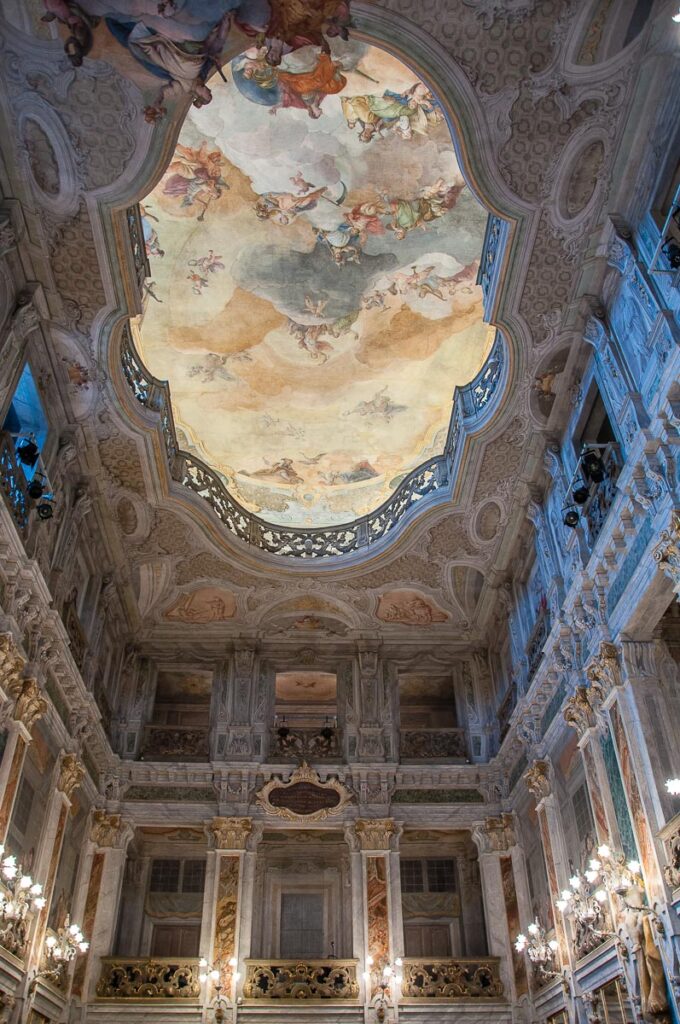
Lombardy plays an important role in Italy’s musical heritage. This northern Italian region has contributed greatly to the development of lyrical singing and the refining of musical instruments as we know them nowadays. As such, it’s dotted with important landmarks giving you a chance to gain a first-hand understanding of the history of music.
If music is in your heart, then make sure that you visit Cremona in Lombardy, Italy. Less than an hour and a half away from Milan, this small city preserves centuries-old violinmaking traditions. Some of the world’s greatest luthiers like Nicolo’ Amati and Antonio Stradivari worked here in the 16th and 17th centuries crafting violins, cellos, guitars, and harps that to this day set the standards for string instruments.
To this day, Cremona’s beautiful historic centre is dotted with the workshops of luthiers. And then a short walk away from the city’s splendid Cathedral stands the excellent Violin Museum . Don’t miss a visit! It has state-of-the-art displays and many priceless historic violins and other string instruments. You can book your tickets here .
In addition, make sure that you visit Lombardy’s historic opera houses. Two of the most famous of them all are:
- Teatro alla Scala in Milan – you can either catch a world-class performance here or simply visit during the day to see the theatre’s lavish interiors and the excellent on-site museum for yourself. Alternatively, you can enjoy a guided tour of La Scala or see it from the comfort of your own home with this virtual tour . This is one of the world’s most famous opera houses where great Italian composers like Rossini, Donizetti, and Verdi have premiered many of their operas and where globally famous opera singers have given the performances of their lives.
- Teatro Grande in Brescia – a spectacularly lavish theatre with a history that goes back to the 16th century. It’s housed in a purpose-built building from the start of the 19th century. The theatre was recognised as a national monument of Italy over 100 years ago. Its performance hall is horseshoe-shaped, 22 x 17 m in size, and has five rows of boxes.
Lombardy is also the birthplace of famous Italian composers. Gaetano Donizetti, for example, was born in Bergamo in 1797. Nowadays, the Donizetti Museum is one of the best things to see in this underrated northern Italian city.
The composer Claudio Monteverdi was born in the city of Cremona. His opera Orfeo is widely accepted to be ‘the first great opera’ ever.
Finally, Lombardy is where many renowned music festivals and competitions take place every year. Brescia, for example, organises a highly regarded piano competition under the name of Arturo Benedetti Michelangeli – one of the greatest pianists of the 20th century who was a native of the city.
7. Lombardy’s Great Outdoors – Get Active by Practicing All Sorts of Sports in This Beautiful Corner of Italy
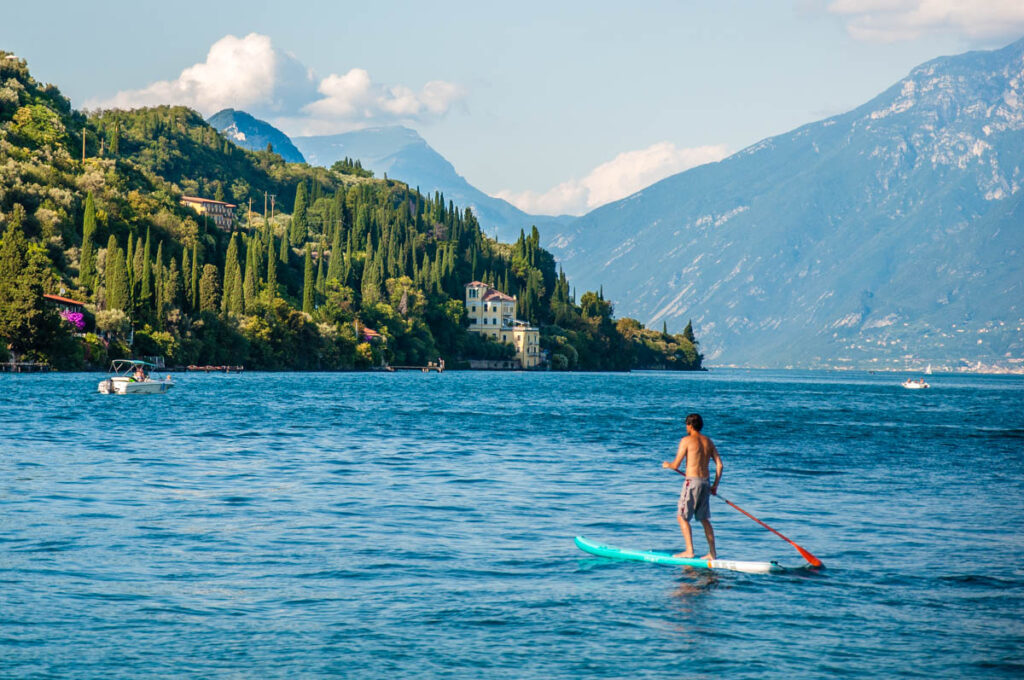
It’s so very easy to get out and get active when you are in Lombardy.
This northern Italian region is dotted with lakes where you can swim, sail, paddleboard, and even practice kitesurfing. It also has a generous portion of the Italian Alps where hiking trails and ski slopes are in their hundreds. No matter the season, there is always something exciting to do here – from snowboarding and snowshoe walking in winter to canyoning and mountain biking in summer.
Lombardy’s great outdoors are a delight to discover and there is something for all abilities and ages to enjoy. From gentle walks and ski schools for absolute beginners to rock climbing and expert slopes.
Some of Lombardy’s most important ski resorts are in the provinces of Brescia , Bergamo, and Sondrio. From Pontedilegno-Tonale , Brembo Super Ski , and Valtorta-Piani di Bobbio to Piazzatorre , Bormio Ski , and Aprica , there are dozens of excellent ski destinations to choose from here.
In terms of walking and hiking, you will be spoilt for choice, no matter if you are travelling as a family with small kids, as a group of friends or with a significant other. Trails of different levels of difficulty crisscross Lombardy’s beautiful nature offering you splendid panoramic views, forest bathing, fairytale waterfalls, and the ability to fill in your lungs with fresh, clean air.
There is nothing like going for a hike on a beautiful day in the forests and hills of Lombardy. Then you can stop for a hearty lunch in one of the many mountain huts that serve freshly cooked traditional food prepared with zero km ingredients. It’s a wonderful way to clear off your mind and relax.
The local tourist offices in Lombardy usually have plenty of information about local hikes and outdoor explorations. These are especially numerous around the region’s lakes like Como, Iseo, and Garda.
Provided you bring in the right shoes and clothing to ensure your comfort and safety, it’s a great idea to add a hike or another type of activity to your list with things to do in Lombardy, Italy.
If you would rather rely on an expert local guide to show you hidden gems in the bosom of Lombardy’s nature, then you can simply book an organised hike or activity. Have a look at the options below for some must-see destinations:
8. Lombardy’s Rich Culinary Traditions – Savour Delicious Dishes and Enjoy Italy’s Best Sparkling Wines
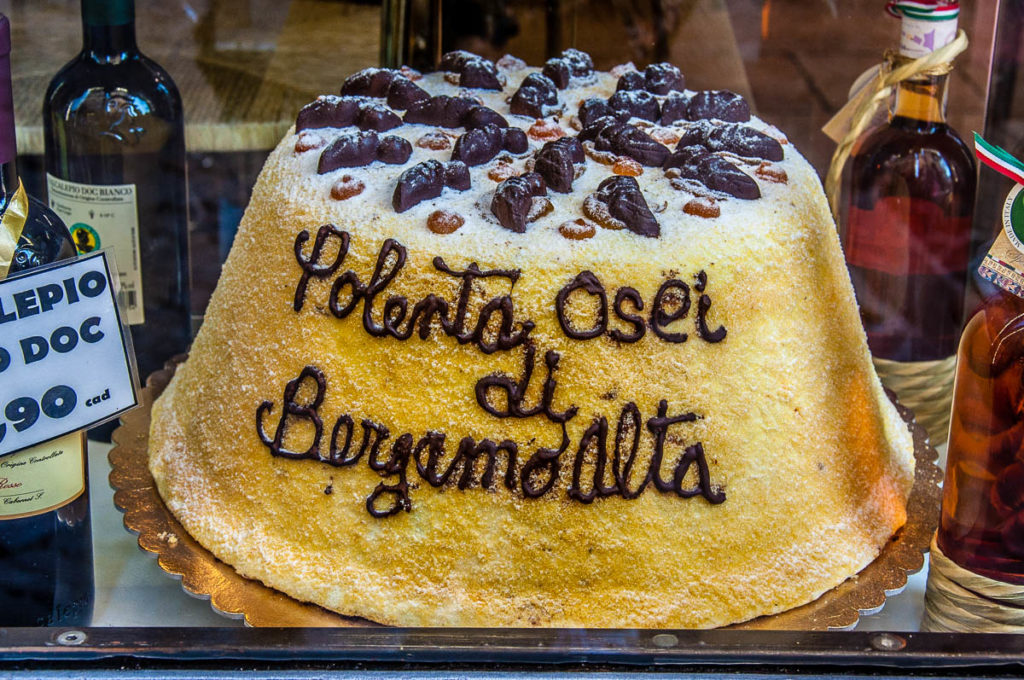
As a land of centuries-old traditions, Lombardy has a rich cuisine based on the many and varied delicacies of the different provinces that comprise this northern Italian region.
From stuffed pasta and elaborate risottos to polenta used both in savoury dishes and sweet cakes, Lombardy is a delight to discover fork and spoon in hand.
Here are some traditional Lombardian dishes to enjoy during your visit:
- risotto alla milanese – this is a classic Italian dish from the Lombardian capital Milan. It’s prepared with Arborio rice and it owes its yellow colour to the addition of saffron;
- cotoletta alla milanese – another signature dish from Milan, this is a breaded veal chop wich traditionally is served with a portion of French fries or patatine fritte as they call them in Italian. By the way, the easiest way to discover Milan’s culinary secrets and delights is to join a small guided tour to take you to all the right places. This one is particularly good.
- Bagoss – prized cheese that is only produced in the small village of Bagolino near the city of Brescia in Lombardy. It has a lovely dense and salty flavour with hints of walnuts and chestnuts. Having a thick slice of Bagoss in a soft bread roll feels like a feast in itself.
- casonsei – large pasta shapes stuffed with a filling made of eggs, mature cheese (or ricotta), spinach or meat. Typical for Bergamo and Brescia , they are served generously drizzled with melted butter and decorated with sage leaves.
- polenta taragna – typical for Bergamo and Brescia , this is polenta prepared with ground buckwheat and corn flour. It is then mixed with fresh cheeses and melted butter.
- tortelli di zucca – typical for the Lombardian city of Mantua, these are pasta shapes stuffed with a delicious pumkin filling.
In addition, Lombardy enjoys a great tradition of sweets and desserts. Without a doubt, panettone is its most famous sweet creation. Served for Christmas in Italy , it’s also adored and devoured all around the world.
Other famous Lombardian sweets and cakes are:
- Cremona’s nougat – locally known as torrone ;
- Mantua’s sbrisolona cake – it’s similar to shortbread but it has a rougher crumb and it’s made with generous helpings of almond flour and chopped almonds; and
- Bergamo’s splendid polenta e osei – this is a sweet polenta cake covered with marzipan and decorated with chocolate birds.
Finally, it is in Lombardy that you can visit one of Italy’s most famous wine-producing areas – Franciacorta. Its sparkling wines enjoy worldwide recognition. It’s widely accepted that Franciacorta sparkling wines surpass Veneto’s prosecco and are a serious rival to France’s champagne.
Franciacorta is in the province of Brescia and booking a guided tour is an easy way to explore the beautiful vineyards and the historical wineries that it’s dotted with. For example, you can visit a centuries-old cellar and do a tasting by pairing wines with delicious local specialities.
9. Lombardy’s Religious Landmarks – Seek Peace in Sacred Mountains and Some of Italy’s Most Splendid Duomos
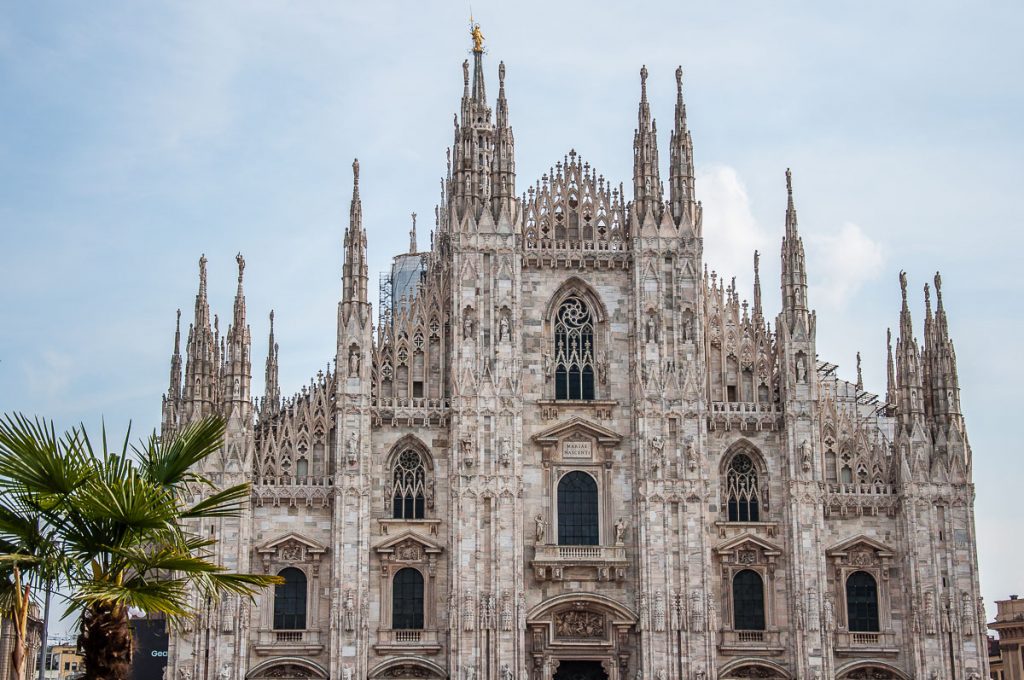
Lombardy is one of the best destinations to explore in Italy if you have a particular interest in religious architecture and little-known historic events that have left their imprint on Europe from the Middle Ages onwards.
This northern Italian region is dotted with some of the world’s most impressive cathedrals, centuries-old monasteries, and picturesque sanctuaries. The most famous of them all is the Duomo di Milano . This is a must-see landmark in Lombardy’s capital. It can be explored from many different angles:
- history – by visiting the Duomo’s archaeological area;
- architecture – by learning about this Gothic masterpiece the construction of which lasted nearly six centuries;
- religion – by seeing for yourself the interiors of the cathedral or attending a mass held in it; and even
- stunning panoramas – by enjoying bird’s-eye views of Milan from the rooftop of its Duomo.
Depending on what you want to see and/or the time you have available, you can either book a ticket to see the Duomo, its rooftops and museum, a priority entry just to its rooftops by lift or stairs or a skip the line entry to the cathedral only.
There are several other impressive Duomos in Lombardy, Italy. Monza Cathedral deserves a special mention here for its black and white marble facade and the fully frescoed Royal Chapel of Teodolinda – the Queen of the Lombards from 590 to 627 AD.
In terms of monasteries and convents, don’t miss the Certosa di Pavia – a monumental religious complex with outstanding architecture and many priceless works of art.
One of my favourite sanctuaries in Lombardy is the Santuario di Montecastello . Built on a tiny piece of flat surface bordering the summit of a sharp peak, it overlooks Lake Garda from a tremendous height.
Everywhere you go in Lombardy, you will come across large and small churches guarding the memories and the traditions of the local communities. In many of them, you will discover unexpected masterpieces. A case in point is the small town of Clusone. A beautiful day trip from Bergamo, here you can see a late 15th-century fresco known as The Triumph and Dance of Death (also often referred to as The Macabre Dance ).
Finally, it is in Lombardy (and the neighbouring Italian region of Piedmont) that you can visit Italy’s Sacred Mountains or Sacri Monti . This is a group of nine calvaries – or devotional complexes built on the slopes of mountains – that date back to the late 16th/17th centuries. A UNESCO World Heritage Site, they blend beautifully with the surrounding nature and are skillfully decorated with frescoes and statues.
10. Lombardy’s Small Towns and Villages – Experience Beautiful Sights and Authentic Lombardian Traditions
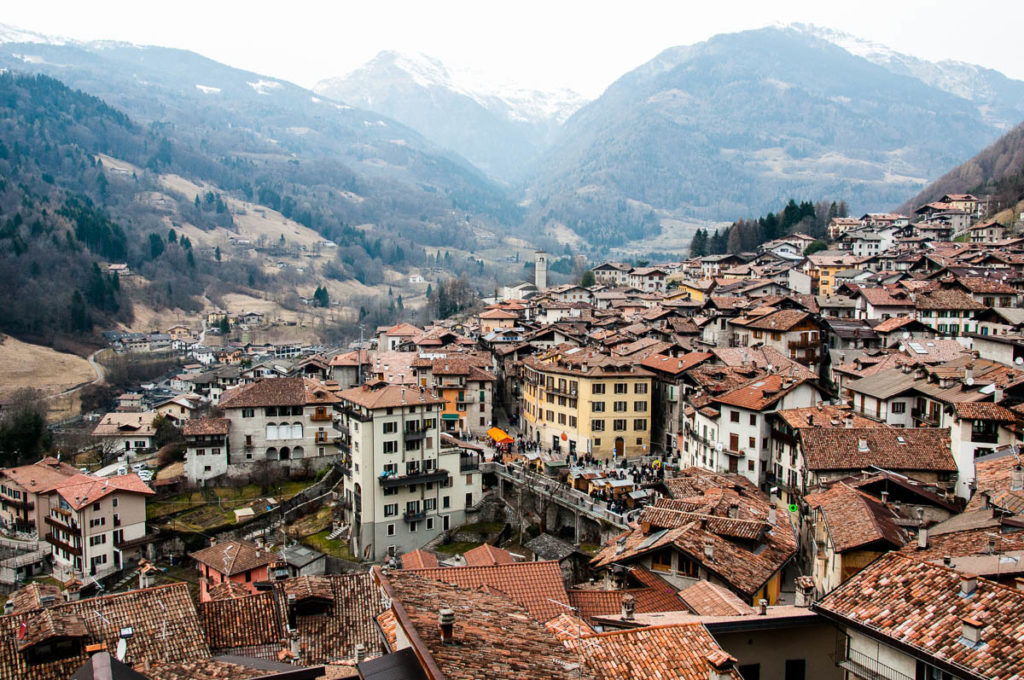
It’s not all about large cities and worldwide famous landmarks in Lombardy though.
This Italian region is also peppered with small towns and villages in the bosom of lush mountains or on the shores of beautiful lakes. These are places where centennial architecture is preserved together with ancient traditions that culminate in town-wide heartfelt festivals.
A case in point is the small village of Bagolino . Its tall houses tumble down the slope of a hill overlooking a small alpine valley. The locals speak their own dialect and produce one of the most prized cheeses in Lombardy – Bagoss.
They also preserve a centuries-old Carnival tradition which has been classified as an ethnological discovery of immense importance.
The small fortified village of Castellaro Lagusello near Mantua in Lombardy seems plucked from a fairy tale. Surrounded by medieval defensive walls it stands on the shores of a tiny heart-shaped lake. It makes for a great visit to this corner of Italy offering a chance to not only learn about history but actually see it and experience it first hand.
The tiny village of Nesso clings to the steep slopes above Lake Como. Right in its heart, a tall waterfall – powerful and rumbling – hurtles down a vertiginous narrow gorge. At the bottom, its waters collect and now calm and clear flow together into the lake. Along the way, they pass underneath a small medieval bridge.
In summer, people jump from the bridge into the lake for a refreshing swim. A tall house stands right next to the bridge and seems to grow straight from the lake. Its facade is embraced by the luxuriant leaves of a huge Virginia creeper which turn bright red each autumn. It’s all so very beautiful and picturesque!
Then you have Monte Isola – Europe’s largest lake island. It stands tall and proud in the centre of Lombardy’s Lake Iseo. Eleven tiny fishing villages dot the island which is a car-free territory and has one bus line. It’s as idyllic and as far from the hustle and bustle of our modern world as you can get in Europe.
And yet, Monte Isola is only two hours away from Milan and an hour away from Brescia. Easy to explore even on a day trip, it brings you close to the authentic heart of Italy.
In Conclusion
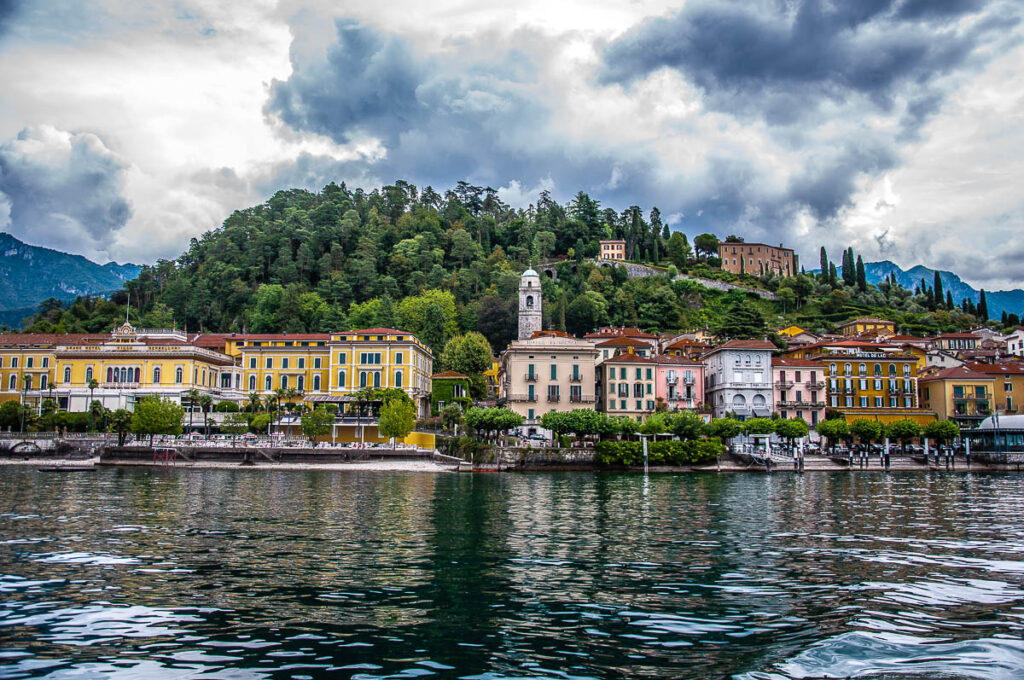
Lombardy is a beautiful and exciting region in the north of Italy . With the cosmopolitan city of Milan as its capital, a large portion of the Italian Alps, and a number of the most famous northern Italian lakes on its territory, it’s a great place to visit.
No matter if you are after an exciting city break with lots of sightseeing and oodles of good food, a relaxing vacation in the bosom of nature, or a holiday that helps you reconnect with yourself and discover new interests, Lombardy delivers in so many different ways.
So, in this blog post today I shared with you the ten best reasons to visit Lombardy in Italy. From the region’s art and history to its lush nature, from its most well-known points of interest to its hidden gems, it’s all covered in an easy to reference format.
I hope that the information provided will pique your curiosity and will have you making travel plans for Lombardy in Italy even before you have finished reading.
I love visiting and revisiting Lombardy and I took every opportunity to do it during the six years that I spent living in Italy. It’s a region that has a lot to offer, it’s easy to get to and around, has delicious local cuisine, and so many sights and activities that you will want to return time and time again to experience it all.
Enjoy discovering Lombardy for yourself!
And have a wonderful time in this beautiful corner of italy.
Now, get ready quick for your visit to Lombardy, Italy!
- Consult these guidebooks .
- Buy plane tickets to Italy .
- Book train tickets , bus tickets or rent a car .
- Research accommodation .
- Select tours and activities .
More Helpful Italy Info for You
Northern Italy: Reasons to Visit , Best Cities , Major Airports Lombardy: Best Cities and Towns , Brescia Day Trips: Milan to Verona , Milan to Venice , Milan to Lake Garda , Venice to Milan , Verona to Milan Lake Garda: Best Towns , Map of Lake Garda , Theme Parks , Nearest Airports , Travel Options , Lake Garda with Kids , Beautiful Castles Lake Como: Things to See , Nesso
Thank you for reading! Please, leave me a comment, pin the images below or use the buttons right at the top and at the end of this blog post to share it on social media.
For more useful information like this, please, like my blog’s page on Facebook and subscribe to my strictly no-spam newsletter.
Email address:
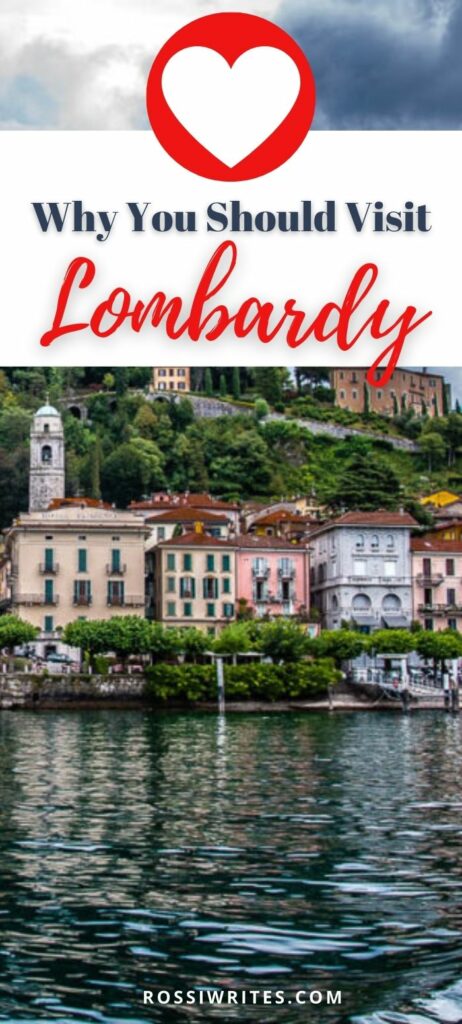
Sharing is Caring
Help spread the word. You're awesome for doing it!
Delicious Italy

Lombardia Tourism Information
- tourist information
- font size decrease font size increase font size
Lombardia in a Day was a recent tourism hook by the official tourism information website of the region ( www.in-lombardia.it/en ) to suggest how visitors could experience the various provincial capitals from morning to evening.
To be precise, what to do from 9am to 1pm, 1pm to 3pm, 3pm to 6pm and the evening.
As Milan features quite a bit in our travel guide, we highlight below the 11 other main cities of interest in alphabetical order.
After a good breakfast in the Bar Sentierone, visit the Accademia Carrara, one of the major Italian art galleries. Take lunch somewhere along Via San Tomaso or Santa Caterina. Before 6pm, take the funicular railway to the Upper Town to also admire lower Bergamo from the Campanone as well as the Colleoni Chapel and the Basilica of Santa Maria Maggiore. Evening dinner in a typical inn of San Vigilio and those spectacular views of lower Bergamo. Official website of Bergamo - www.visitbergamo.net/en
After breakfast a visit of the Roman archaeological site of Brixia and Santa Giulia Museum. Lunch should be a traditional dish in the historic centre such as 'risotto pitocca' followed by coffee in Piazza della Loggia, or in one of the bars of Piazza Paolo VI with views of the Old and the New Cathedral. For the afternoon, a climb to the top of Castello di Brescia for an unparalleled view of the city. Treat yourself in the evening to a night at the Teatro Grande, the 300 year old theatre of Brescia. Official Tourism Website - www.bresciatourism.it/en
Morning demands a boat tour of the lake to view the wonderful historic mansions followed by lunch in one a picturesque village such as Bellagio or Menaggio. Return to Como with an afternoon walk beside the lake to the old centre and not to miss splendid cathedral and Volta Temple. Do try and fit in a visit of the Silk Museum. Evening is dinner in one of the local lakeside spots with stunning views of both lake and city. Official website of Lake Como - www.lakecomo.is
Start with a tranquil morning walk in the Town Square and the splendid Cathedral and the Baptistery. Do climb the steps of the Torrazzo, the highest brick bell tower in Europe followed by lunch in a tavern, maybe a 'marubini in brodo'. Afternoon must be a visit of the Museum of the Violin and a visit of a violin maker and his workshop. For the evening, a show at the Teatro Ponchielli, the historic theatre of Cremona. Official Tourism Website - www.turismocremona.it/en
After a coffee in one of the bars along the lake, visit the historic centre for the Viscontea Tower, the Palazzo delle Paure, Cathedral of San Nicolò and the 'Matitone' bell tower. Take lunch in a restaurant or a bar at Piazza Cermenati or Piazza XX Settembre. Afternoon is a boat tour to discover the places made famous by Alessandro Manzoni’s The Betrothed . Finish with dinner in a trattoria in the charming district of Pescarenico. A risotto with perch of course.
Start in Piazza della Vittoria, then tour the old town and visit the Cathedral, the Church of San Francesco and the Liberty palaces. Lunch in a typical trattoria followed by a visit of the Incoronata Temple, a masterpiece of the Lombard Renaissance. The evening begins with an aperitif perhaps accompanied by a Raspadura, the traditional tasty and light cheese pastry of Lodi.
Rent a bike for the morning to discover the old town. After visiting Palazzo della Ragione, climb the Clock Tower (leave the bike below!) and take in Mantua from above. Lunch is a delicious pumpkin tortelli followed by a sbrisolona. Follow the trail of the Gonzaga in the afternoon with a visit the Museum of Palazzo Ducale and the Castle of San Giorgio. At sunset, walk over the Bridge of San Giorgio to admire the city skyline.
Morning visit of the apartments of Villa Reale then enjoy lunch of good risotto with luganega. Seek out the treasures of the Cathedral after lunch before losing yourself in the city centre streets until the evening as you admire landmarks such as the Arengario Palace and the Ponte dei Leoni. Official Tourism website - www.turismo.monza.it/en
Famous landmarks of the city such as the Broletto Palace, the Cathedral, the Basilica of Santa Maria Maggiore and the magnificent Ponte Coperto are best enjoyed in the morning before lunch at a typical restaurant where you should try a Pavia soup or Carthusian risotto. Get lost in the afternoon in the cloisters of the University of Pavia before a walk to the Visconti Castle and its museums. An evening show at the Teatro Fraschra to conclude the day. Official Tourism website - www.visitpavia.com/en
Start with a morning walk around the characteristic Scarpatetti neighbourhood followed by the Valtellina Museum of History and Art and the Masegra Castle. Pizzoccheri for lunch is obligatory to give you sufficient energy a visit the Shrine of Our Lady of Sassel just outside the city. An evening wine tasting with local products such as Bresaola and Bitto. Official Tourism Website - www.sondrioevalmalenco.it/en/
Discover the elegant Nouveau buildings of the city and Palazzo Estense then enjoy lunch of fish from Lake Varese, perhaps a pike stew. Visit the Sacred Mountain on foot or by funicular railway after lunch. Dine in the evening in one of the restaurants along the Viale delle Cappelle del Sacro Monte from which there is a splendid panorama.
Related items

The autonomous region of the Aosta Valley or Valle d'Aosta or Val d'Aosta seems to get squeezed for visibility by the other regions of Italy.
But it has perfectly positioned for itself for the new wave of outdoor and active vacations . The full list is as follows.

Summer in Friuli Venezia Giulia means sea, mountains, wine tasting and lagoon visits. Let's start in the hills.
The peaks and valleys of the region offer any number of inviting hikes whether you are an experienced enthusiast or visiting the territory for the first time.
The entire Alpine arc of Friuli Venezia Giulia extends from the Friulian Dolomites to the Julian Alps before crossing the Carnia region and descending into the Torre and Natisone Valleys towards zone of the Karst.

The region of Veneto is made up of seven provinces. They are, in alphabetical order, Belluno, Padova, Rovigo, Treviso, Verona, Venezia and Vicenza.
Venezia of course is better know to most people as Venice with ' The Land of Venice ' being a recent slogan for the official tourism portal which groups all of them together - www.veneto.eu .
The Regions of Italy
Abruzzo Basilicata Calabria Campania Emilia Romagna Friuli Venezia Giulia Lazio Le Marche Liguria Lombardia Molise Piemonte Puglia Sardinia Sicily Trentino Alto Adige Tuscany Umbria Aosta Valley Veneto
- 15 Must Visit Attractions In...
15 Must-Visit Attractions in Lombardy, Italy

With fashionable Milan as its capital, celebrated vineyards and grand lakeside villas, Lombardy is definitely northern Italy’s most glamorous region. But it is also an amazing place for outdoor sports enthusiasts and offers endless destinations for culture vultures. Here is a short list of top attractions across the province.
1. bagni di bormio.
Natural Feature

2. Parco Nazionale dello Stelvio
Forest, Hiking Trail, Park

This is Lombardy’s prized national park where stunning panoramas of alpine valleys are peppered with traditional baita (chalets), quaint churches and diverse wildlife. Driving enthusiasts (and crazy cyclists) can tackle the famous Stelvio Pass – a 2km (1.2 miles) road with 60-plus hairpin bends that climb steeply through the mountains. Sane cyclists and hikers can enjoy the many paths within the park’s hills and mountains, which range from 650 metres (2,130ft) to 3,900 metres (12,800 ft) in height. If you enjoy camping, this is also a possibility.
3. Parco delle Orobie Bergamasche
Hiking Trail, Park

Parco delle Orobie Bergamasche , roughly 45 minutes north of the town of Bergamo , is a protected natural park of 70,000 hectares at the foot of the Alps that border Switzerland. The wider region is referred to as Valtellina, which is famous for its delicious cheeses. It has peaks of over 3,000 metres (9,842ft) and offers over 1,000km (621 miles) of trails with varying difficulty ratings. It is best known for the ‘Flower Trail’, a sort of high-altitude botanical garden, and the ‘Orobie Trail’ (Sentiero delle Orobie), which leads trekkers through the Orobie Prealps that are wild and rugged, and you will most likely encounter steinbocks, marmots and eagles. En route you can find overnight mountain lodges.
5. Castello Sforzesco
Historical Landmark

6. Il Duomo
Building, Cathedral, Church

7. The Last Supper at Basilica di Santa Maria delle Grazie

8. Fondazione Prada
Art Gallery, Cinema

9. Museo del Novecento
Art Gallery, Museum

10. Villa Necchi Campiglio
Art Gallery

11. Teatro alla Scala
Opera House

12. Villa Panza
Art Gallery, Park

This beautiful 18th-century villa is home to the former owner’s collection of American art. Each hall is dedicated to a celebrated 20th-century American artist inspired by light and colour. Among the Renaissance furnishings and ornate interior architecture, there are installations by the likes of Dan Flavin, Robert Irwin and James Turrell. The villa also has extensive grounds, where large-scale modern sculptures are set among Romantic temples and grottos. Brunch, lunch and dinner are served at the onsite restaurant, Luce.
13. Villa del Balbianello

Located on the western bank of Lake Como, this estate is one of the finest in the area and encapsulates the grandeur of the region. It can be reached either by boat or via a short hike and it features a wonderful garden with beautiful flowers and plants. These embrace a building dating back to the late 16th century and create a combination of art and nature that is hard to find elsewhere. Hollywood fans may notice that it featured in both Star Wars: Episode II – Attack of the Clones (2002) and Casino Royale (2006) from the James Bond franchise.
14. Swiss Alps Bernina Express
Train Station

From Tirano in Lombardy, take a breathtaking train journey through the Swiss Alps and arrive in chic St Moritz. The historic red Bernina Express train has the most beautiful route in Europe, climbing to glacial heights where you can see unparalleled views of Italian and Swiss mountain ranges. Ride over the spiral viaduct of Brusio and along the Bernina Pass to Engadin, watching the scenery change from lush green planes to snow-capped gorges and then kitsch chalets. From Milano Centrale, take a short train to Tirano where the Bernina express begins. The Bernina journey lasts approximately four hours, and then it’s up to you how long you spend in St Moritz visiting bakeries and drinking Swiss beer. Return tickets are roughly 70–80 euros (around US$80–95). For an extra fee, tour operators offer hotel pickup and a coach ride to Tirano, which can take the hassle out of your day trip and comes with the bonus of a guide along the way.
Franciacorta wineries
Italy’s best-kept secret is its sparkling wine region, Franciacorta . Franciacorta DOCG is said to rival Champagne, but because it is lesser known internationally, it’s more affordable. The sparkling wine is made with grapes grown on the slopes surrounding Lake Iseo, north-east of Milan. In a two-hour drive, you can find yourself among the rolling vine-covered hills on a tasting tour of one of the many celebrated vineyards. Ca’ del Bosco and Berlucchi are two of the biggest wineries, but if you prefer a more intimate experience it’s worth researching some of the smaller producers. Tasting tours typically cost between 20–40 euros (around US$25–35) and you can book online. Another popular way to experience the region is to combine wine-tasting with a scenic bike ride; check out this bike tour company.
Since you are here, we would like to share our vision for the future of travel - and the direction Culture Trip is moving in.
Culture Trip launched in 2011 with a simple yet passionate mission: to inspire people to go beyond their boundaries and experience what makes a place, its people and its culture special and meaningful — and this is still in our DNA today. We are proud that, for more than a decade, millions like you have trusted our award-winning recommendations by people who deeply understand what makes certain places and communities so special.
Increasingly we believe the world needs more meaningful, real-life connections between curious travellers keen to explore the world in a more responsible way. That is why we have intensively curated a collection of premium small-group trips as an invitation to meet and connect with new, like-minded people for once-in-a-lifetime experiences in three categories: Culture Trips, Rail Trips and Private Trips. Our Trips are suitable for both solo travelers, couples and friends who want to explore the world together.
Culture Trips are deeply immersive 5 to 16 days itineraries, that combine authentic local experiences, exciting activities and 4-5* accommodation to look forward to at the end of each day. Our Rail Trips are our most planet-friendly itineraries that invite you to take the scenic route, relax whilst getting under the skin of a destination. Our Private Trips are fully tailored itineraries, curated by our Travel Experts specifically for you, your friends or your family.
We know that many of you worry about the environmental impact of travel and are looking for ways of expanding horizons in ways that do minimal harm - and may even bring benefits. We are committed to go as far as possible in curating our trips with care for the planet. That is why all of our trips are flightless in destination, fully carbon offset - and we have ambitious plans to be net zero in the very near future.

Guides & Tips
How much does a trip to italy cost.

The Best Trips and Tours in Italy

Visit the Locations from Your Favourite TV Shows with Culture Trip

The Best Places to Travel in April 2024

The Most Amazing Markets in the World

The Best Group Trips to Take With Your Partner

See & Do
Why san ginesio is one of the best tourism villages in the world.

Top Tips for Travelling in Rome

Your Guide to Travelling Italy by Train

Top Tips for Travelling in Italy

The Top 11 Things to Do in Navigli, Milan

The Best Private Trips to Book With Your Girl Friends
Culture trip spring sale, save up to $1,100 on our unique small-group trips limited spots..

- Post ID: 1000212819
- Sponsored? No
- View Payload
A city to discover one hidden gem after the next, where the hustle and bustle is to be experienced by foot or bike (sharing). Starred restaurants make for stellar dishes
Patron saint.
Once an introverted city, and often difficult to read, Milan has become the capital for fashion, innovation and design. A cityscape exuding energy between the façades of yesterday and today
Tourism Milan . Catapulted into the spotlight just a few decades ago, the 1991 debut of Fuorisalone, the lively spin-off of the Salone del Mobile, established Milan Design Week as one of the most anticipated events in the world. After Expo 2015, the city expanded its reign to include capital of food, while maintaining its position as an international fashion powerhouse. Today the metropolis marches towards the future, revisiting forgotten areas and neighborhoods and breathing life back into post-industrial spaces.
Exposed beams and concrete are restored while new skyscrapers rise up in City Life and Porta Nuova alongside the new Mercati Metropolitani and the Bosco Verticale. Contemporary art fills recycled spaces like the old hangars of Hangar Bicocca and an early 20th century distillery, now the Fondazione Prada.
Leonardo da Vinci’s one and only The Last Supper is protected in the refectory of Santa Maria delle Grazie, remaining an absolute must for visitors, followed by the Pinacoteca di Brera. Last but not least, a day of shopping is always a guarantee in the city of chic. Ready to be explored, Milan remains on the cutting edge of it all.
- Discover Lombardy
Experiences
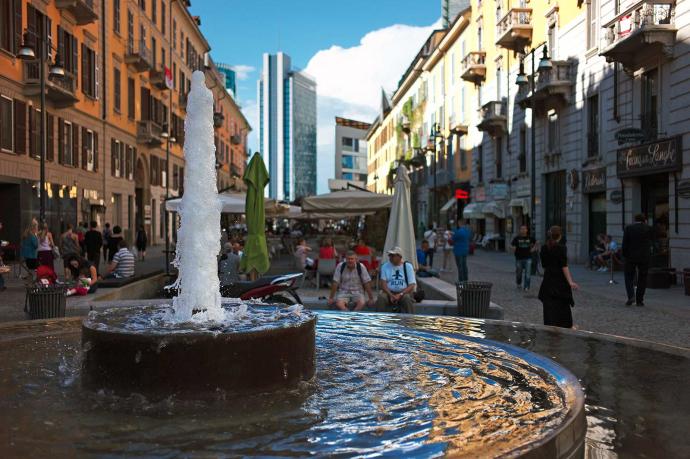
Corso buenos aires
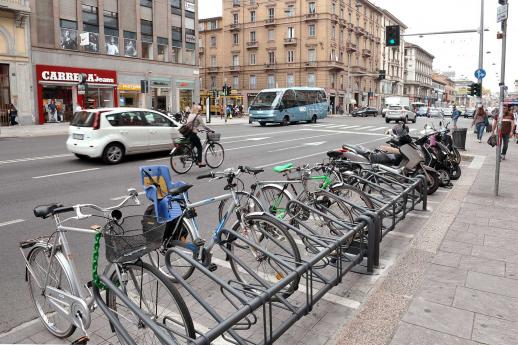
Trams in milan
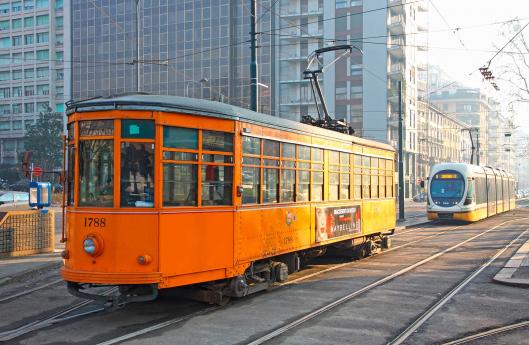
Corso vercelli
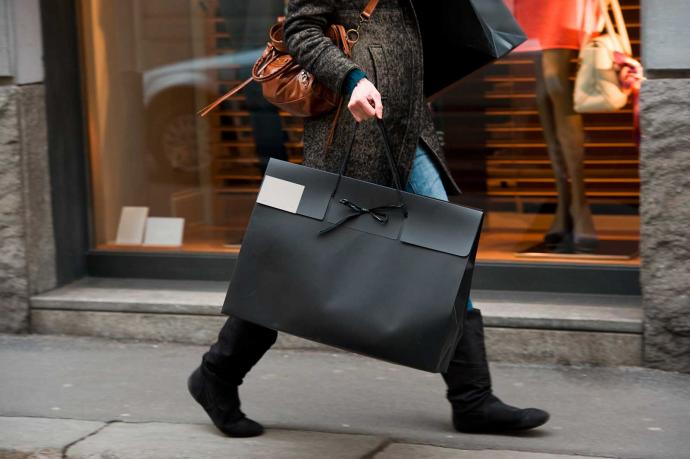
Milan from the Top
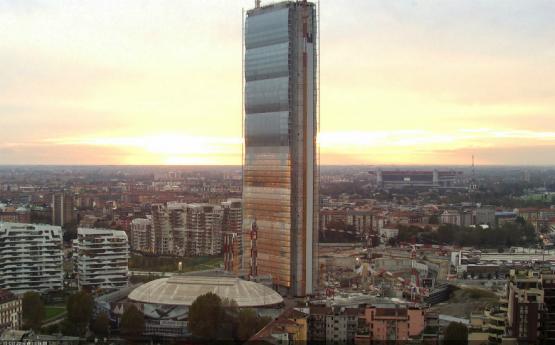
48 hours in Milan
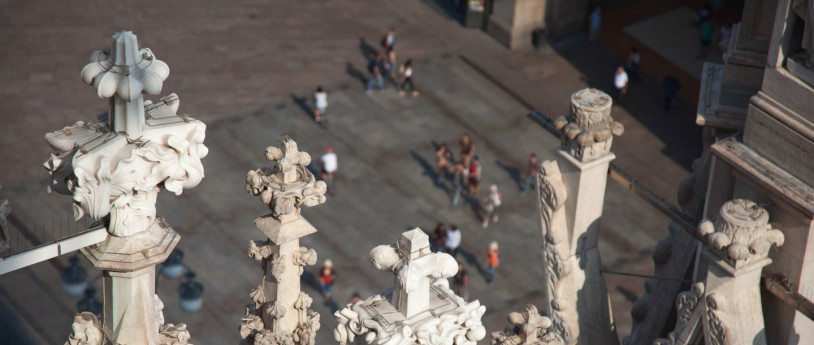
Gera d'Adda: leggende che scorrono tra Adda e Milano
- Active & Green
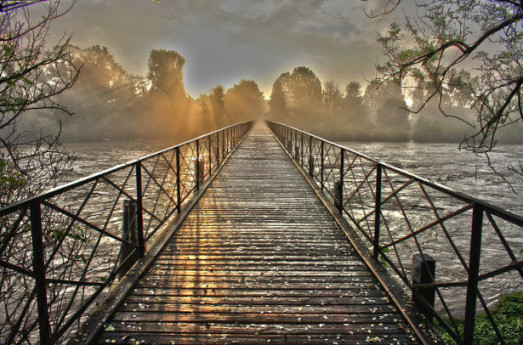
Milan, a fun with the children
- Art & Culture
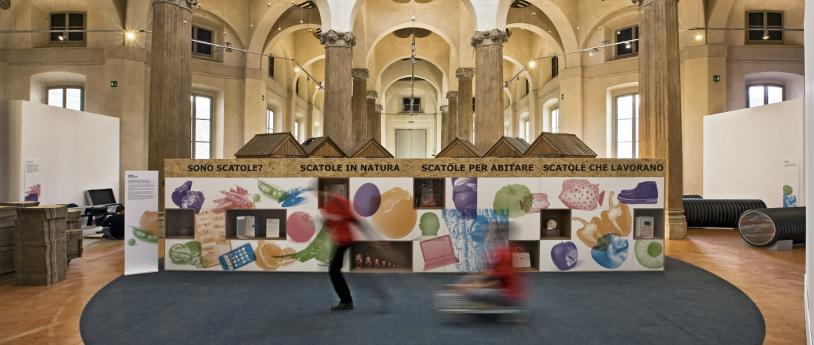
Ticinese columns of San Lorenzo
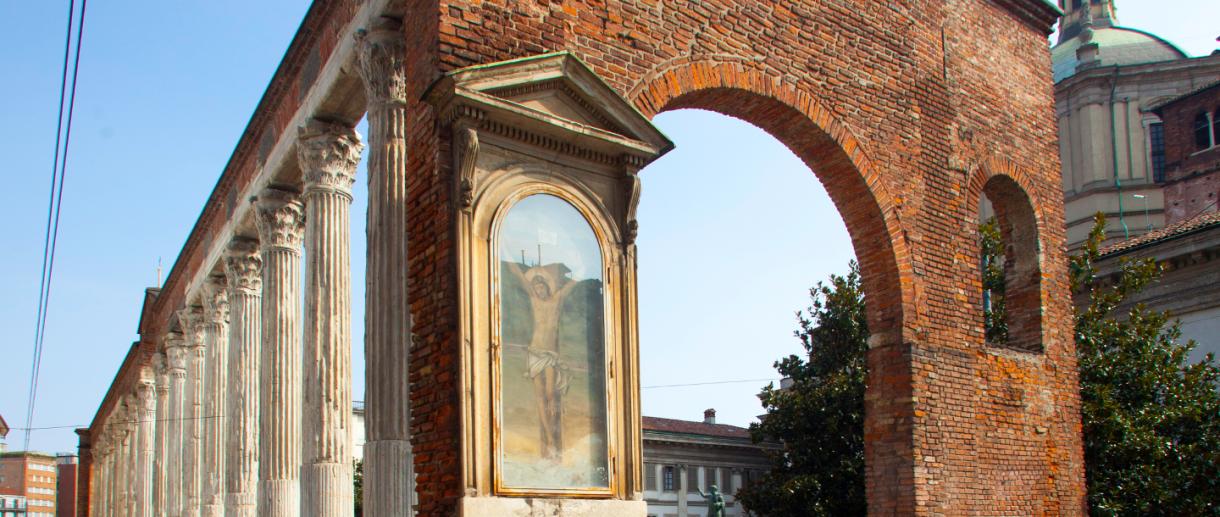
Vittorio Emanuele Gallery
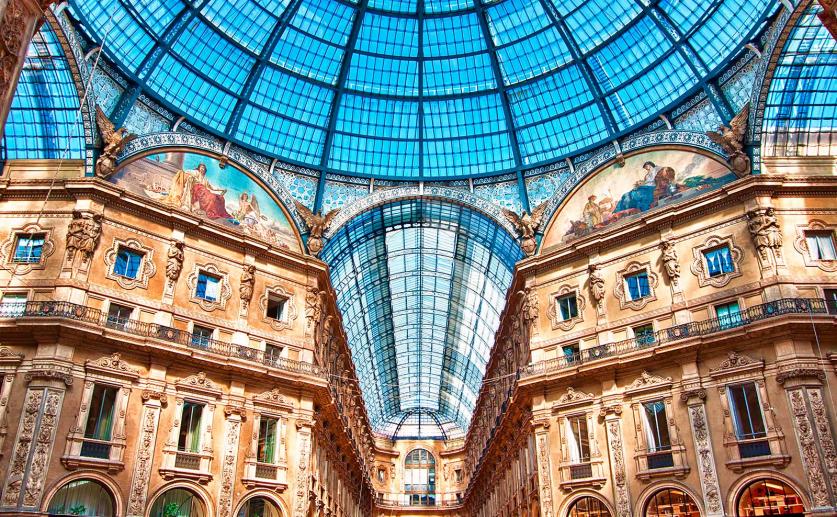
Milano, the Fashion district
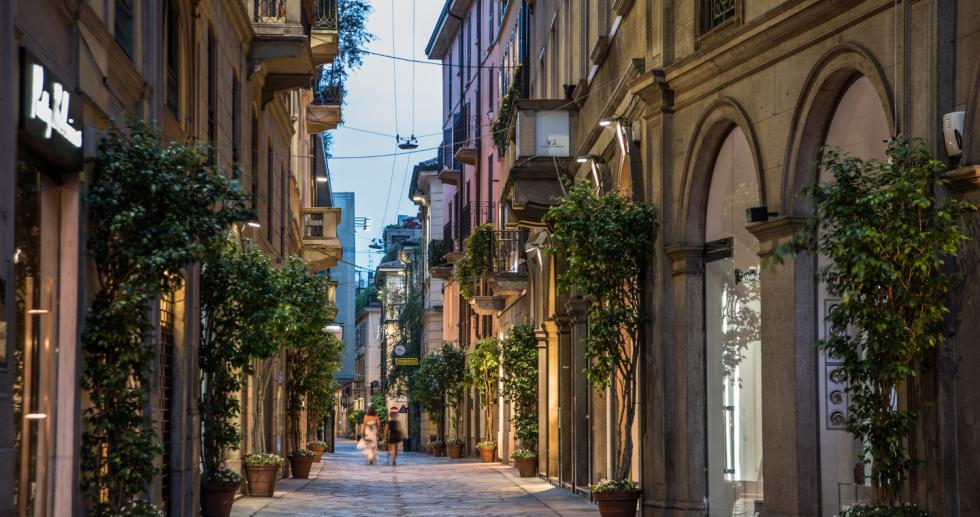
Brera Picture Gallery
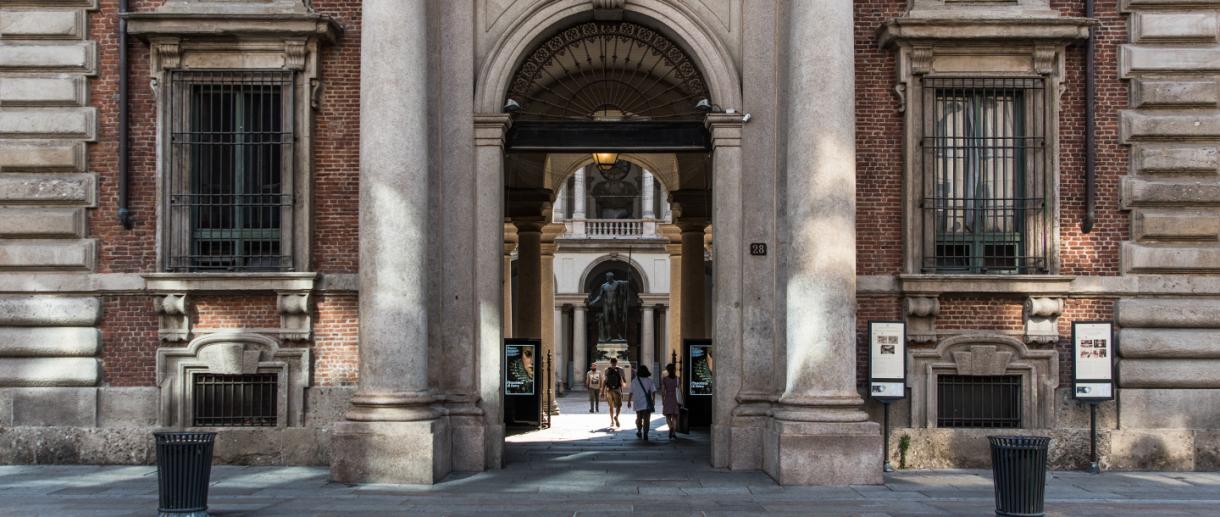
Museo del Novecento
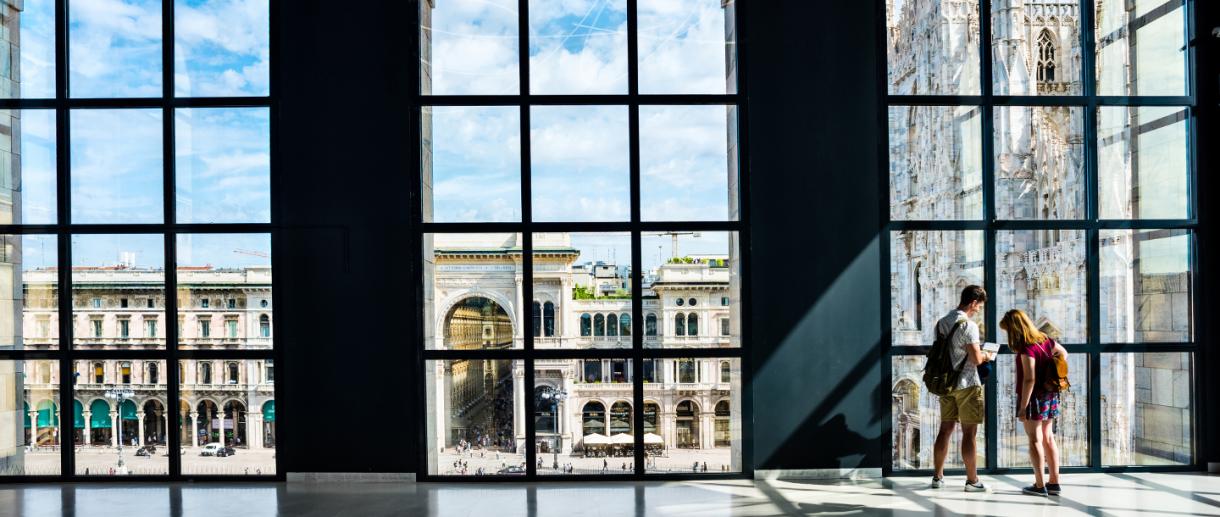
Duomo of Milan
- Religious Tourism
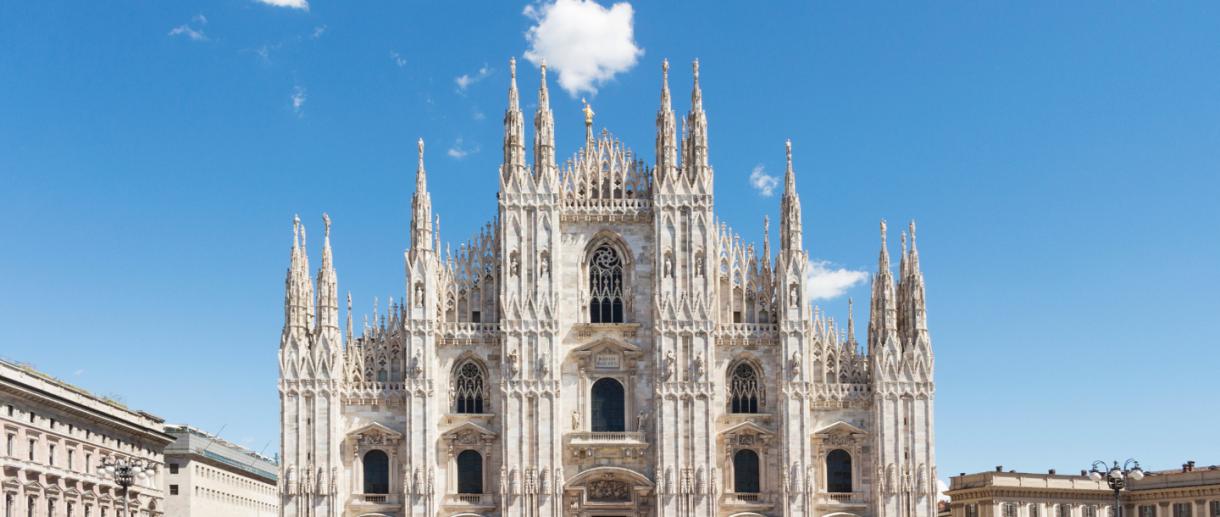
Planetarium
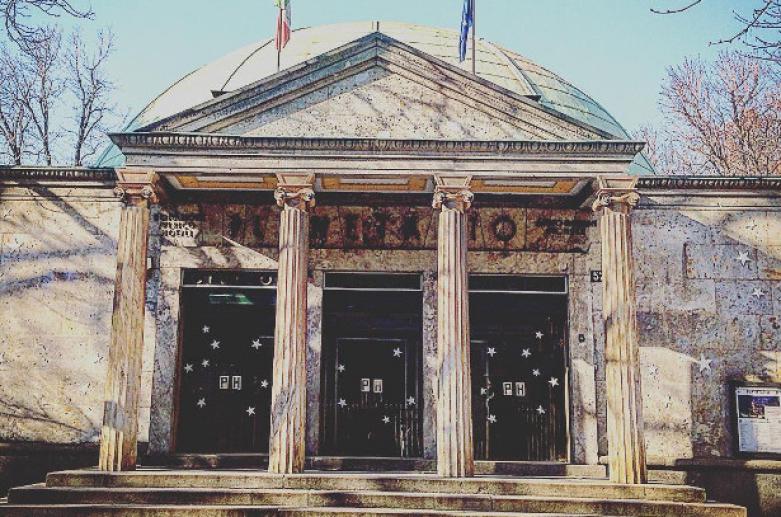
Piccolo Teatro
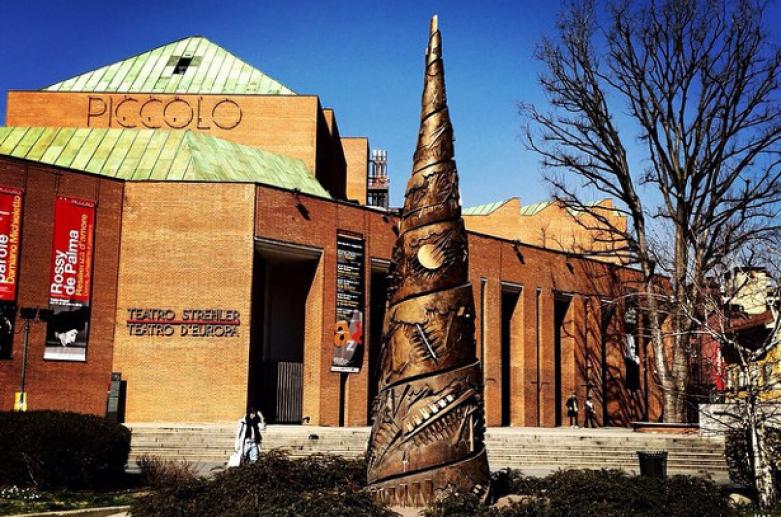
The Last Supper
- Unesco Sites
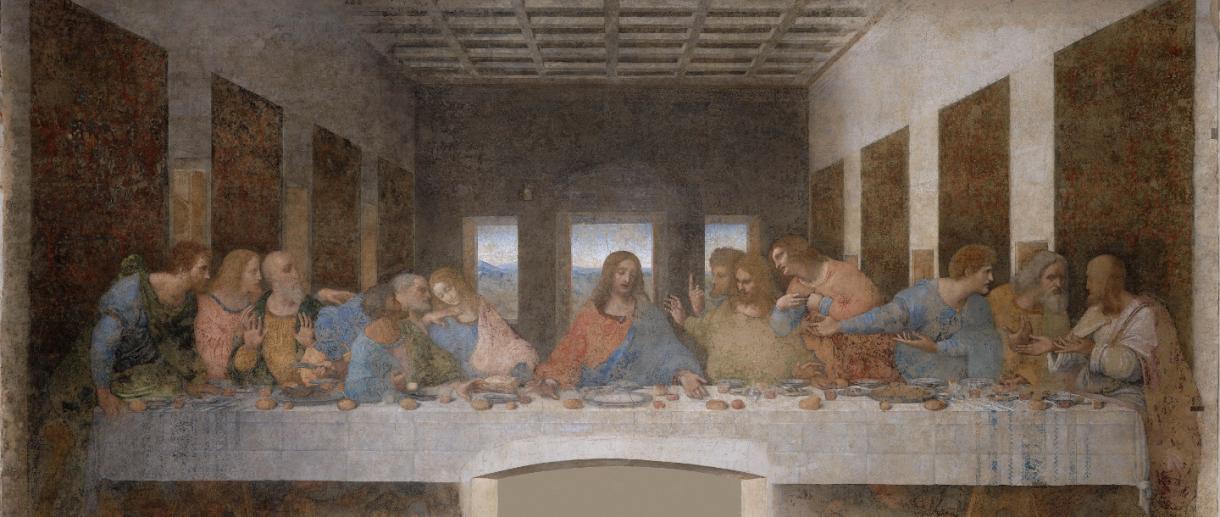
Bagatti Valsecchi Museum
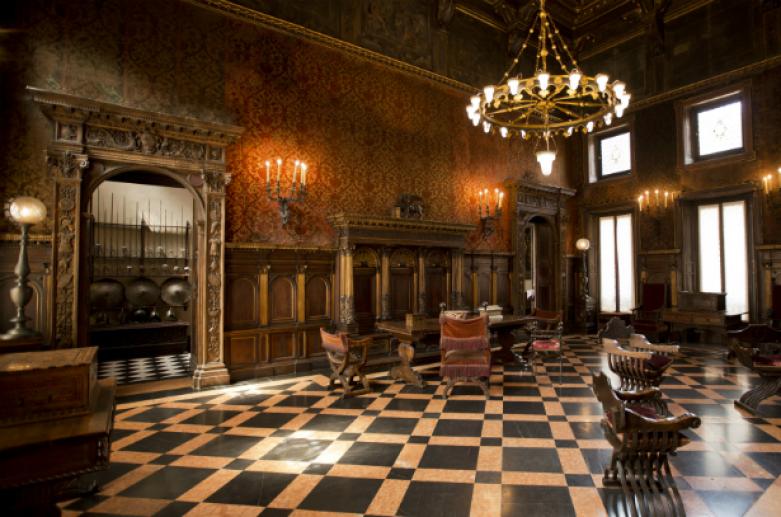
ABBAZIA DI MAGUZZANO
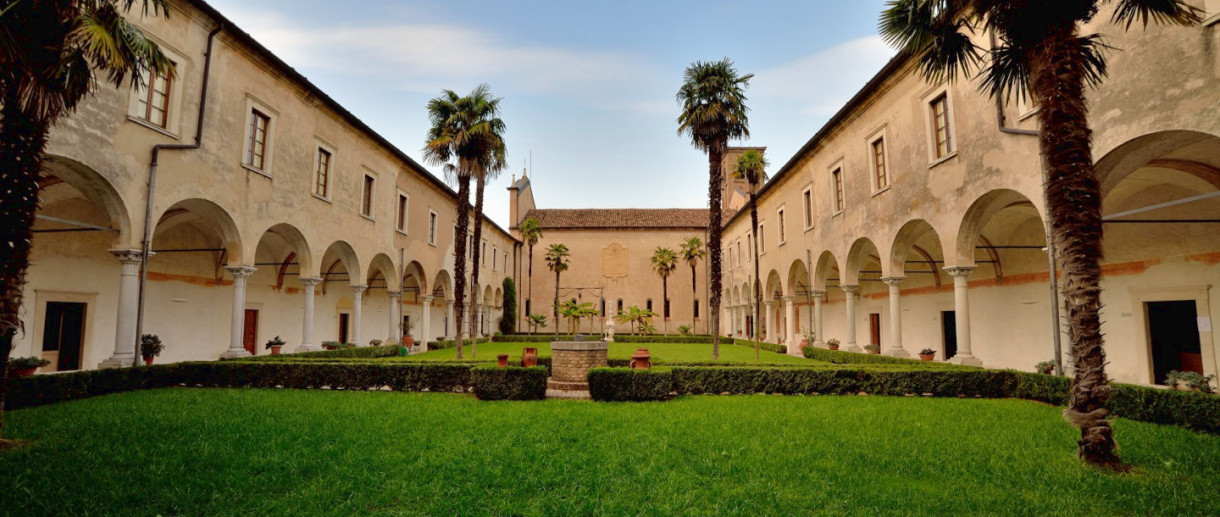
Castello Sforzesco of Milan – The life at Court
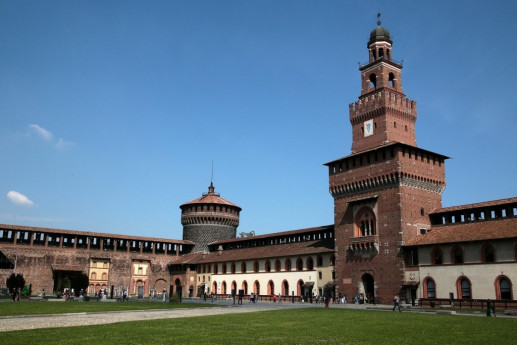
The heart of Milan
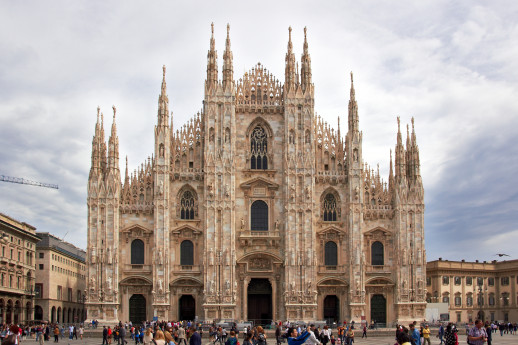
Test Drive a Ferrari 488 on an Italian racing track.
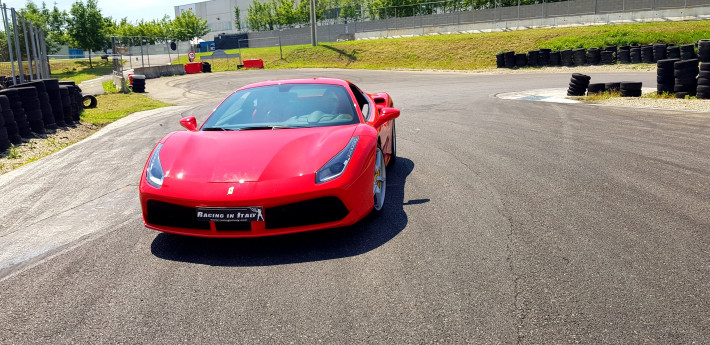
Heli-transfer & panoramic flight
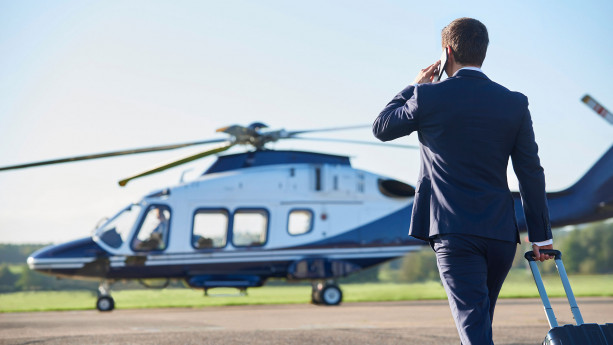
Heli-Wedding
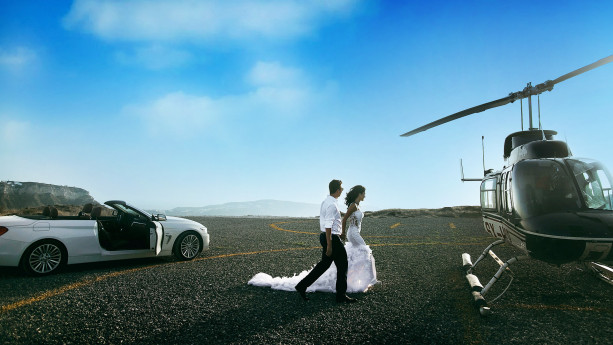
The Underground Milan – The hidden archaeological areas
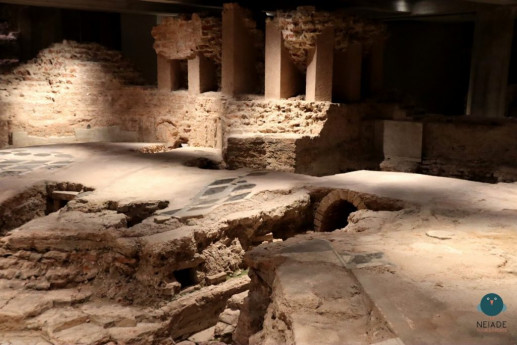
San Maurizio al Monastero Maggiore, a very precious jewel

Cimitero Monumentale in Milan, a real open-air museum

Fashion and Food in Milan
- Food & Wine
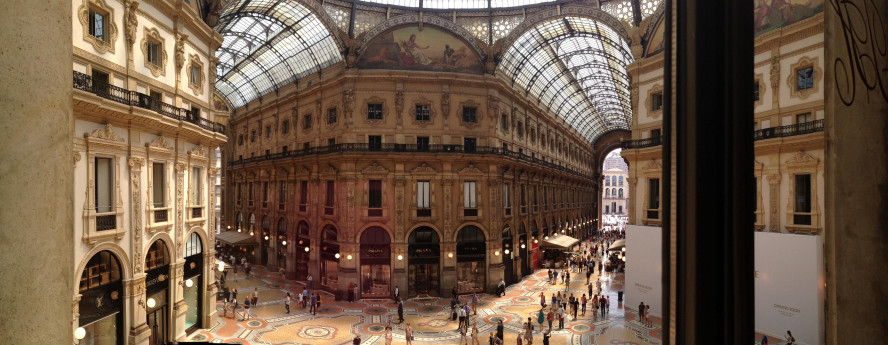
Guided tour of the Basilica di Sant’Ambrogio
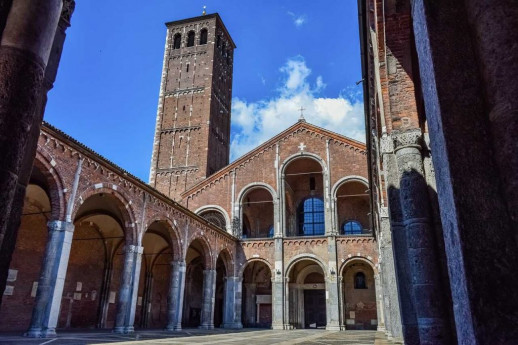
Guided tour of Classic Milan
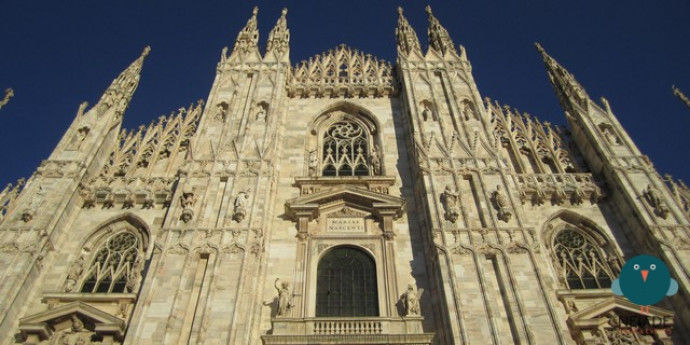
On the Navigli between courtyards and old-fashioned houses
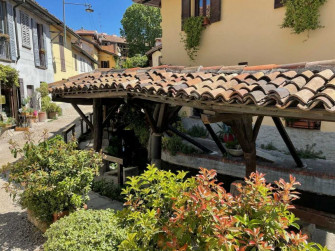
Licensed tour, hiking and experiential Guides in Lombardia
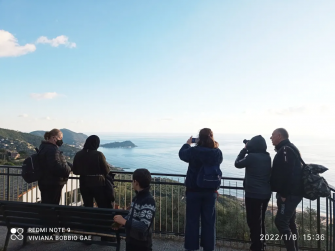
In the heart of Milan - Golf travel package
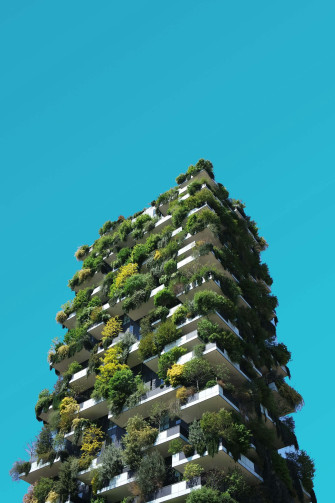
Guided tour by boat on the Navigli of Milan
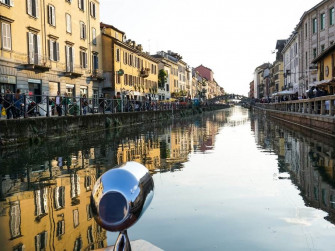
Heli-Wine & Taste Tour
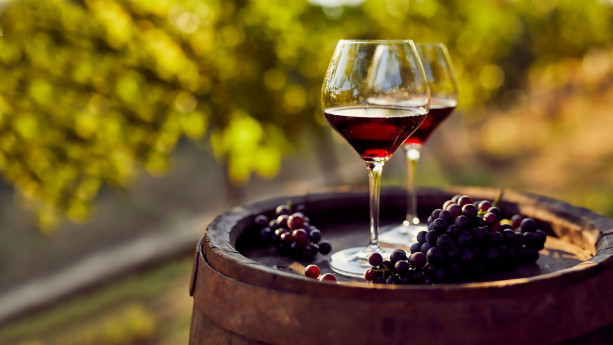
The Last Supper, guided tour to the great work of Leonardo

Longboard course for beginners
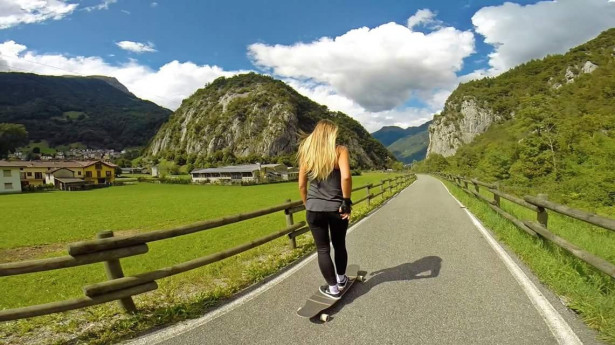
Contemporary architecture in Milan: the Porta Nuova District
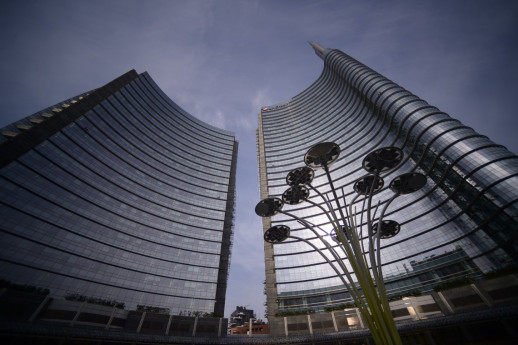
Private walking tour Milan the city of fashion
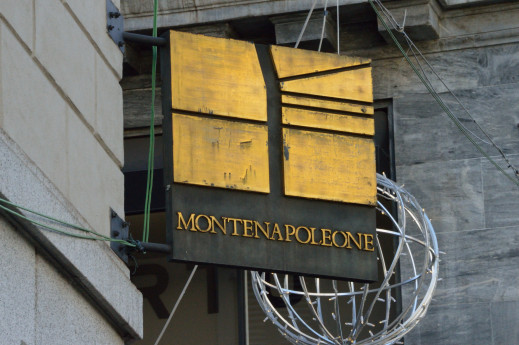
Where to sleep
Carlyle brera hotel.
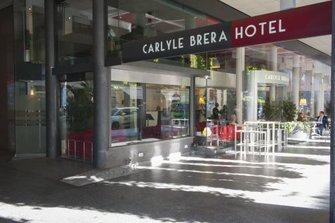
B&B HOTEL MILANO SANT'AMBROGIO
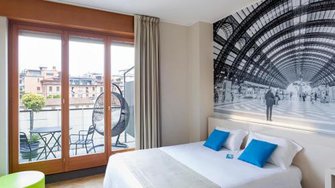
FOUR POINTS BY SHERATON MILAN CENTER
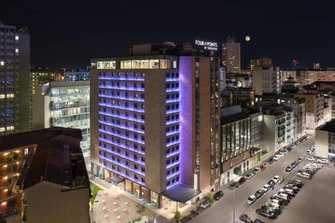
B&B HOTEL MILANO SAN SIRO
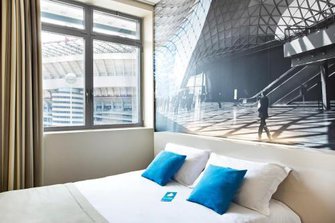
RESIDENCE DOMUS
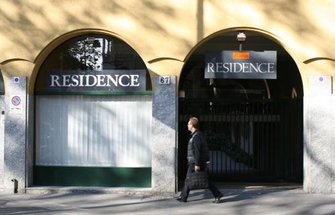
B&B HOTEL MILANO CENISIO-GARIBALDI

HOTEL DEL RIALE
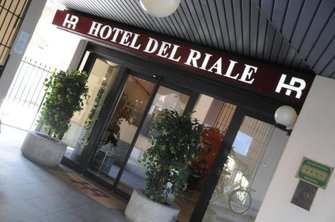
KLIMA HOTEL MILANO FIERE
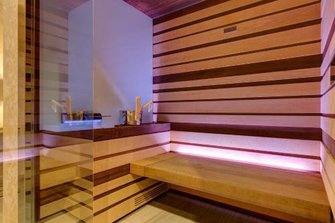
B&B HOTEL MILANO SESTO MARELLI
Sesto san giovanni.

Citta' di Milano
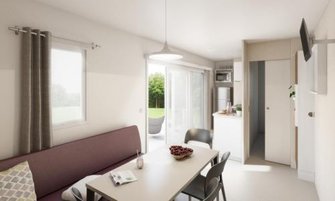
Hotel Tiffany Milano
Trezzano sul naviglio.

Sporting Cologno
Cologno monzese.
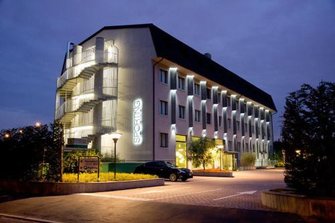
Residenza delle Citta'

Residence Viserba
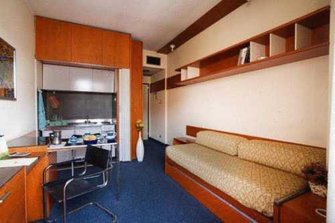
Spadari al Duomo
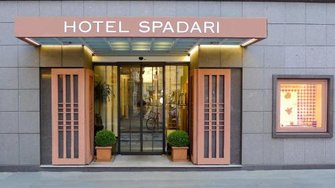
Residence Vip's
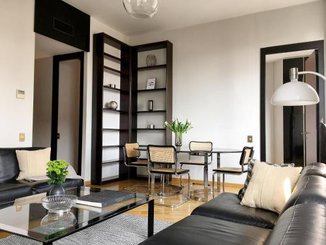
IL TUO VIAGGIO inLOMBARDIA. PRENOTA QUI

How to arrive
BY PLANE Milano Malpensa 50 km , Linate 10 km, Orio al Serio 60 km
BY TRAIN trenord.it trenitalia.com italotreno.it
BY CAR Autostrade A4, A1, A7, A8
How to move
PUBLIC TRANSPORT atm.it
BIKE SHARING bikemi.com mobike.com/it
SCOOTER SHARING mimoto.it
CAR SHARING car2go.com enjoy.eni.com e-vai.com site.sharengo.it drive-now.com ubeeqo.com
Information
INFOMILANO GALLERIA Galleria Vittorio Emanuele II, 11 T. +39 02 88455555
WIFI OpenWifiMilano
FIND OUT MORE turismo.milano.it
Useful numbers
EMERGENCY 112
POLICE T. +39 02 0208
POLICE HEADQUARTERS T. +39 02 62261
ACI ROADSIDE ASSISTANCE MILAN T. 803 116
EMERGENCY CROCE VERDE T. +39 02 89406035
Choose Your Art City
- LAKE ISEO and FRANCIACORTA
- LAKE MAGGIORE
- VALLE CAMONICA
- Active & Green
- Art & Culture
- Bicycle Touring
- Food & Wine
- Find your experiences
- Lake Iseo & Franciacorta
- Lago Maggiore
- Valle Camonica
Search your event
Museo del violino, piazza marconi, 5, cremona.
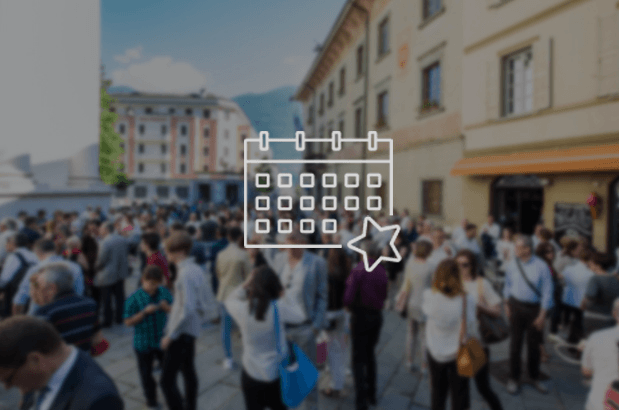
Itineraries
- Mountain bike
- Motorcycling
- Snow Shoeing
- Find your itineraries
- General info
Organise your trip
Subscribe to the newsletter #inlombardia, fill out the form below and subscribe to our newsletter to be informed about news, events, and happenings in lombardy., live your experience #inlombardia, select your destination, select your destination #inlombardia, enter a destination. discover attractions, events, experiences and services to organise your trip #inlombardia., log in to your reserved area.
Register as an operator
to upload your tourist offers and discover B2B opportunities
Discover the new functions in the " plan " area
The PLAN area has been improved and new services have been added. Now you can consult travel options for air and rail tickets and purchase them on in-lombardia.it in collaboration with our trade partners.

- AlwaysOn Show
Visit Lombardy
theonemilano invites its exhibitors and visitors to visit lombardy, a region full of interesting culture, art, landscapes and fashion..

Your next Italian gateway? #inLombardia
Lombardy is the italian region with the greatest number of unesco sites, where art and history mingle. it has plenty of lakes in which to enjoy all kinds of water activities, and mountain ranges offering exciting trekking routes and winter sports. in lombardy, you can relax in cosy spas or marvel at the region’s extraordinary museums. moreover, you can savour the pleasure of discovery, enjoying the territory’s refined traditional cuisine and exquisite wines. in lombardy, there is no room for boredom, with its countless exhibitions, international events, theatres and museums offering a varied cultural programme. lombardy, an activity-packed tourist attraction,twelve months a year., you can explore and collect your trips throughout the region via the #ilpassaporto #inlombardia or by downloading the app inlombardia pass from in-lombardia.it/pass-app, find out more on: in-lombardia.it passaporto.in-lombardia.it/en.
with the contribution of:

See the #inLombardia Gallery
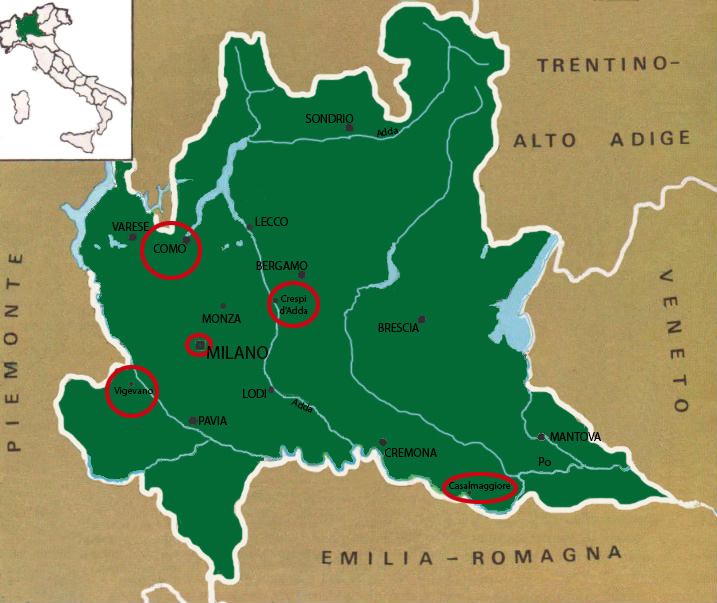
Fashion in Lombardy: not just Milan
Milan is an international symbol for fashion and design. For the fashion world Milan means Fashion Week and Fashion Shows, the “Quadrilatero della Moda” fashion district and its shopping, Exhibitions for all the fashion sectors, from fabric to prêt-à-porter, from leather to fur, from shoes to accessories and eyewear.
But there’s more to Lombardy than just Milan. There are many very interesting tourist destinations In Lombardy, including manufacturing districts with fashion-focused businesses whose roots go back in time. Como, for example, famous for its lake but also for its textile manufacture and printing, in particular silk. Vigevano, famous for its wonderful square and historic footwear district; Crespi d’Adda, a UNESCO site, a village built around a textile factory; and Casalmaggiore, the home of gold-plated bijoux,…
TheOneMilano recommends its visitors and exhibitors visit some of Lombardy’s tourist destinations, especially the sites famous for fashion. You can visit these places by yourself or by taking part in the initiatives organised directly by TheOneMilano.
Fashion and Tourism in Lombardy
Some of the destinations chosen by theonemilano.
Of all the interesting things to see in Lombardy, TheOneMilano has focused on destinations that offer themed fashion and tourism itineraries and it has collected all the information you need to organise and make the most of your visit. The first destinations giving exhibitors and visitors to TheOneMilano from all over the world the chance to learn more about the area and fashion are: Como and the Educational Silk Museum, Vigevano and the International Museum of Footwear, and Crespi d’Adda , a village built around a textile factory and Casalmaggiore with the Bijou Museum.
Como, city of silk
Como’s most important sights to visit, for people whose main interests are textile and fashion, are the Silk Museum (just 1 km from the historical city center) and the Antonio Ratti Foundation (FAR) Textile Museum , in Villa Sucota on the road to Cernobbio.
If you’re visiting Como, theOneMilano recommends going for a stroll along the old town centre’s historic streets , with its prestigious civil and religious monuments and shops, with focus on the specialized in silk fabrics and accessories ones, and to go to the Villa Olmo , an historic villa looking out over the lake.
A boat trip is another must, to see all the well-to-do historic and residential villas from the lake.
For more information about things to see in Como, click here
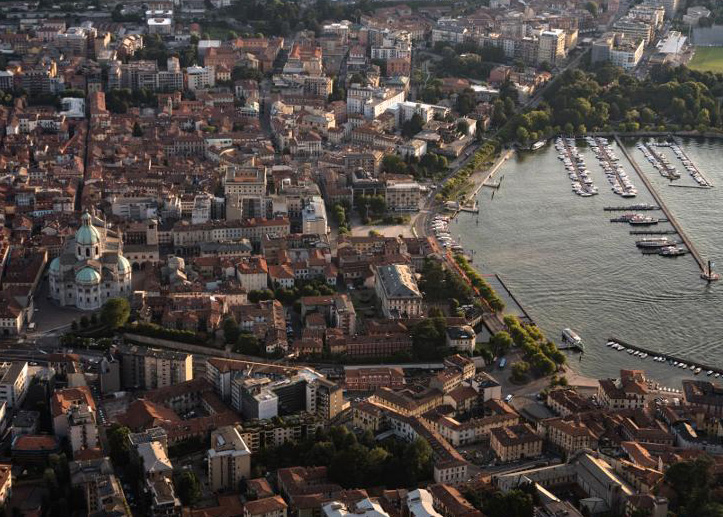
ph: www.in-lombardia.it
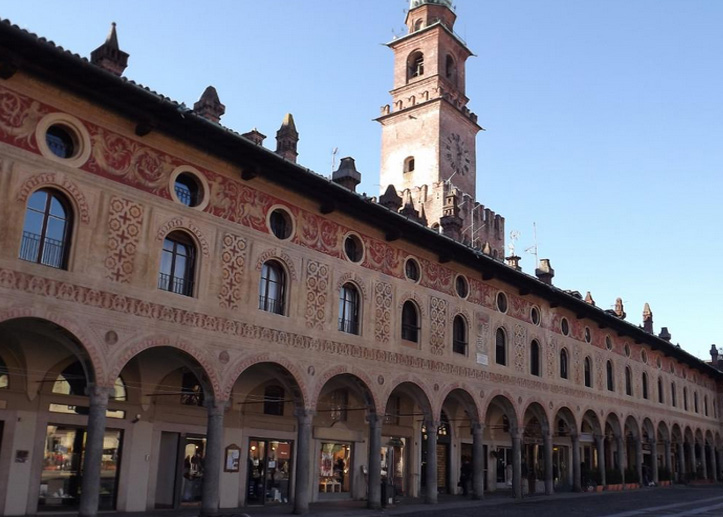
ph:SaeComunicazione
Vigevano and the Museum of Footwear
Just under an hour by car from Milan you’ll find one of Renaissance Italy’s most beautiful squares: the Piazza Ducale in Vigevano .
Completely encircled by porticos with shops, bars and restaurants, it is the historic and modern heart of the city. It is very popular with locals, and ideal for tourists as the many prestigious buildings looking out over this architectural gem include the Torre del Bramante , the Duomo and the Castello Sforzesco , which can all be visited by tourists and are extremely interesting from an historical and artistic perspective.
But TheOneMilano recommends that its visitors and exhibitors from the world of fashion head for the International Museum of Footwear .
For more information about things to see in Vigevano, click here
Crespi D’Adda, the textile village
A UNESCO World Heritage Site since 1995 as an “Exceptional example of the phenomenon of workers’ villages, the most complete and best preserved in Southern Europe”, the Crespi d’Adda Village is a genuine, complete town built from scratch at the end of the 19th century by owner of a textile factory.
Only the factory workers could live in the Village, and everyone’s life revolved around the factory, its pace and its demands. The village is still inhabited and it has retained all its architectural charm. You may visit by yourself or on a guided tour.
It is not possible to visit the factory, which closed in 2003, or the villa-castle, but there is a photo and model exhibition of Crespi, as well as information rooms projecting videos and cotton workshops.
For more information about Crespi d’Adda click here
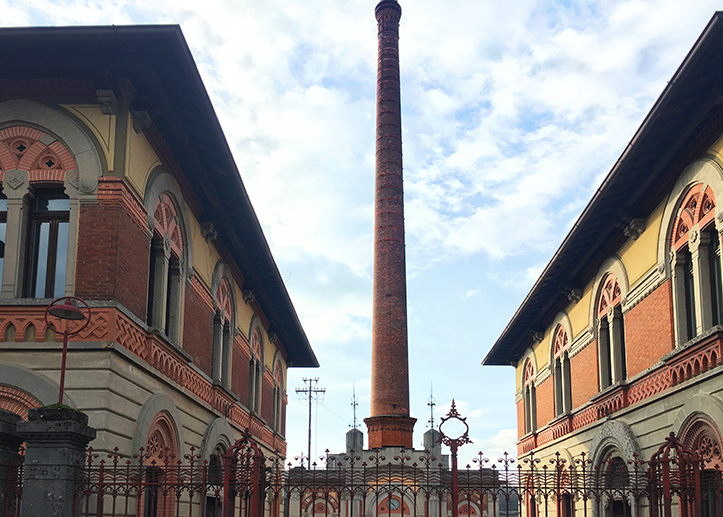
ph: www.museodelbijou.it
Jewels and Bijoux between Milan and Casalmaggiore
TheOneMilano suggests a journey in two stages, from Milan to the borders with Emilia Romagna region, among jewels and bijoux.
In Milan, the attention is focused on the Jewellery Room of the Poldi Pezzoli museum , one of the most important European house-museums where internationally renowned art masterpieces are on show, together with historical objects (textiles, clocks, weapons…). The Jewellery Room is dedicated to a preciuos treasure made of sacred items, enamels, jewels, objects de vertu: a collection unique for the rarity and quality of many pieces.
About two hours from Milan, the small town of Casalmaggiore offers picturesque views of the Po river and a very interesting venue: the Bijou Museum , where the visitor can find the samples of objects in gold-plated metal and the bijoux produced in the area starting from the end of the 1800s until the mid-70s, together with machinery, tools and photographs of the local production.
For more information about things to see in Casalmaggiore, click here

- Privacy policy
- General Conditions of Use
- Cookies policy
You have selected
Experiences, monuments lodi.
- Art & Culture
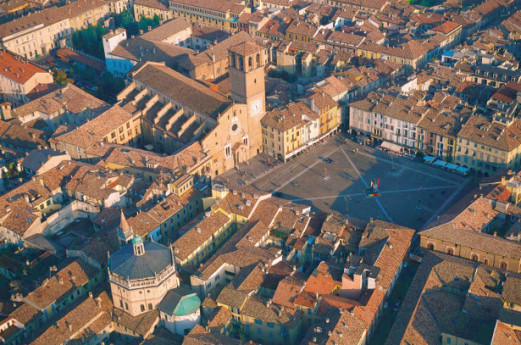
Tempio dell’Incoronata
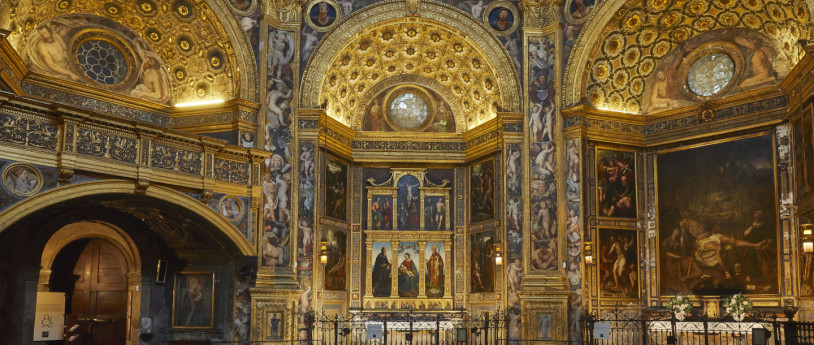
Autumn in Lombardy: Four events for everyone
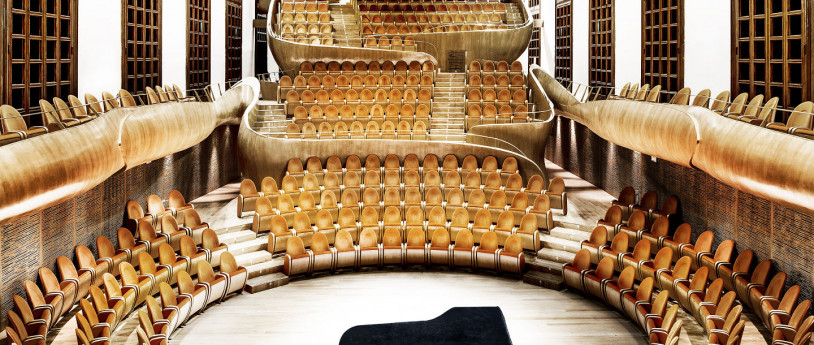
Excursions to Zelo Buon Persico
- Active & Green
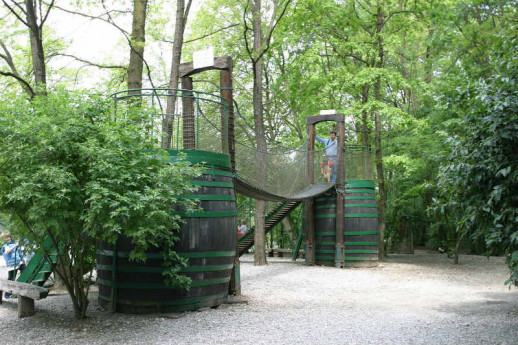
A visit to Cerreto Abbey
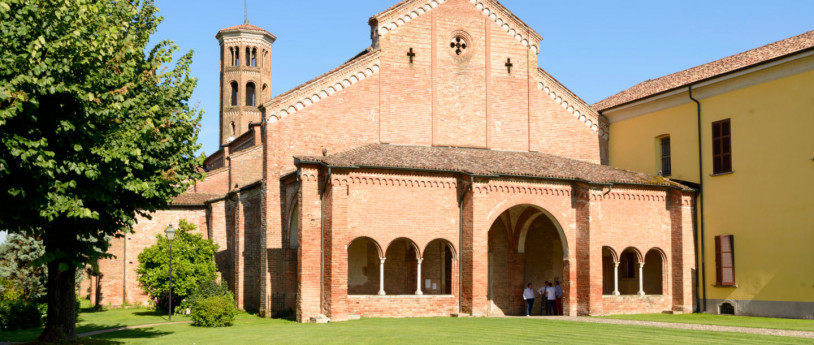
Lombardy by bike: five family-friendly routes
- Cycle Tourism
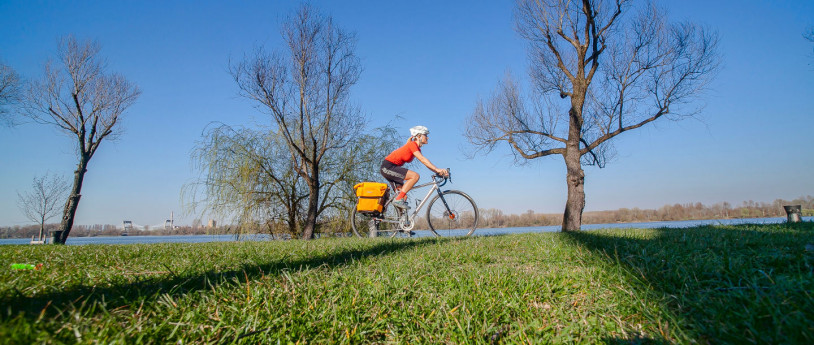
November in Lombardy: 6 events for the weekend
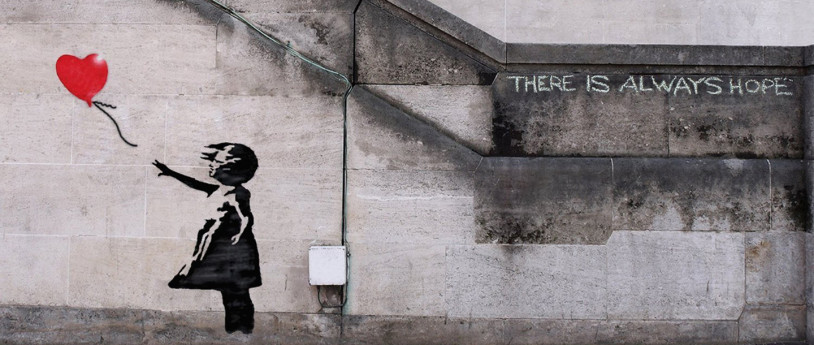
Festival of Ethical Photography
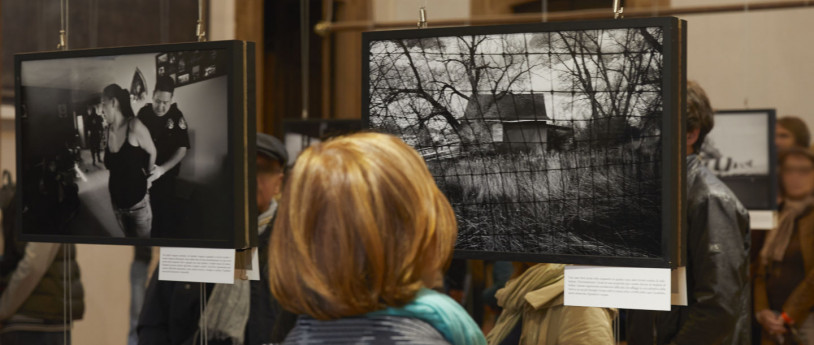
- Parchi e Fiumi
- Religious Tourism
Choose Your Location
- Active & Green
- Art & Culture
- Bicycle Touring
- Food & Wine
- All experiences
Choose where to live your experiences
Search your event.
- General info
Organise your trip
Live your experience #inlombardia, log in to your reserved area.
Register on the website
to manage your profile, your preferences and your stored contents
Register as an operator
to upload your tourist offers and discover B2B opportunities

COMMENTS
Planning a trip to Lombardy? Discover breathtaking attractions of our region, timeless scenery and upcoming events of such an enchanting gem in the North of Italy. Find all information on #inLombardia, the Official Tourism Website for Lombardy.
What All Active & Green Art & Culture Villages Cycle Tourism Food & Wine Golf Itinerari Lakes Leonardo Lifestyle Mountains Music and show Navigli Parks School Unesco Sites Sport Top Events Tourism ... Design Week 2024 a Palazzo Lombardia Palazzo Lombardia Piazza Città di Lombardia, Milano. 15/04/2024 - 21/04/2024. Highlights. Salone del Mobile ...
If the combo of - historic towns and cities, UNESCO World Heritage Sites, and lake & mountain views - sounds tempting to you, you'll love this list of some of the best places to visit in Lombardy, Italy (Italian: Lombardia).Each Italian region is a world in itself, and trying to sum up its essence in a few sentences is impossible, but hopefully, this post will give you an enticing ...
2023. 1. Duomo di Milano. 58,761. Religious Sites. Admission tickets from $22. The centerpiece of Milan, the Duomo is one of Europe's greatest architectural and cultural landmarks. As Italy's largest church and one of the largest in the world, it took over 600 years to build.
This article was written in collaboration with iambassador for the 'Viaggio Italiano' Project (Italian National Tourist Board, Ministry of Tourism & Conference of Regions and Autonomous Provinces). All opinions and newfound love of Lombardia borghi remain entirely my own.
7 - Val Camonica: nature, rupestral art and ancient finds. The Val Camonica is a large flat area between the provinces of Brescia and Bergamo, which coincides with one of the largest valleys in Lombardy. The Val Camonica is famous for the rupestral art that it houses and that earned it, in 1979, the inclusion among the UNESCO World Heritage Sites.
Gastronomic tourism: a tour to discover the cheeses of Lombardy These itineraries, as well as dedicated festivals, are a perfect way to discover the cheeses of Lombardy. Some of Italy's most famous dairy products, which are also well known abroad, originate from this area. ... Lombardia , Pavia. Cultural cities Like. Milan: much more than the ...
6. Hike in the Mountains. While Lombardy may often bring to mind the glitz and glamour of Milan and the lakes, some of the most authentic experiences can be found just a short train ride, or even a stroll, from the bustling centers. Hiking in Lombardy often means hiking in the trails of the breathtaking pre-alps.
Culture and Tourism. -. The Lombard territory features natural treasures of great charm, alongside an artistic and cultural heritage of great value. Thanks to its beautiful mountains, lakes, parks and nature reserves, a patrimony of over 300 museums, works of art and monuments scattered throughout its territory, Lombardy attract over 37 million ...
Cultural Tourism Lombardy. From the rock engravings of Valle Camonica to the Capitolium and Roman Forum in Brescia. The great heritage of Lombardy passes from the villas to the fortresses perched over lakes or plains, to the Certosa di Pavia, Leonardo Da Vinci's The Last Supper, and Michelangelo's Pietà Rondanini at Milan's Sforza Castle.
6. Admire Lombardy's churches and cathedrals. Duomo di Milano. Of course, no visit to Lombardy is complete without visiting its capital city and the Duomo is always in every itinerary in Milan. Checking out these churches are among the best things to do in Lombardy.
Surrounded by the rising foothills of the Alps, Lombardy is a region rich in culture, cuisine and castles. Famed for the Duomo of Milan, Lake Como and the Livigno ski resort, this enclave of northern Italy rarely fails to impress - whatever the season. Once you've gotten over the jaw-dropping views of the Alps, you'll realise that the Lombardy region has much more than just spectacular ...
Lombardy ( Lombardia in Italian and Lombard) is a northern region of Italy, and with 10 million people is the most populous one. Producing a fifth of Italy's GDP, it is also the mightiest economically. Geographically, Lombardy encompasses both Alps and Prealps in the north, and relatively flat plains in the south along the river Po and its ...
14. Lake Iseo. Lying in between both Brescia and Bergamo is the magnificent Lake Iseo. Far less crowded than those of Garda, Como and Maggiore, it is surrounded by lush green mountains and medieval towns. The fourth largest lake in Lombardy, its crystal clear waters are fed by the Oglio River.
About Lombardy. Milan is the prime draw in Italy's most prosperous province. The Cathedral, La Scala opera house and Santa Maria delle Grazie, home of da Vinci's "Last Supper," are just some of the sights. Equally fascinating is the belle Epoque splendor of 19th-century Galleria Vittorio Emanuele II.
Interestingly, Lake Garda is part of three regions of Italy. The west half of the lake belongs to Lombardy, while the east half is part of Veneto. The very northern part of Lake Garda is in Trentino-Alto Adige. There is an abundance of beautiful towns along Lombardy's coast of Lake Garda. My favorite is Sirmione.
#inLombardia c'è tanto da scoprire! Organizza la tua vacanza tra luoghi d'incanto, atmosfere senza tempo e un ricco patrimonio di arte, natura e sapori. Tutte le informazioni utili sul Sito Ufficiale del Turismo della Regione Lombardia.
Here are ten reasons to visit Lombardy - the Italian region that has the worldwide famous city of Milan as its capital. Known as Lombardia in Italian, you will find it right in the centre of the cuff of the boot of Italy. From this top location, it plays a leading role in the country's commerce, industry, and cultural life.
InLombardia, tourism Information, cities of Bergamo, Brescia, Como, Cremona, Lecco, Lodi, Mantova, Monza, Pavia, Sondrio and Varese. Official Tourism Offices; ... Lombardia in a Day was a recent tourism hook by the official tourism information website of the region ...
Parco delle Orobie Bergamasche, roughly 45 minutes north of the town of Bergamo, is a protected natural park of 70,000 hectares at the foot of the Alps that border Switzerland.The wider region is referred to as Valtellina, which is famous for its delicious cheeses. It has peaks of over 3,000 metres (9,842ft) and offers over 1,000km (621 miles) of trails with varying difficulty ratings.
T. +39 02 62261. ACI ROADSIDE ASSISTANCE MILAN. T. 803 116. EMERGENCY CROCE VERDE. T. +39 02 89406035. Come with us, let the courtains rise upon the spectacles of outstanding theaters in Milan, a city that offers a wide range of options to enjoy cultural tourism: find out more at the Official Tourism Website of Lombardy!
in-lombardia.it passaporto.in-lombardia.it/en. with the contribution of: See the #inLombardia Gallery. ... There are many very interesting tourist destinations In Lombardy, including manufacturing districts with fashion-focused businesses whose roots go back in time. Como, for example, famous for its lake but also for its textile manufacture ...
Concerts, sports competitions, major exhibitions, culinary events. Discover September's unmissable events in Lombardy. Lifestyle.